Another enjoyable night with Bideford & District Angling Club a pleasure to be a part of the evening. A very good attendance this year with a really positive vibe.



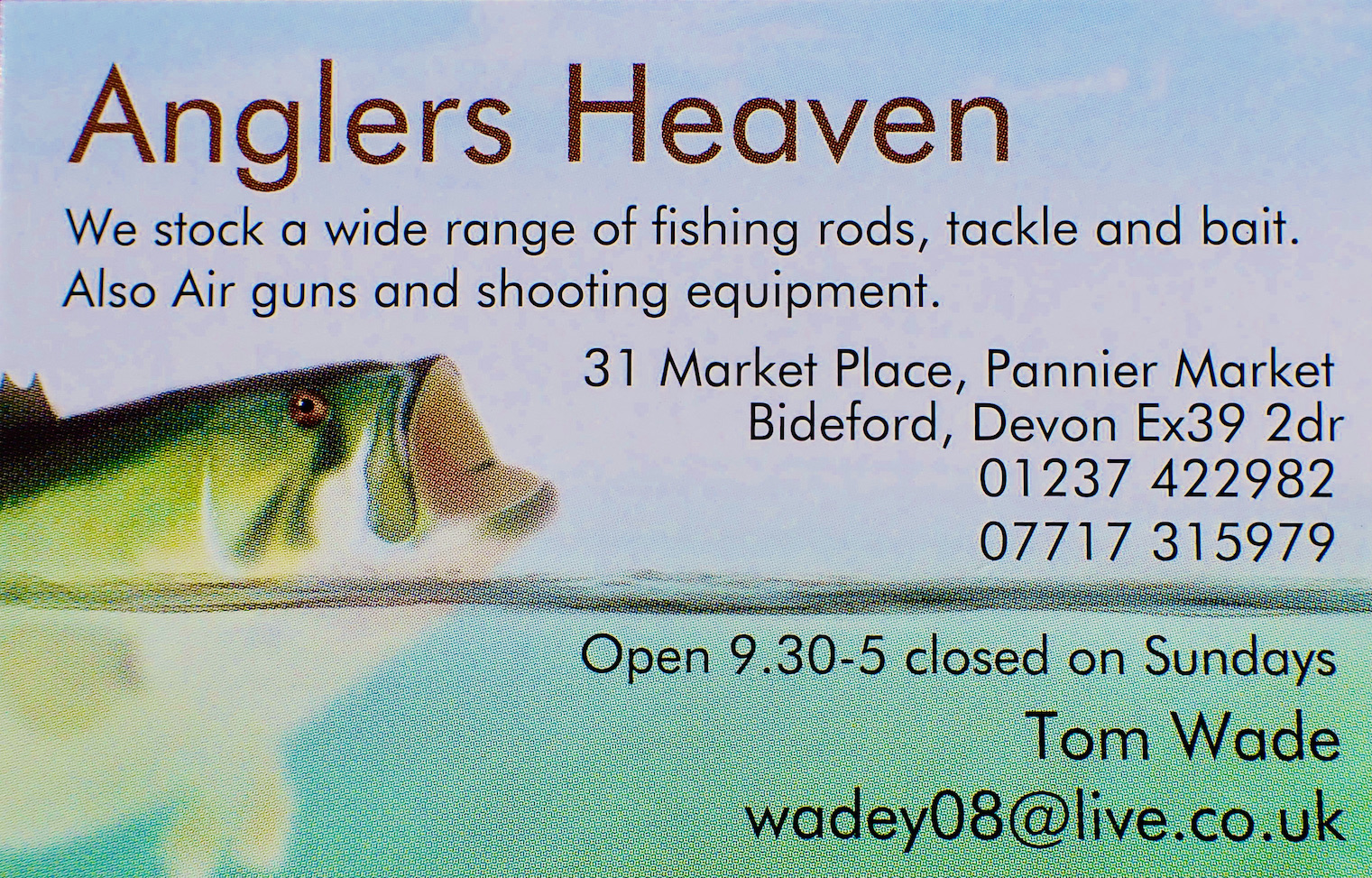






























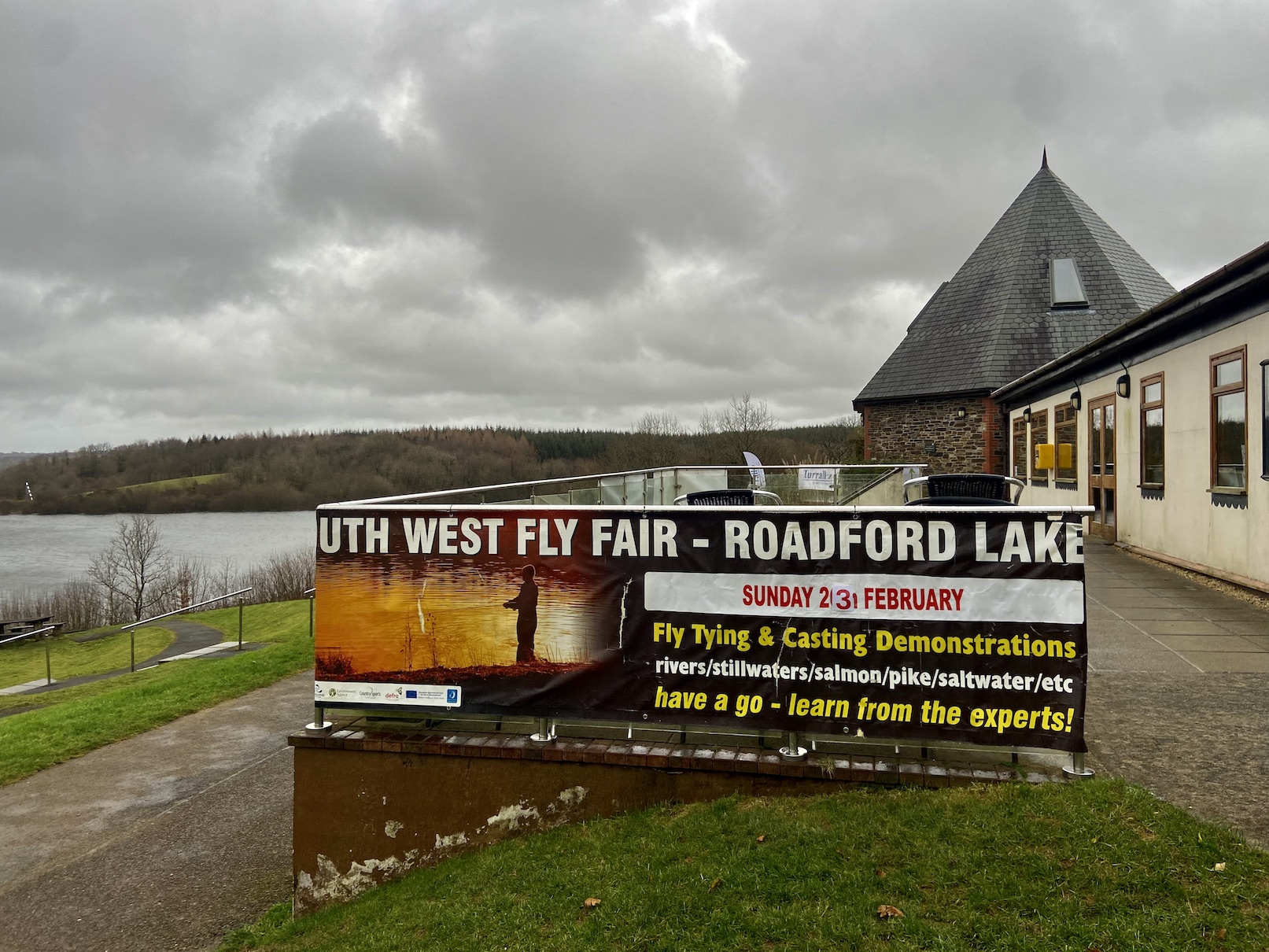
The South West Fly Fair hosted by South West Lakes Trust and held at Roadford Lake has become a popular fixture in the West Country angling calendar and is seen by many as the curtain raiser to the season ahead. I have been attending the event for many years and always enjoy the opportunity to catch up with familiar faces and forge further connections within the fly fishing community. The main sponsors for this year’s event were once again Turrall, Chevron Hackles and Snowbee.
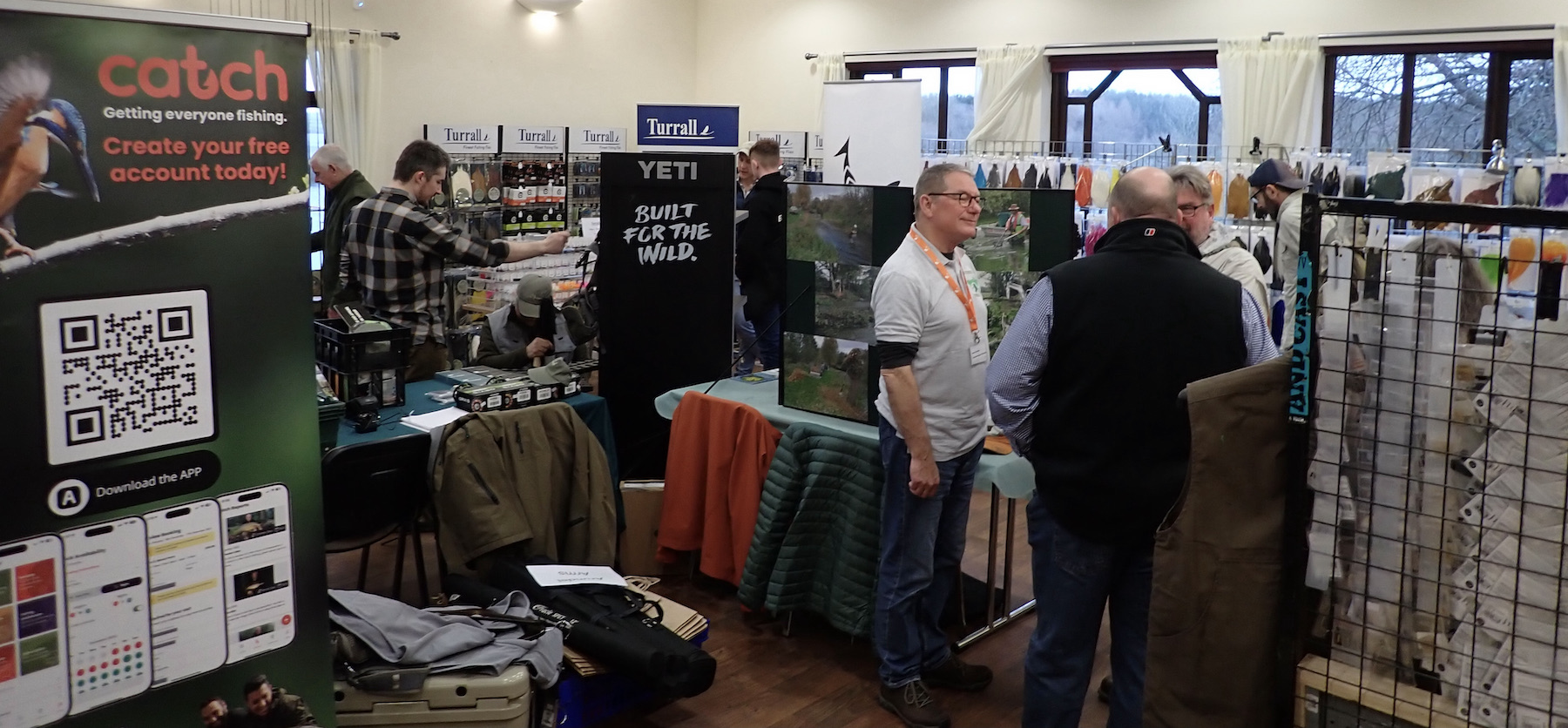
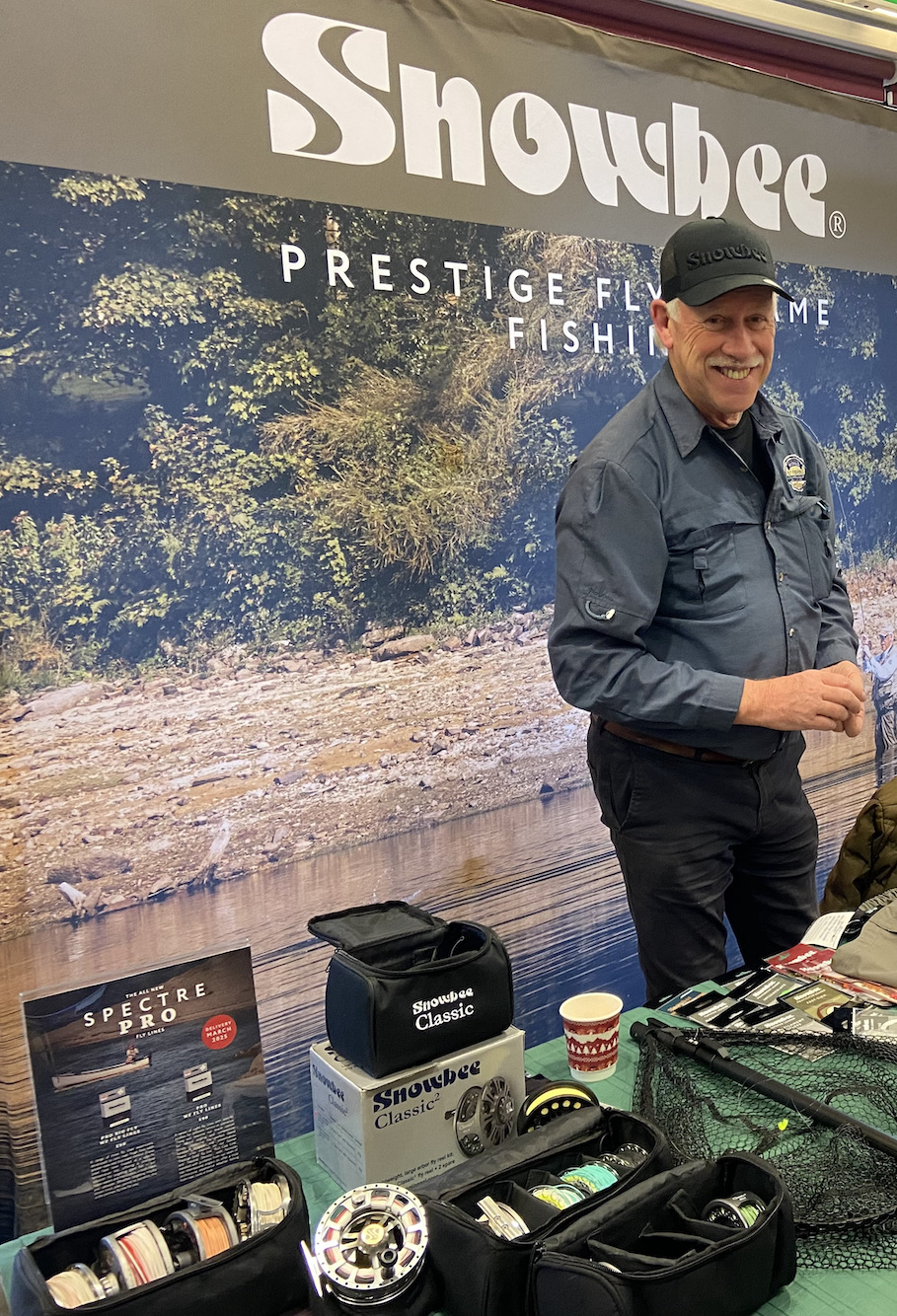
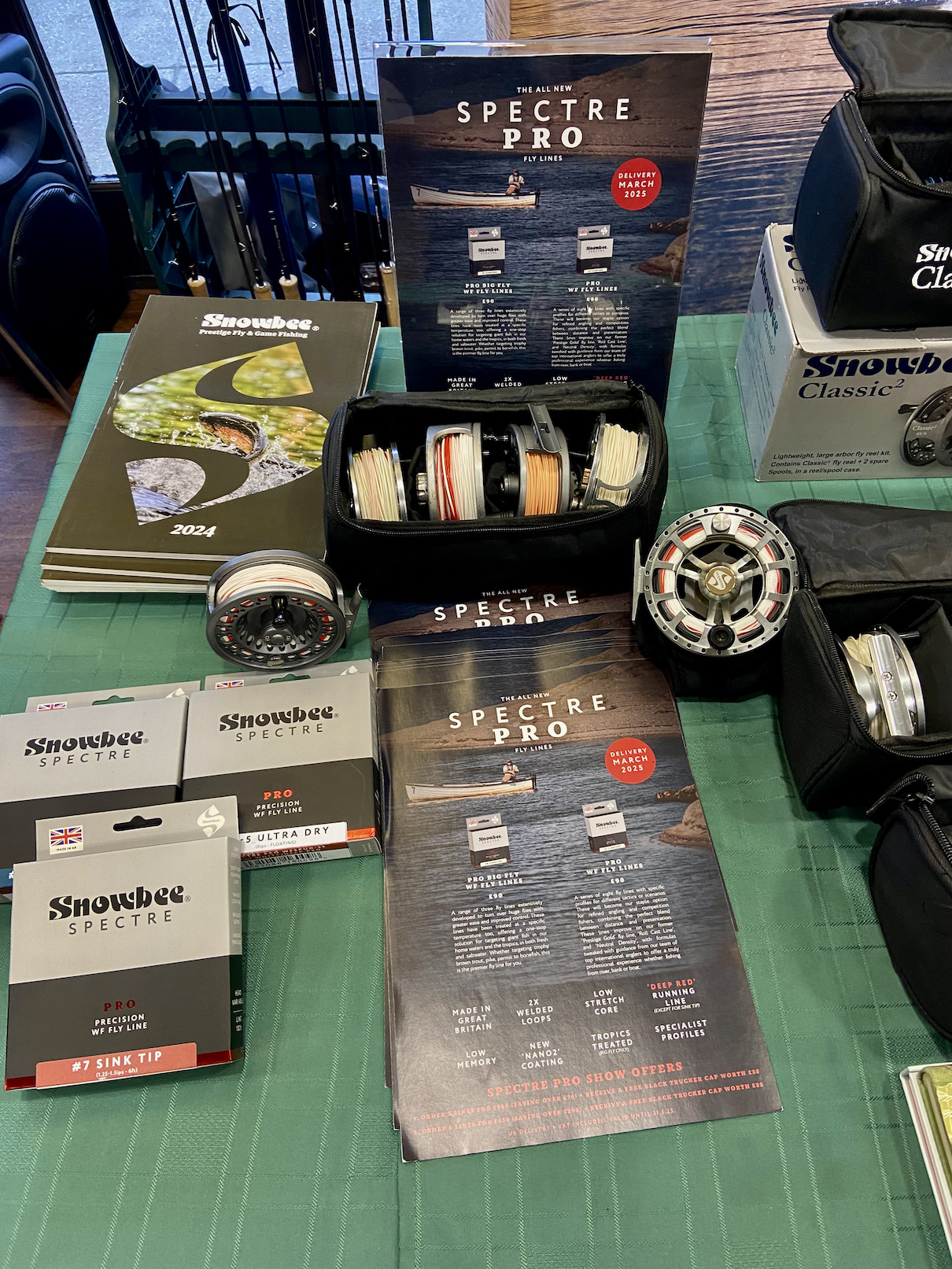

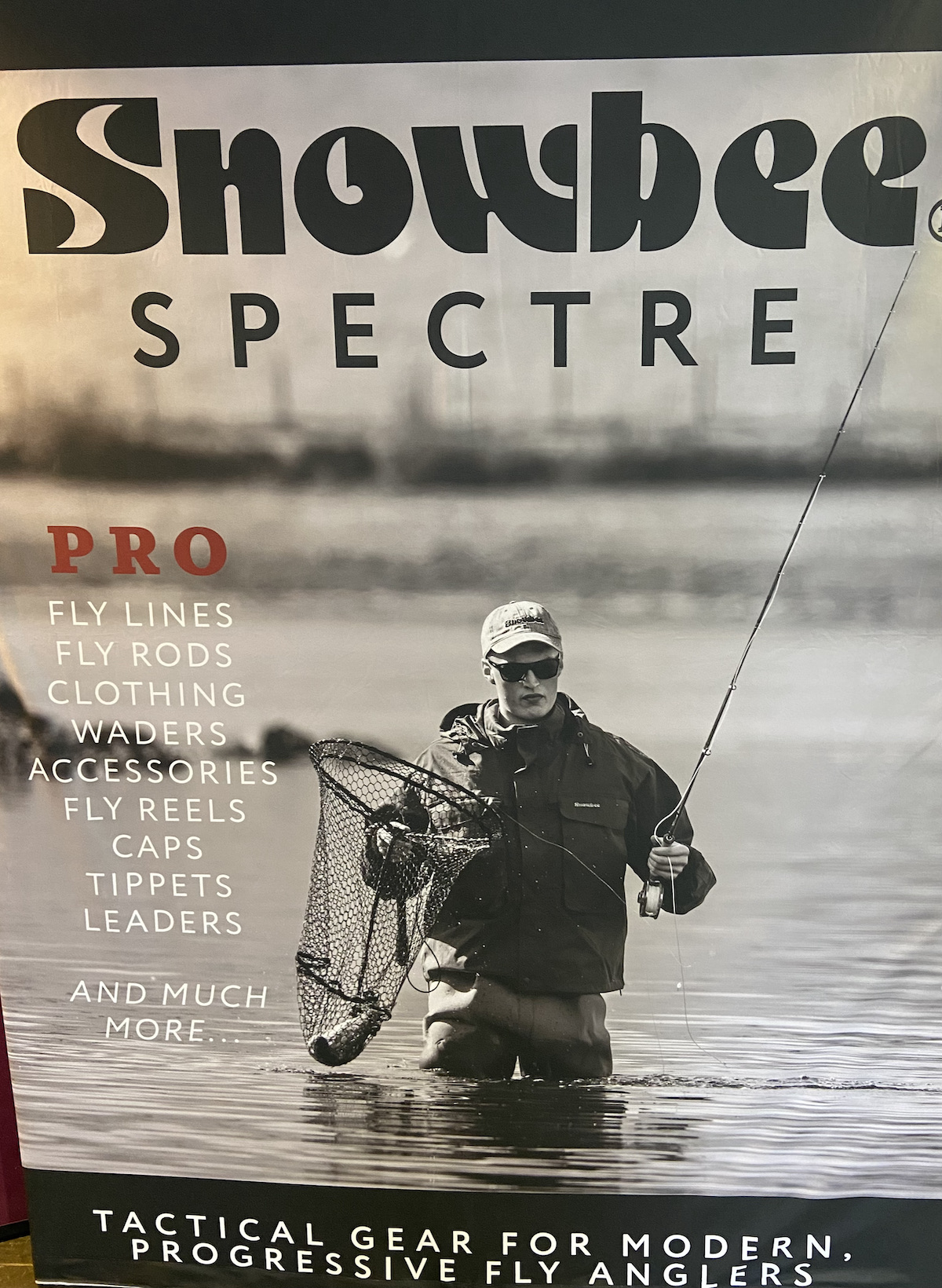
Gale force winds and heavy rain failed to dampen enthusiasm as keen fly fishers gathered around the many stalls within the spacious conference rooms. There was an impressive array of tackle, clothing and fly tying equipment on display along with representation from local angling clubs, associations and the hospitality sector. As always river conservation was high on the agenda with a real passion for the preservation of our rivers and wildlife within.
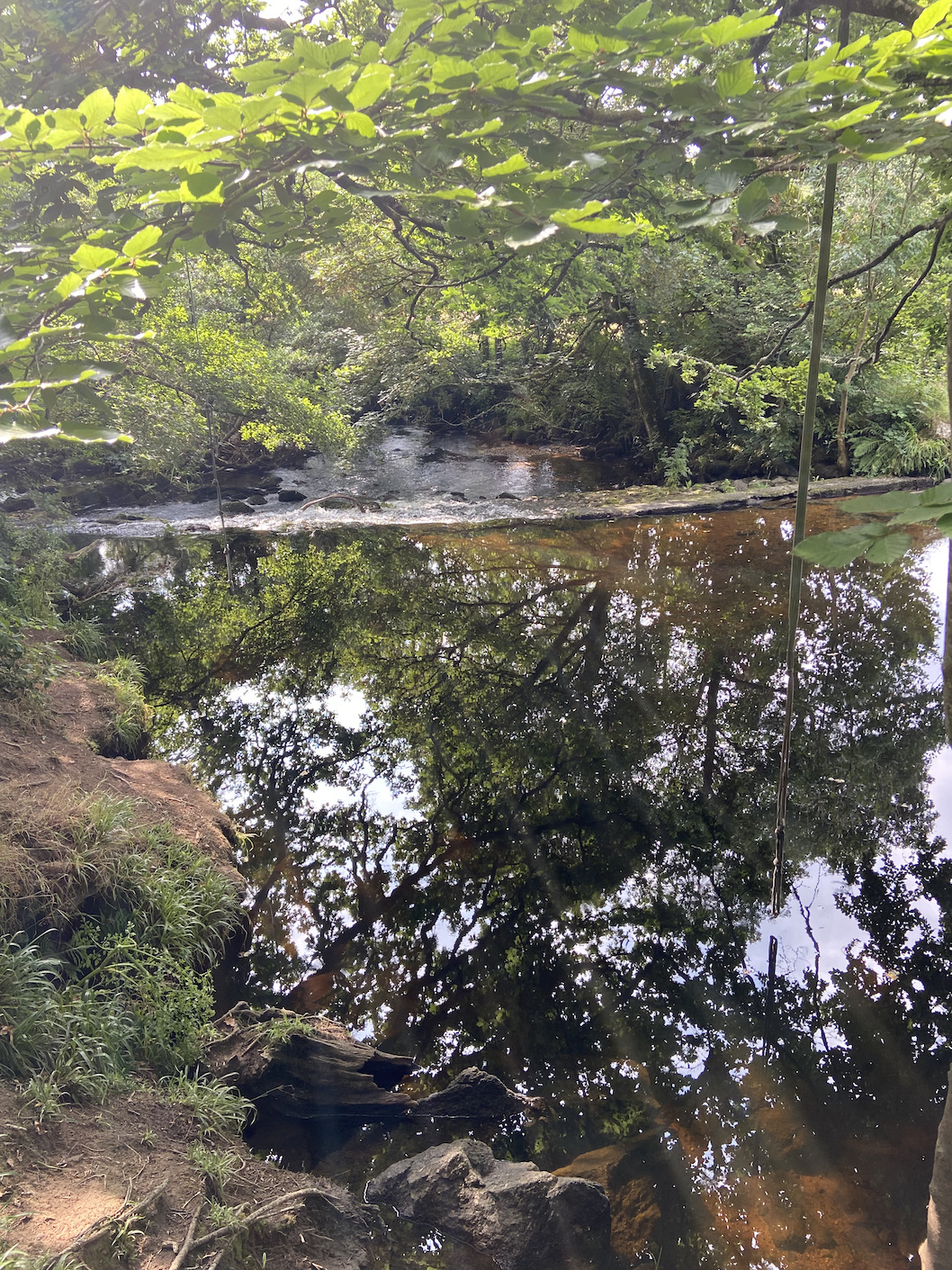
The River Teign Restoration Project that brings a story of salmon decline and the efforts to restore the river to its former glory was of particular interest to myself and I look forward to reading all about it in ‘The Teign Book’ written by local angler Neil Yeandle. The book now sits on my desk ready to read over the coming weeks. Glancing through its pages I can already see that it is an evocative story of catastrophic decline and sterling work to restore habitat that brings hope for the future.
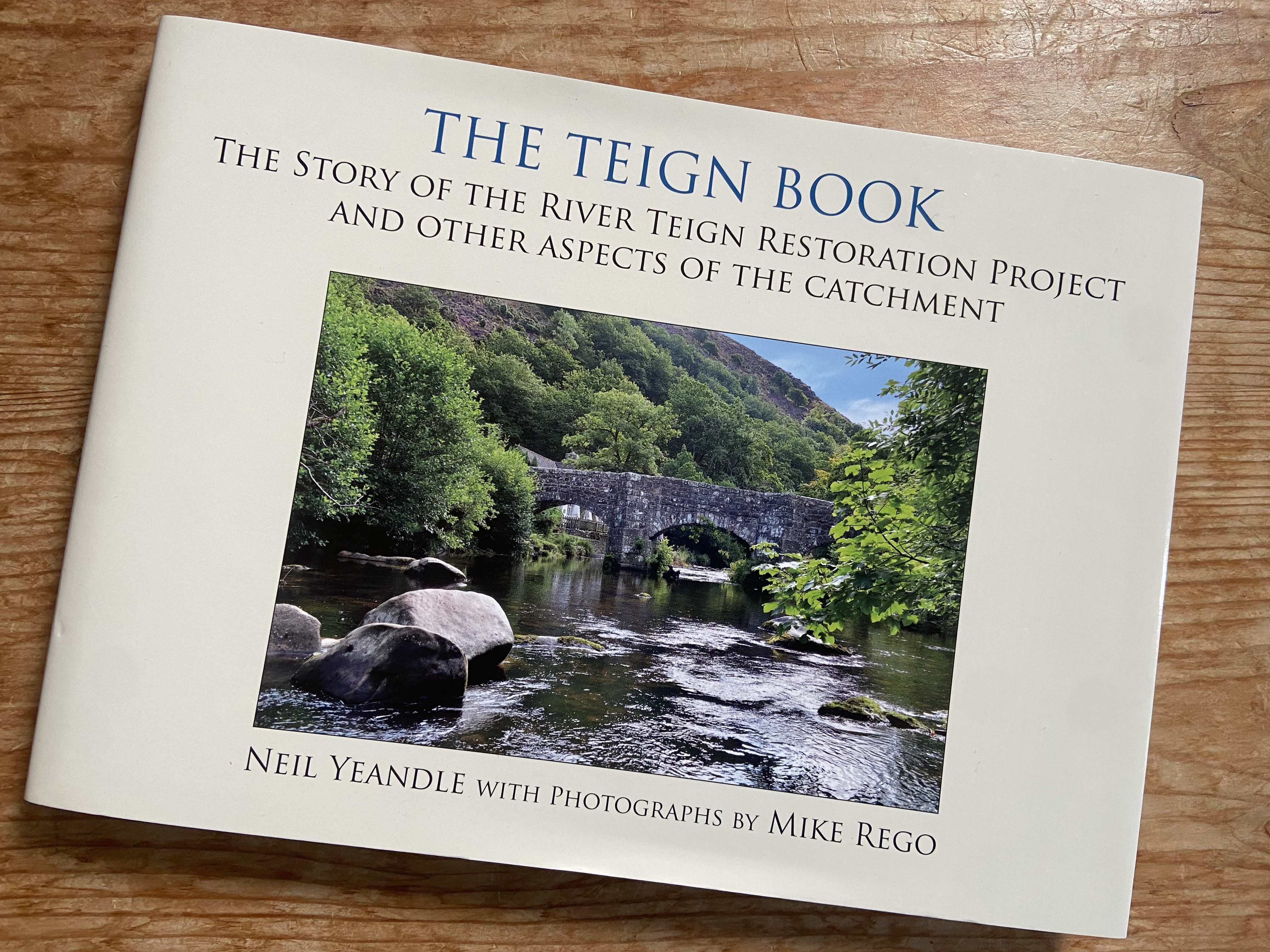
Former head of angling at South West lakes Trust Ashley Bunning was present with South West Waters Invasive species team highlighting the threats posed to our environment and native species. https://www.southwestwater.co.uk/about-us/latest-news/tackling-invasive-non-native-species-to-help-protect-our-wetlands
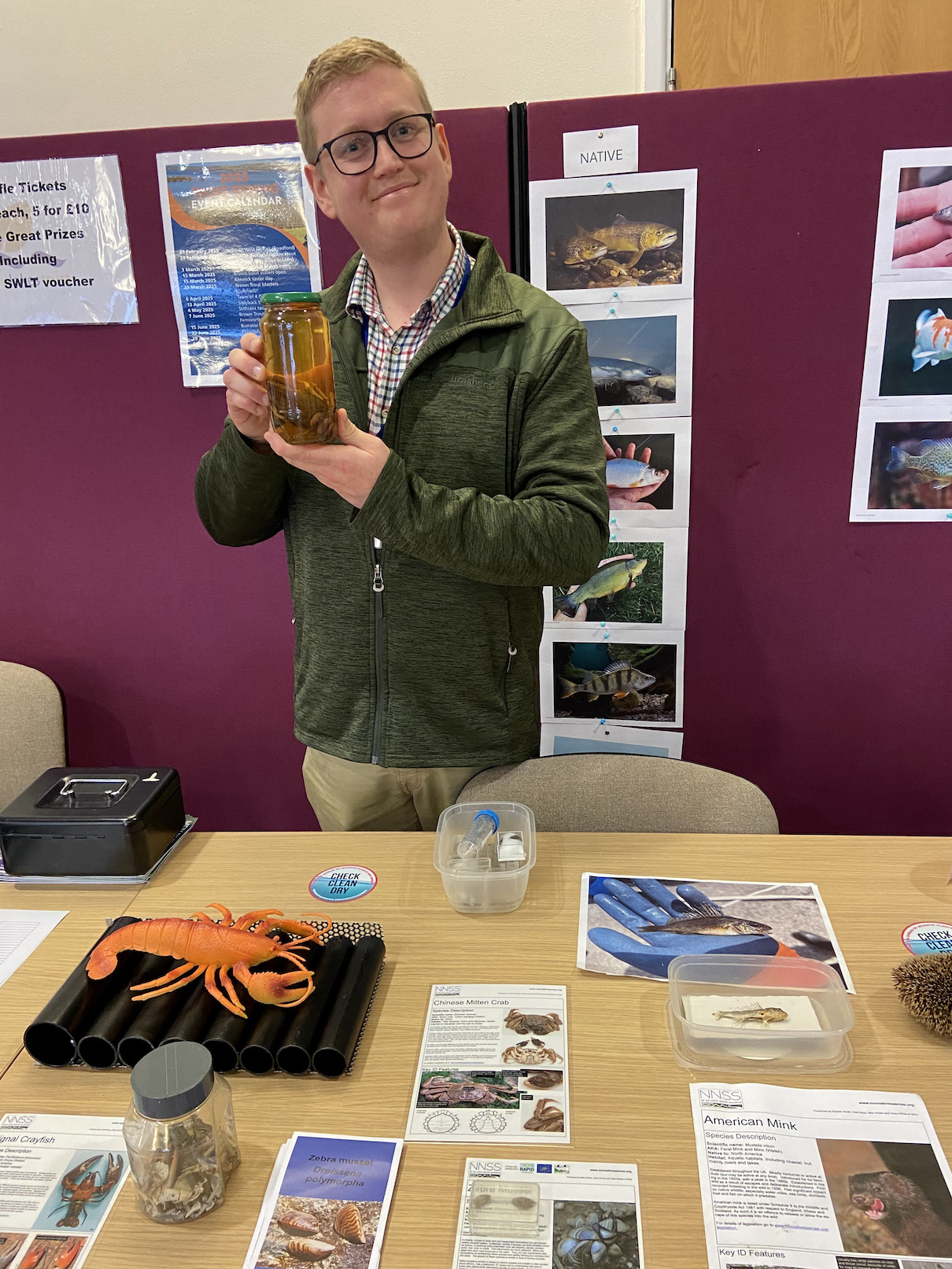
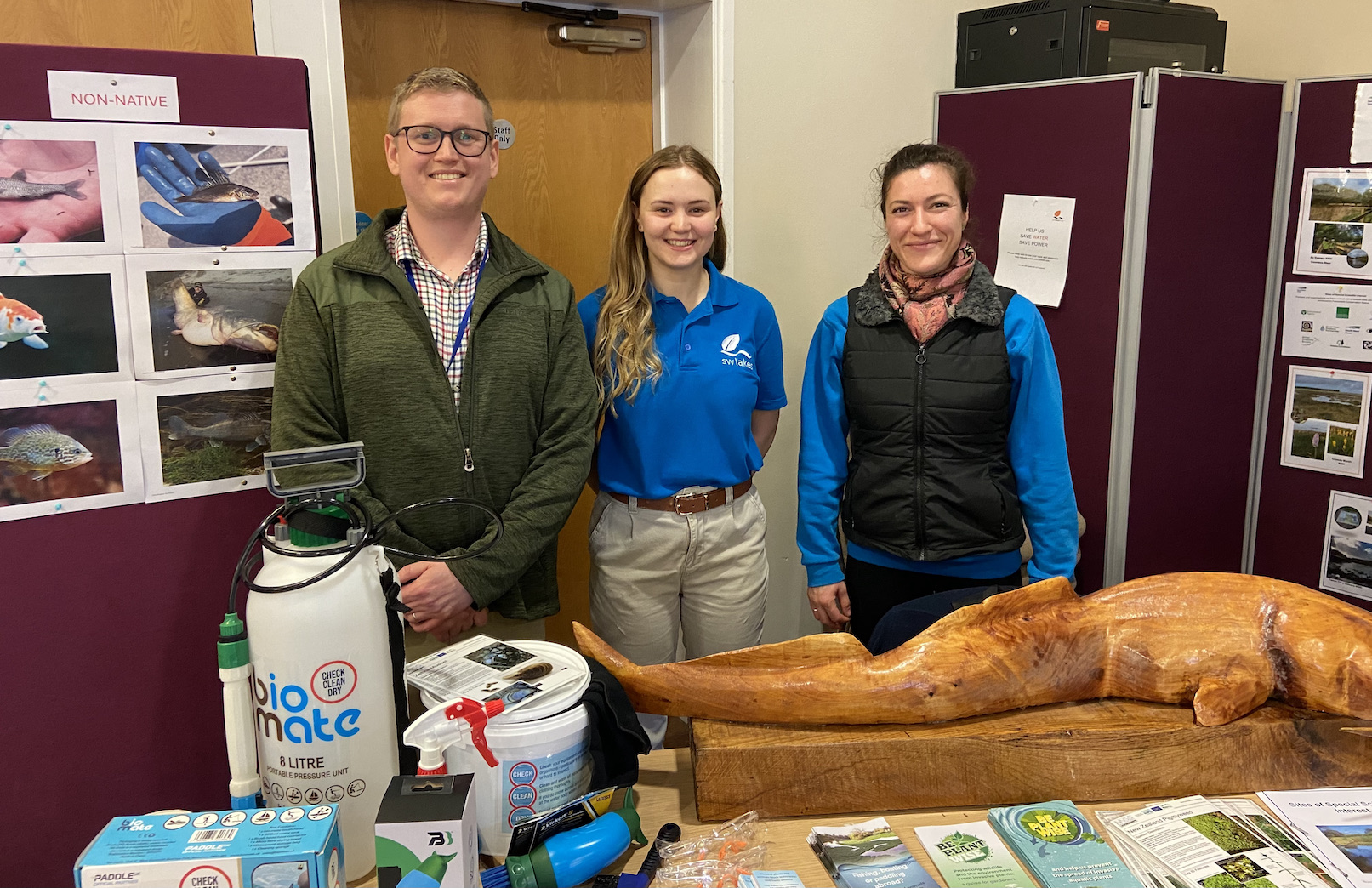
Talking with various organisations it would seem that 2025 is set to be a busy year for the regions anglers with plenty of events planned.
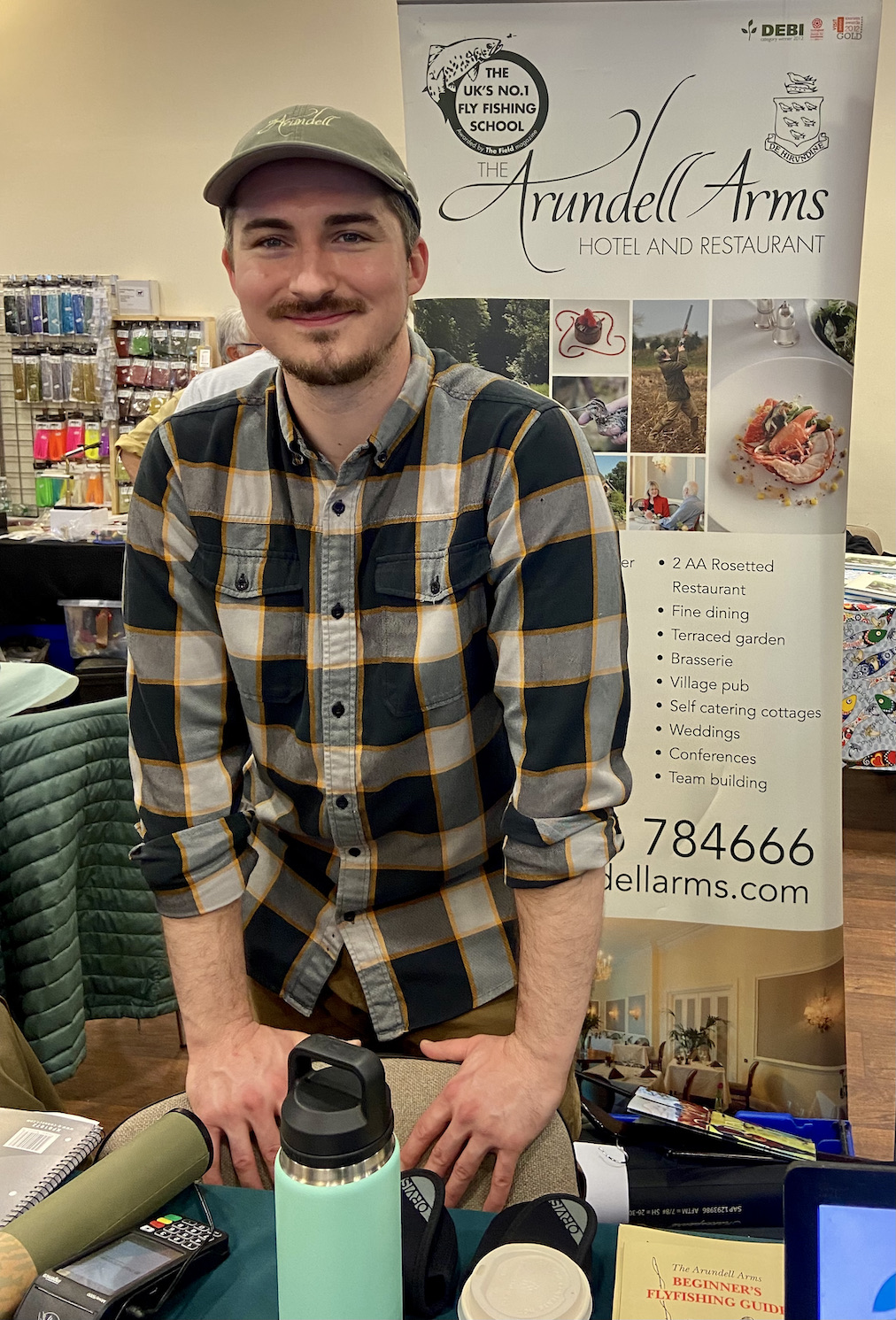
The Arundell Arms is set to host several events over the coming months starting on March 5th with a grayling day and showing of Jack Perks acclaimed film ‘Britain’s Hidden Fishes’. This Country Hotel steeped in angling history since 1932 has a sound future with the vastly experienced David Pilkington working with new fishing guide James Christoforou.

Leon Fisher is the new head of fishing at South West Lakes Trust and welcomed well respected angler and long-time supporter of the show Charles Jardine to open proceedings. Shortly after Charles took to the wet and windy outdoors to demonstrate the art of fly casting. Charles as always wielded his fly rod with deceptive ease to propel the fly line into the gale force gusts whilst casting valuable advice to the anglers sheltering in the porch area.
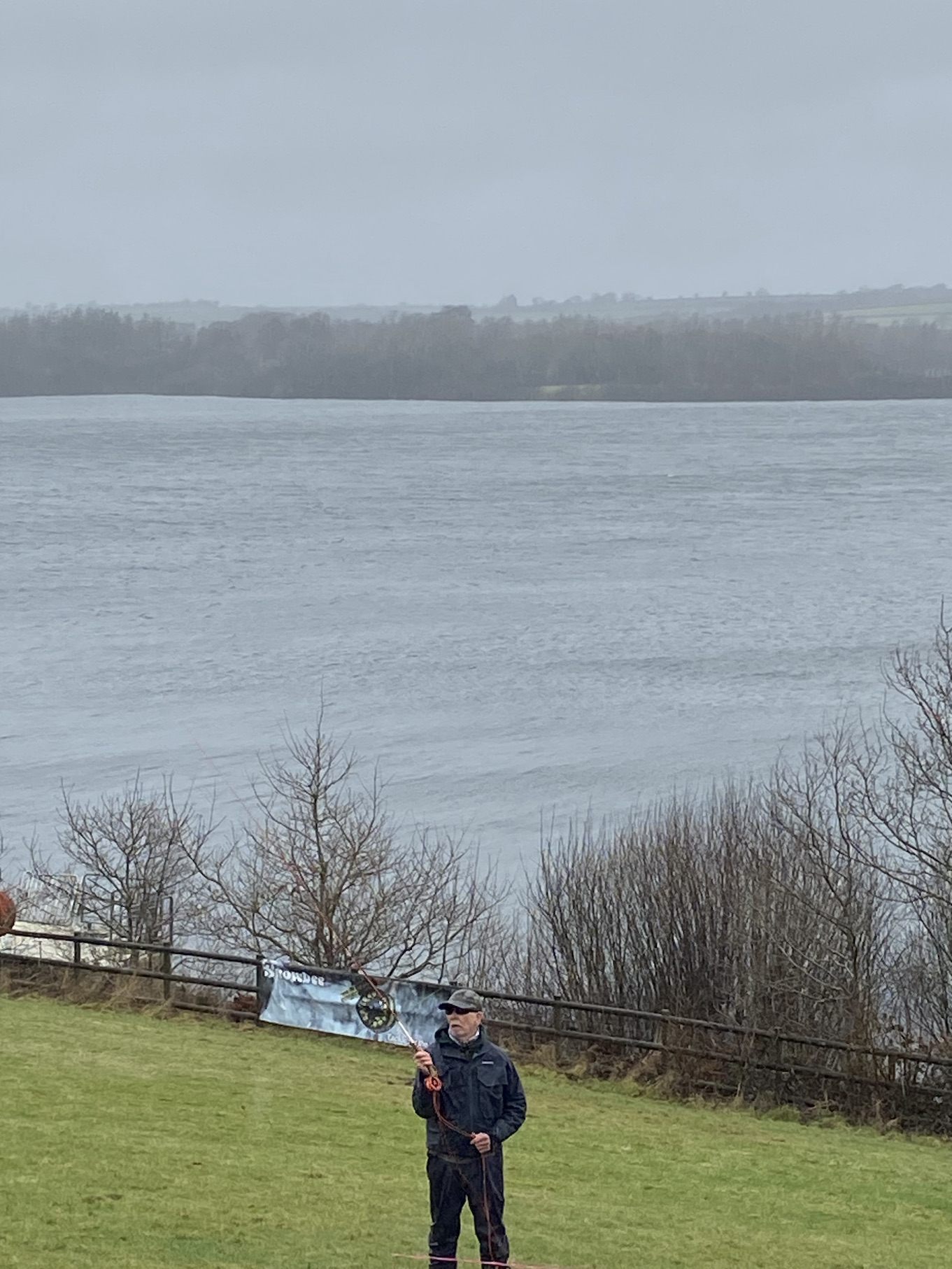
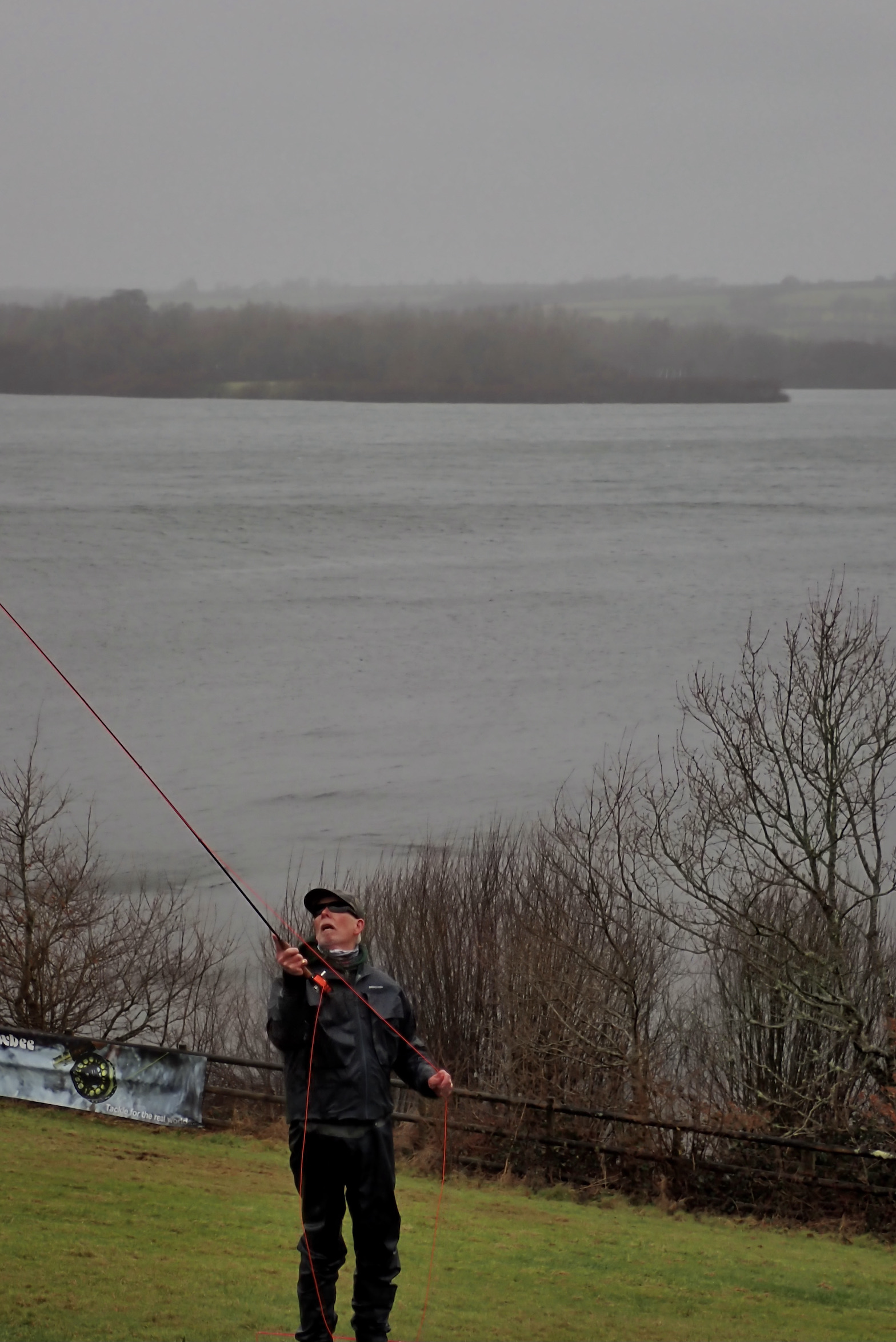
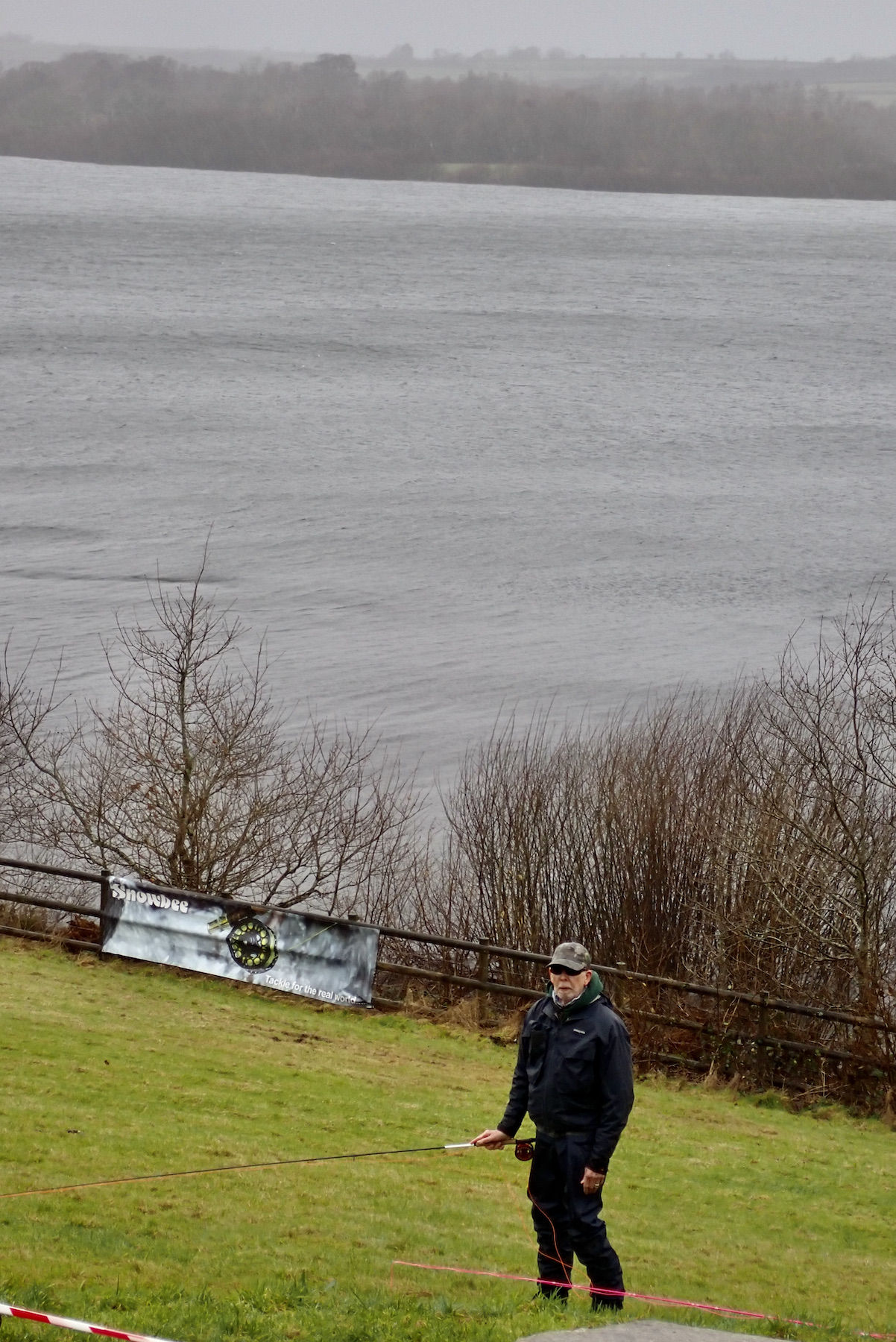
Charles stressed the importance of stance and how to hold the rod pointing out that these basic foundations are the key to consistent delivery of the fly to the target. A very important point is that protective glasses should be worn at all times. It was refreshing to hear Charles reflect upon the design of rods and their price tags. Whilst top of the range rods are a joy to use the actual performance is largely in the hands of the angler.
https://www.hanak.eu/en/about-us/company-hanak

I chatted with Local angling guide Lewis Hendrie who was on the Hanak stand with their team of dedicated fly anglers. Lewis has his routes on Exmoor having grown up in the village of Exford learning his art on the wonderful rivers and streams that cascade to Devon’s North and South Coasts. Chatting with Lewis he pointed out that he had featured as a rising star in the Fly Fishing world in my North Devon Journal Angling column twenty five years ago. It is the mixing and mingling with fellow anglers that is at the heart of this event. Whilst fishing is the vital link conversations often flow far wider contributing to a healthy community.
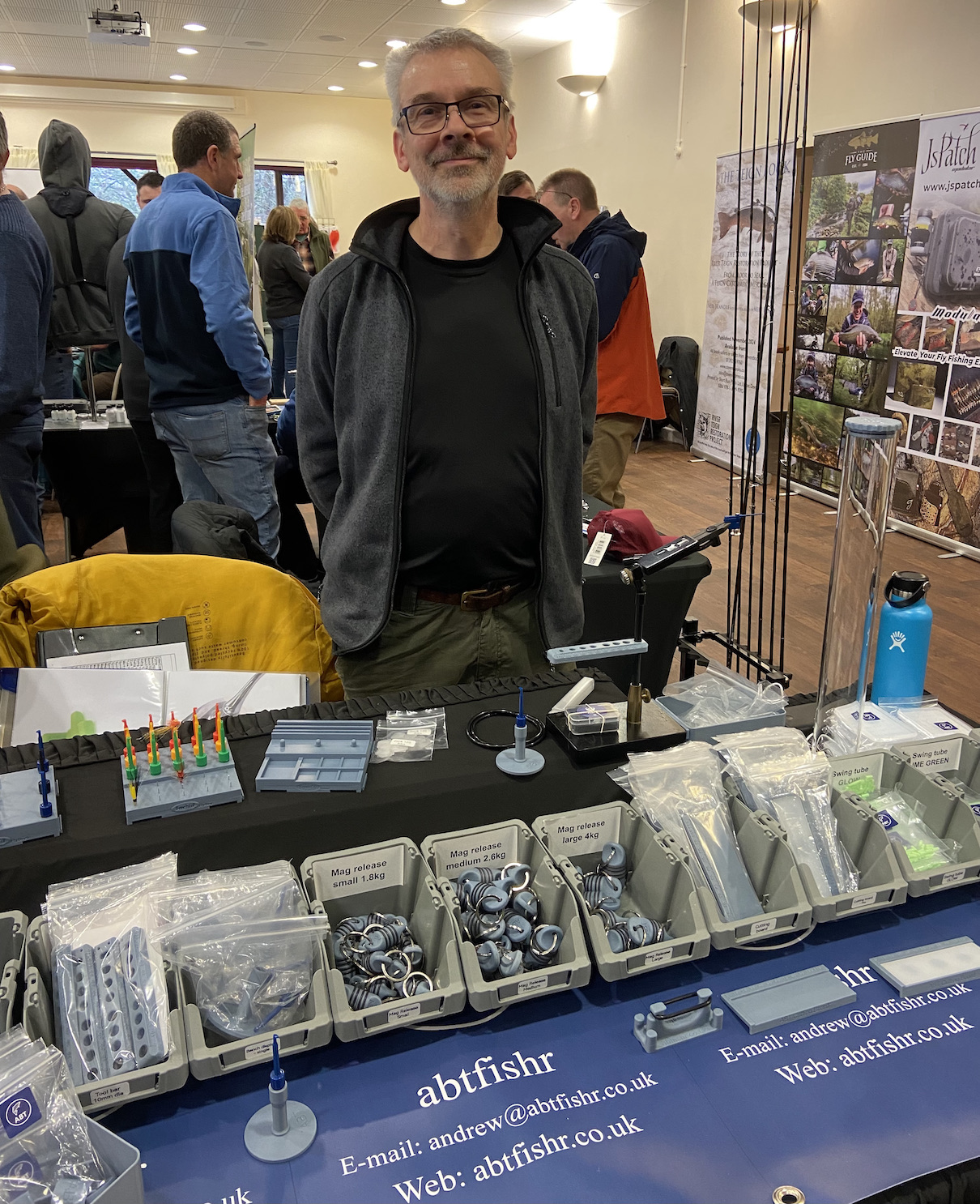
Andrew Beattie of https://abtfishr.co.uk
Always interesting to see new and Innovative products ABT have a range of robust products for fly fishing and other disciplines designed by Andrew. The LRF Critter cradle with disgorger caught my eye as a useful tool for the growing band of sea anglers exploring the fascinating miniture world of species hunting.
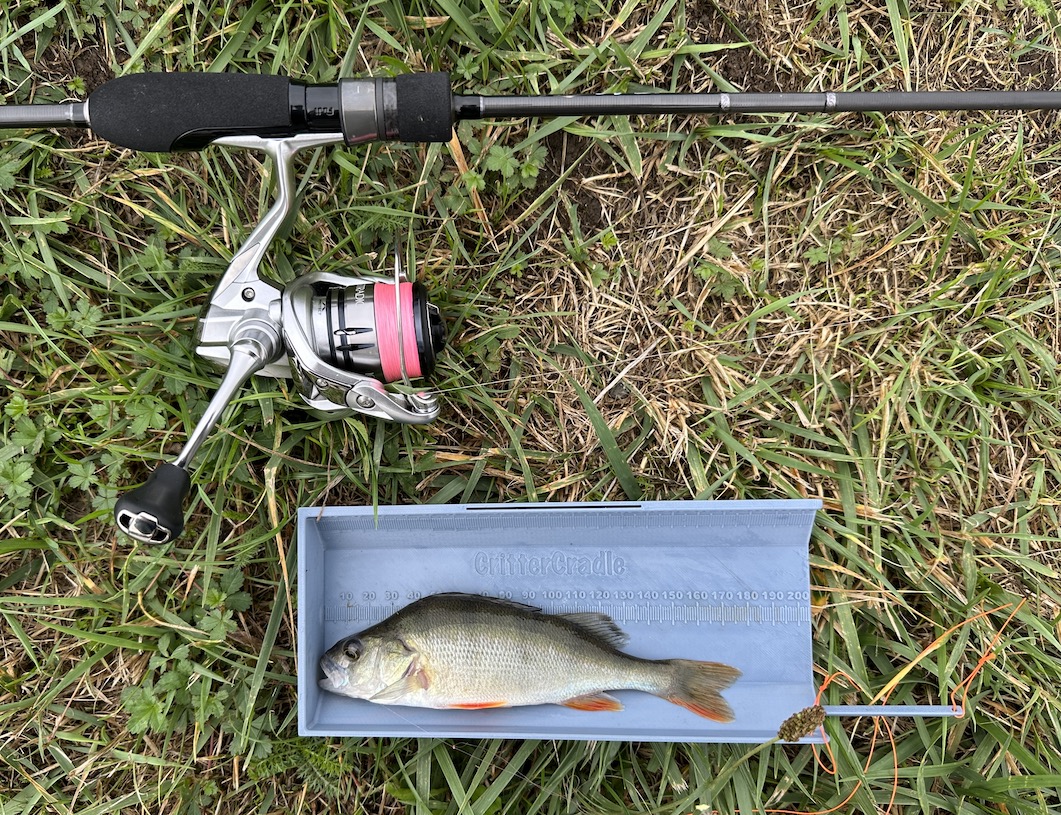
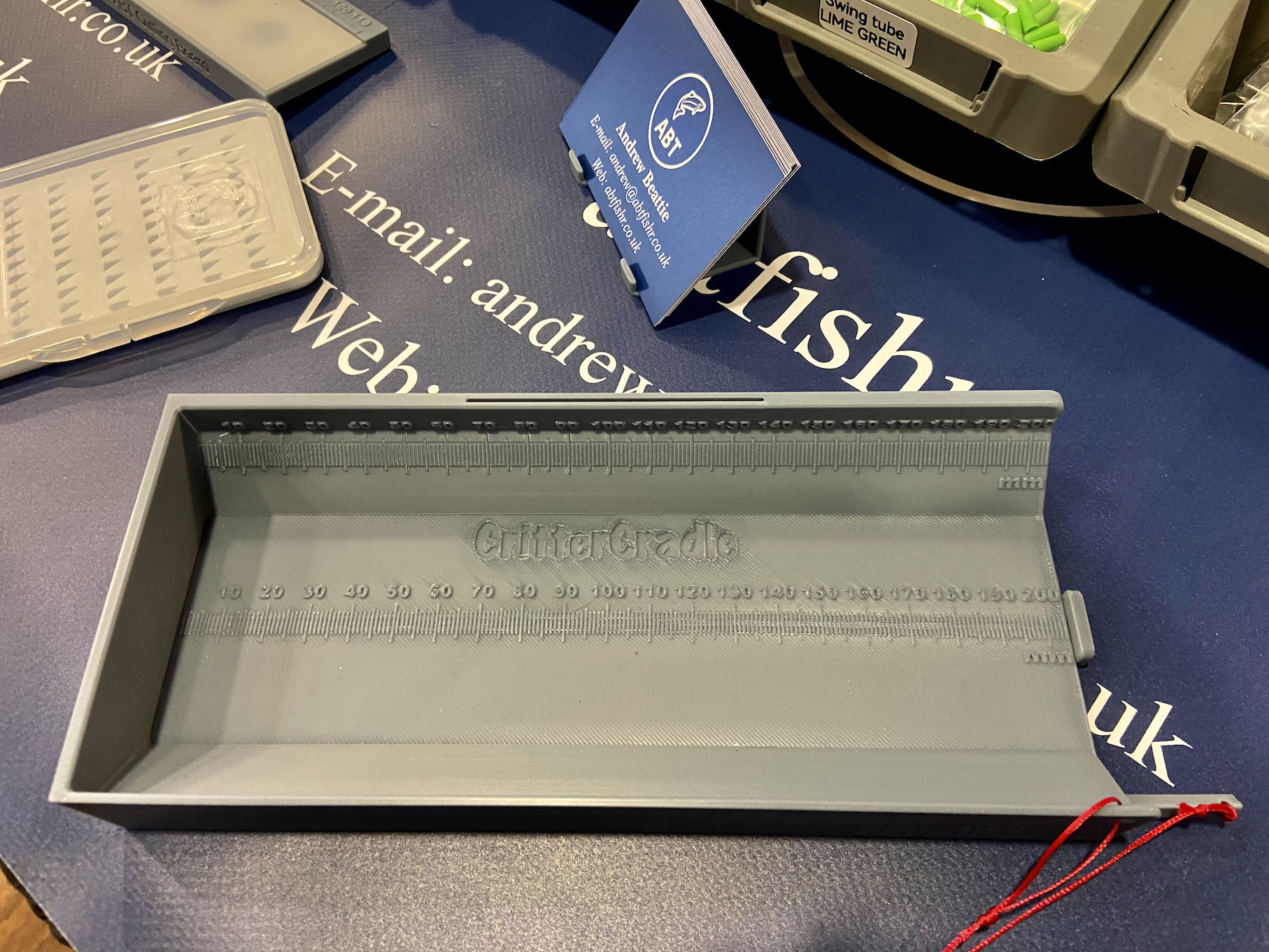
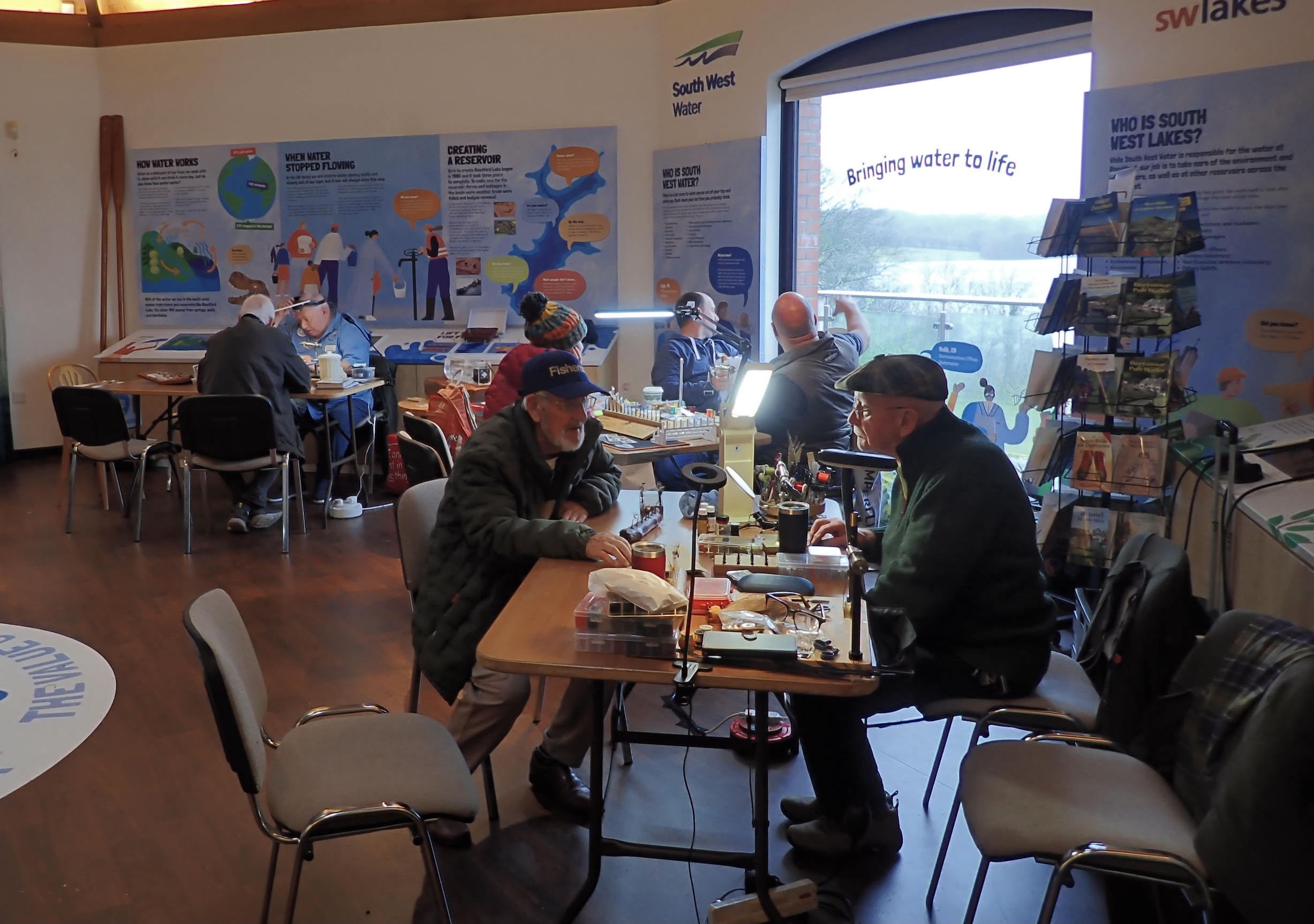
Fly tying features extensively at the fair those present creating a wonderful range of flies, lures and nymphs to tempt a wide range of species in many waters. Tiny dry flies and nymphs to temp wily wild brown trout and grayling. Gaudy lures for freshly stocked rainbows and those big mouthfuls for ferocious pike. Fly tying can be a hobby itself filling those long winter nights spent dreaming of those warmer brighter days ahead.
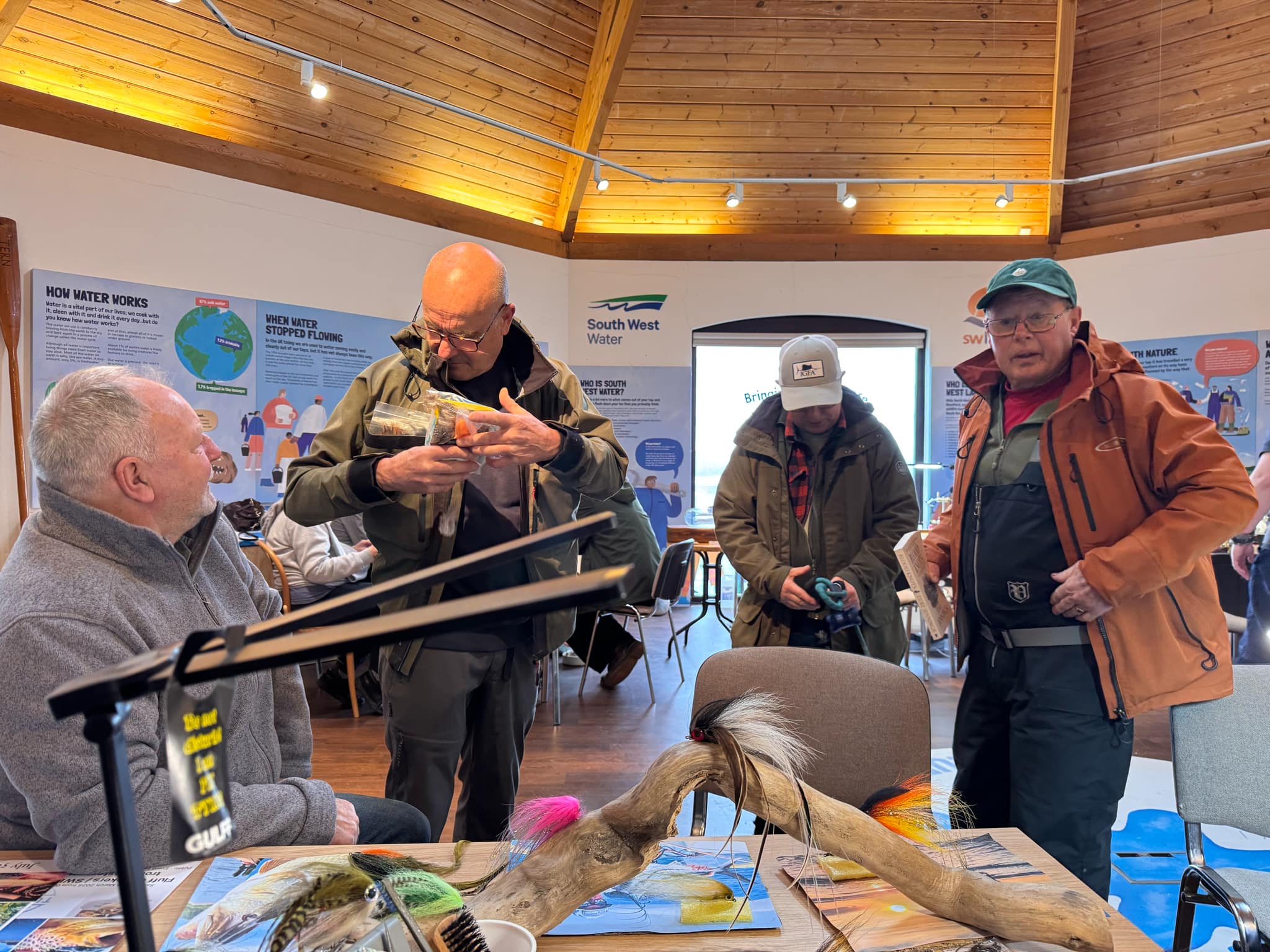
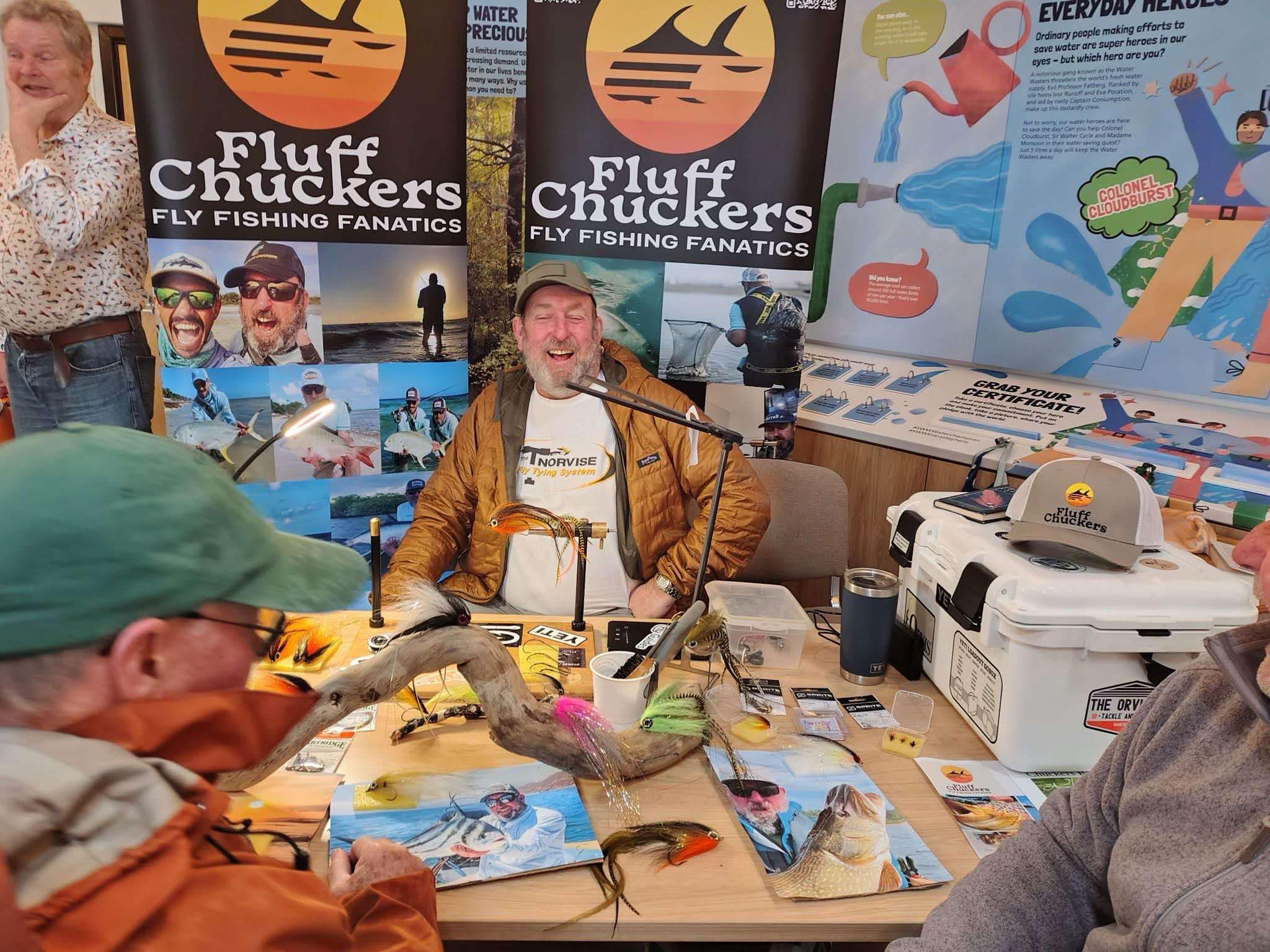
We are very fortunate in the West Country to have a vast range of waters to explore. One of the discussions at the expert forum between Charles Jardine, Rodney Wevill and Gary Champion was the wonderful places that fly fishing takes anglers to across the world. With a vital connection to nature highlighted by the speakers.

I returned home from the fair with my mind buzzing and full of inspiration for the coming season. The value of life and savouring each day and moment emersed in angling and the natural world is always highlighted at these events.
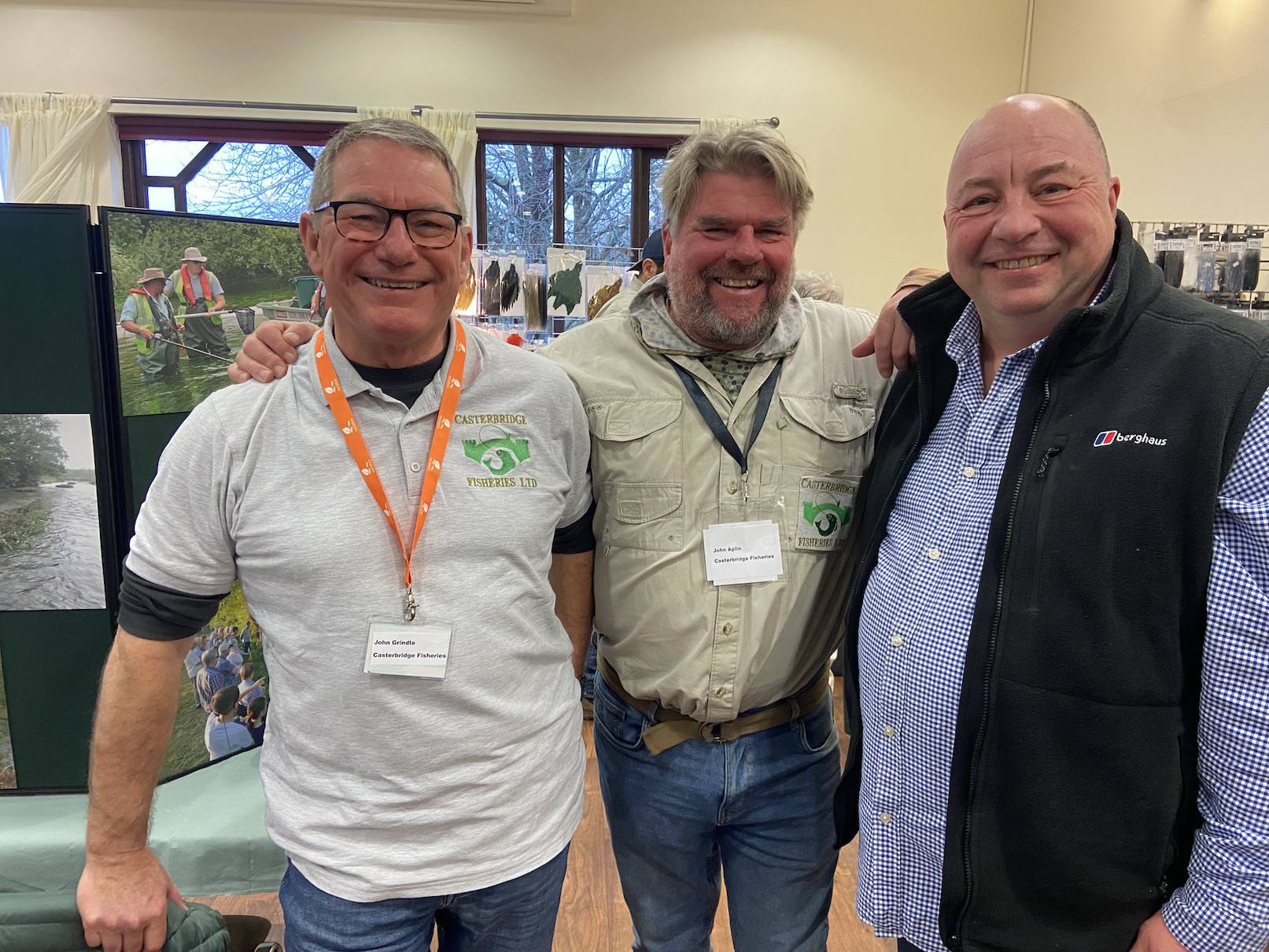
John Aplin (Centre) from Casterbridge Fisheries Ltd
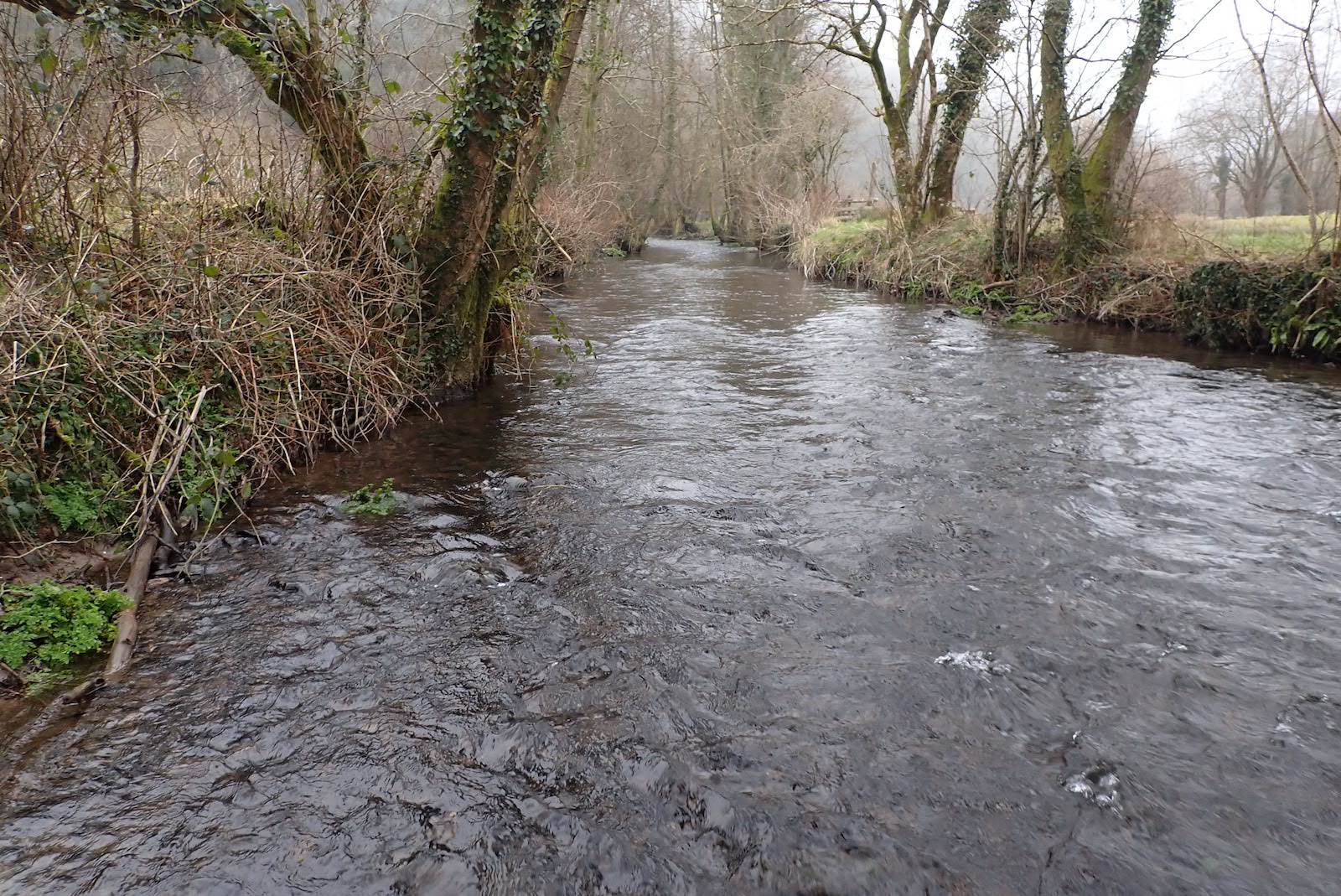
By Devonshire Fisherman ( Rev A Hughes)
The month of January is, unfortunately for the fisherman Artic in its conditions to tempt him to leave the fireside and pursue the gentle art: but February though it has well-earned itself the cognomen of “fill Dyke.” Is not always a wet month. There are many of its twenty eight days which possess a charm as fascinating to the piscator as the more genial breath of spring: when the fish are alert, and rise to the fly with exceptional readiness.
“About the year 1896 grayling were first introduced into the River Exe”. Five hundred yearlings.
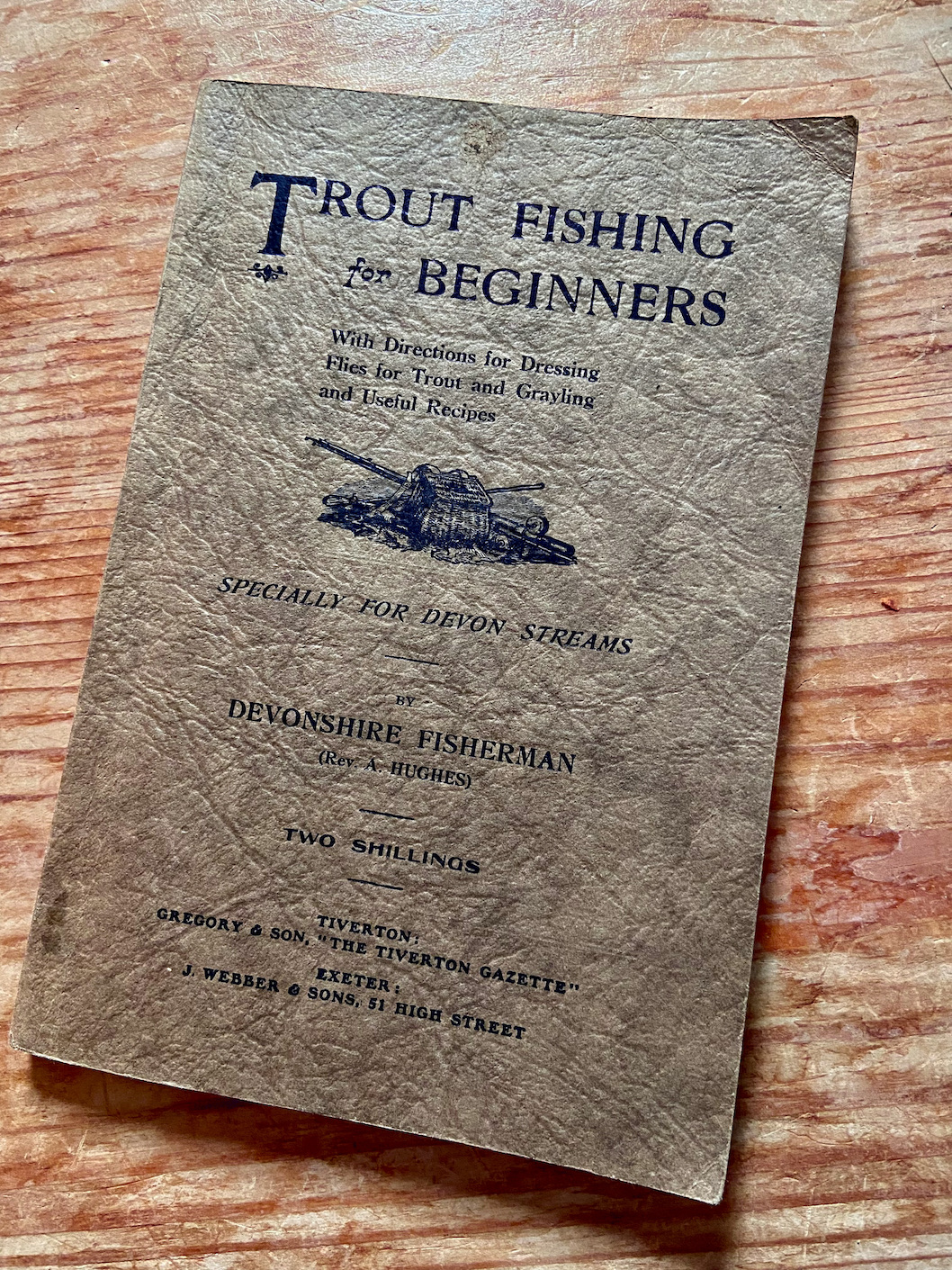
The River Haddeo joins the River Exe a couple of miles downstream of Dulverton and has a character all of its own. This is probably in partly due to the influence of Wimbleball reservoir that has impacted upon flows reducing flooding as the dam takes the sting out of any heavy rainfall events.
The Dulverton AA beat runs for about a mile upstream of the junction with the Exe and has a wealth of interesting features to explore. Grayling are a fish I have a fondness for part in due to the fact that they give an excuse to fish the river during the winter months when the landscape has a unique and beguiling atmosphere.
I waded beneath the old stone bridge that carries the A396 to enter the peaceful Haddeo valley. Working upstream the left of the River consists of woodland and pheasant pens used by the local shoot. High above on the hill are the remains of Bury Castle believed to have been built by William de Say before his death in 1144. A google search for William de say brings little reward so the history just adds a bit of mystery to the valley. To the right is farmland with sheep grazing and young lambs already in evidence.
The river is running clear and at a good height as I start to explore its pools and runs with a pair of heavy nymphs. Evidence of winter storms are all about with plenty of fallen trees and woody debris some of which will add to the rivers health and biodiversity even if it renders a few swims unfishable in the short term.
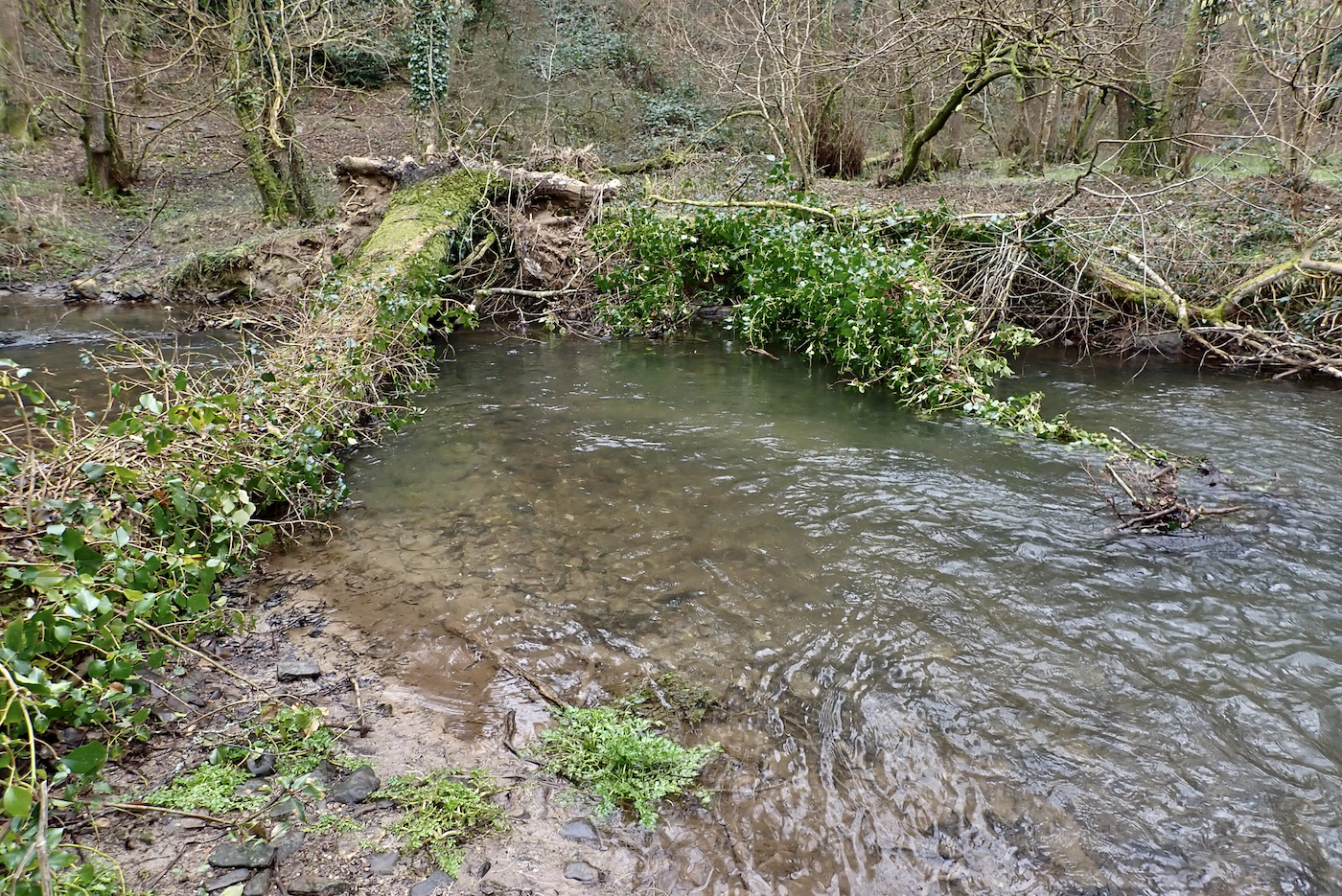
I fished this beat in January of 2024 over twelve months previous so I already have an inkling on the best areas for grayling. It is remarkable how the river often seems devoid of fish during the winter months. During the late spring and summer wild brown trout are abundant darting for cover in the clear waters and rising for flies. I catch a couple of out of season browns during the day but I often wonder where the majority retreat to in winter.
It’s an overcast misty day, cock pheasants, survivors of the shooting season strut arrogantly on the far bank eyeing me with suspicion. Snow drops add a welcome brightness to the gloomy day and foretell of the Spring days to come. A shallow pool is full of frogspawn a sight I have relished since a young boy fascinated with ponds and the life within.
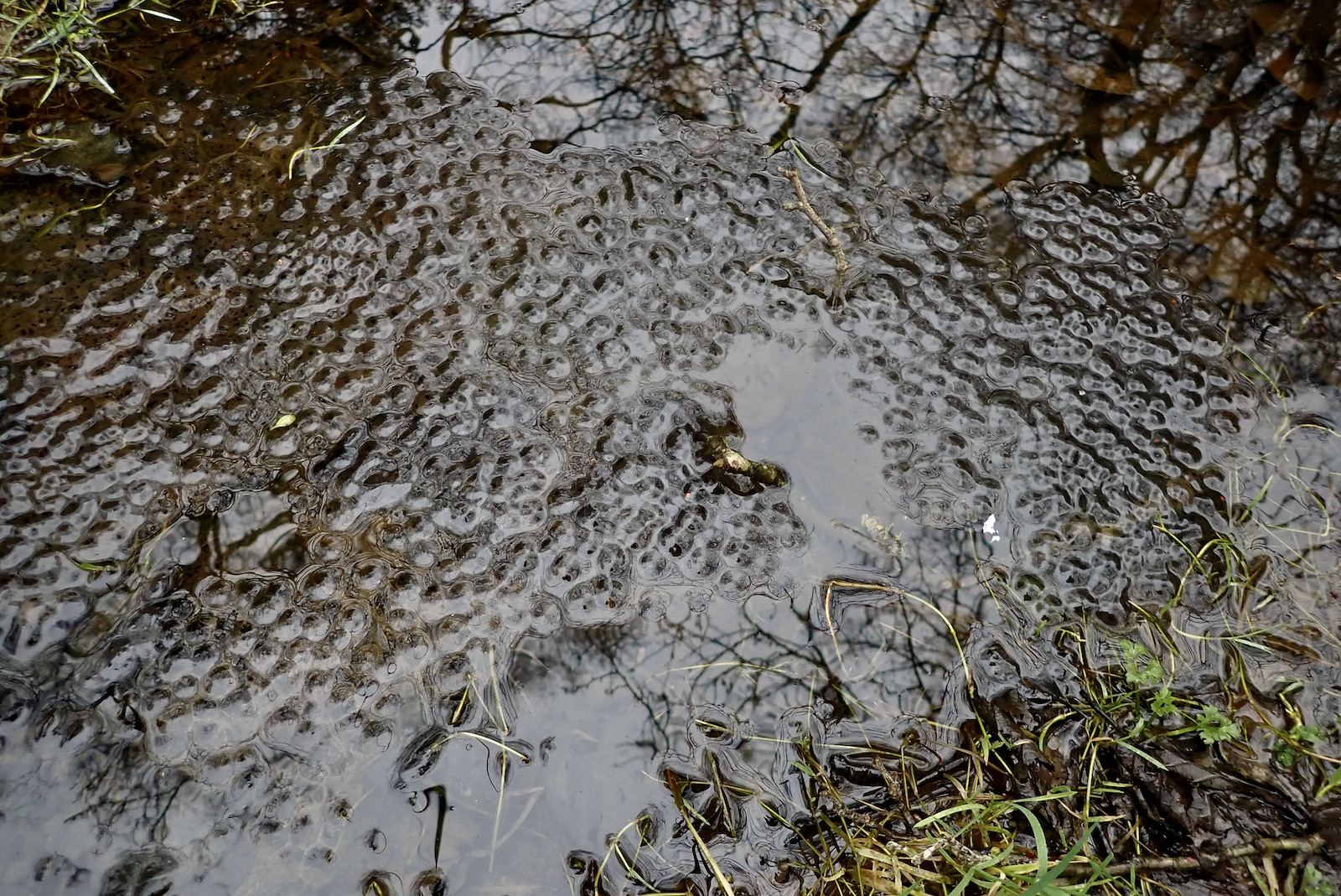
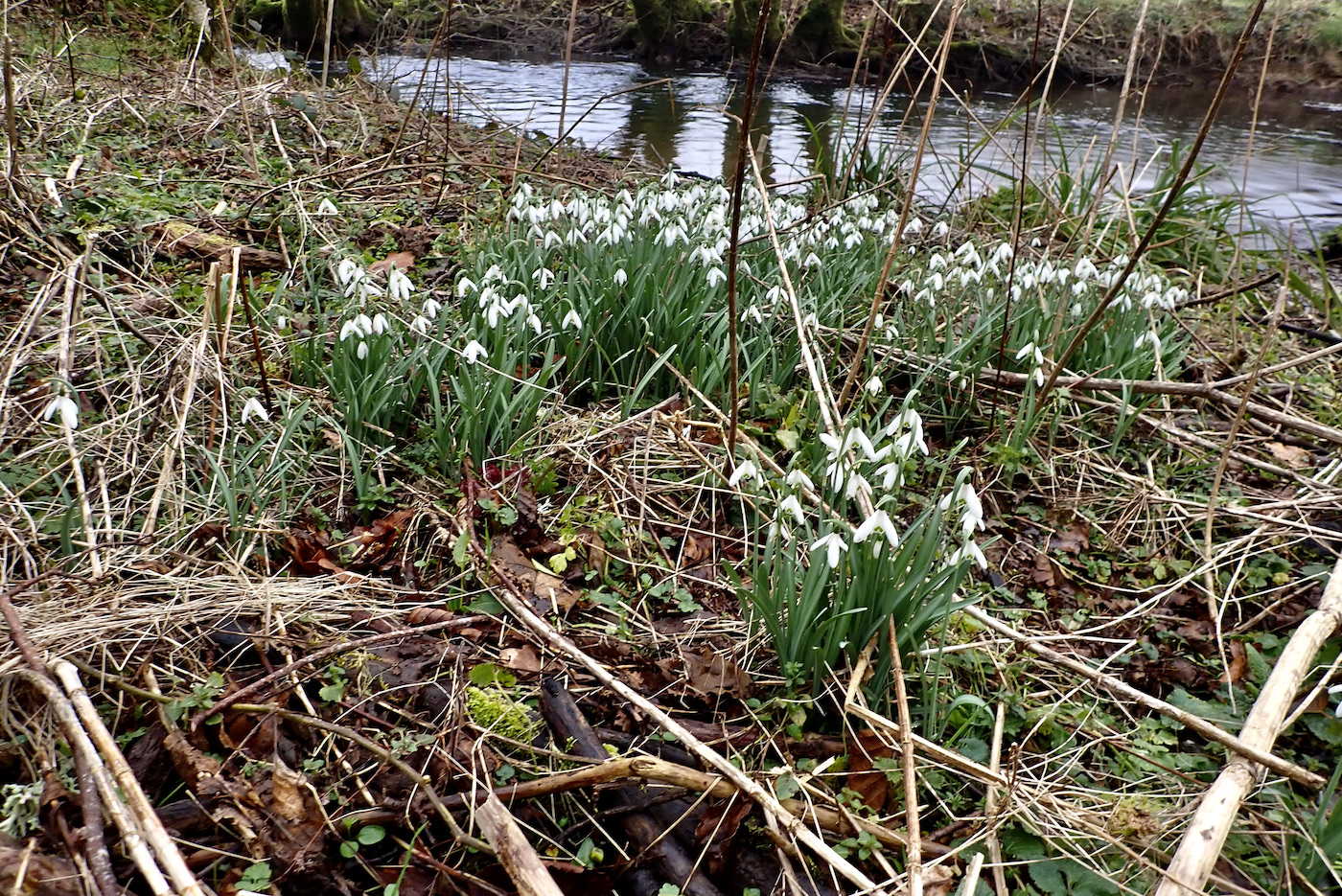
It is a joy to work my way slowly upriver allowing the nymphs to trundle close to the river bed. I watch the bright tip of my nymphing line intently lifting the rod each time it pauses feeling for a fish. After half an hour or so in a small pool I lift the rod and feel that wonderful life throbbing at the end of the line. The 3 weight rod bends pleasingly as I glimpse the silver flanks of a grayling its crimson sail like dorsal fin adding momentum as it holds in the fast flow. A pleasing fish of perhaps 8oz is soon safely in the net and slipped carefully back into the river.
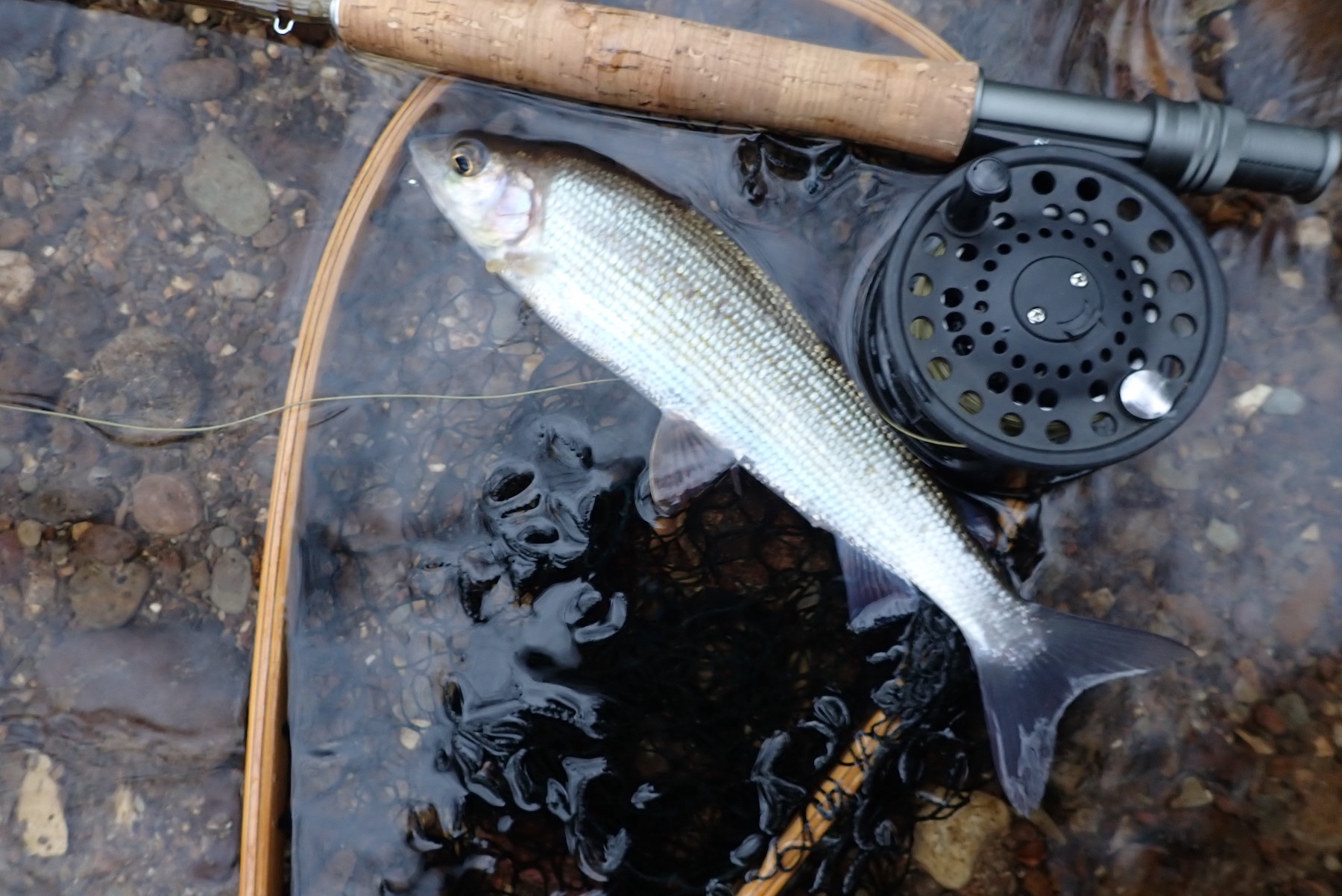
Catching that first fish of the day always brings a certain contentment for whilst it doesn’t really matter in the grand scheme of things it does bring satisfaction for when asked later about the day you can at least report upon a degree of success.
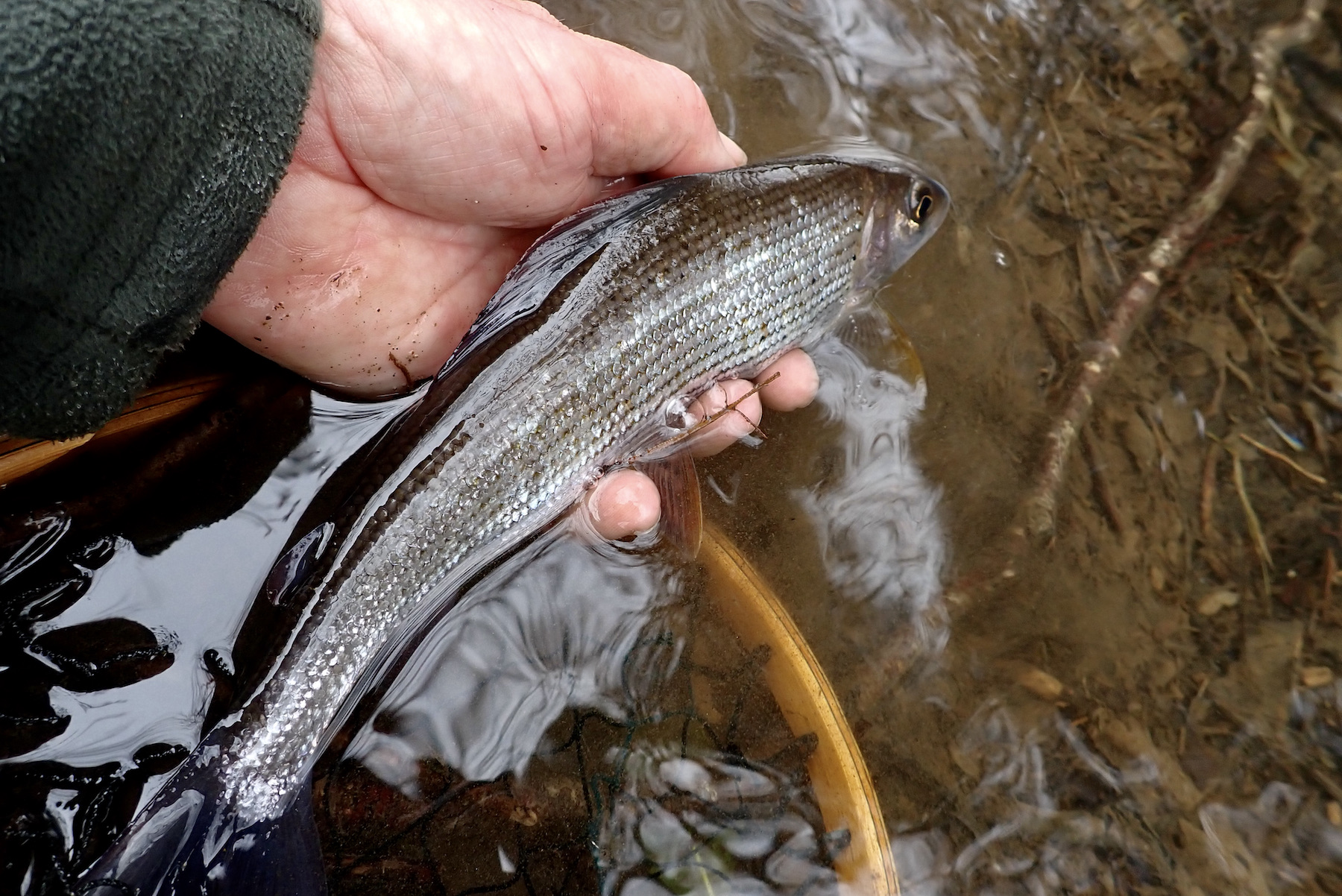
I fish on upriver and eventually come to a deep lie from which I extracted a grayling on my visit last year. To some extent success always encourages that little extra perseverance next time you fish. A fact that often leads to the belief that you have located a hotspot when you may perhaps have just had an extra drift or two because you believe. Anyway the line twitch’s just where I expect it to and the second grayling of the day is soon netted.
A few yards upriver there is a tempting deep looking pit where I prospect carefully. The line again pulls tight and there is another pleasing tussle with a lovely plump grayling of 12oz or more. Whilst these Devon grayling seldom reach the weights of their fellows in Dorset or Hampshire they can only be judged on the rivers they dwell in and on light tackle they offer superb and challenging sport.
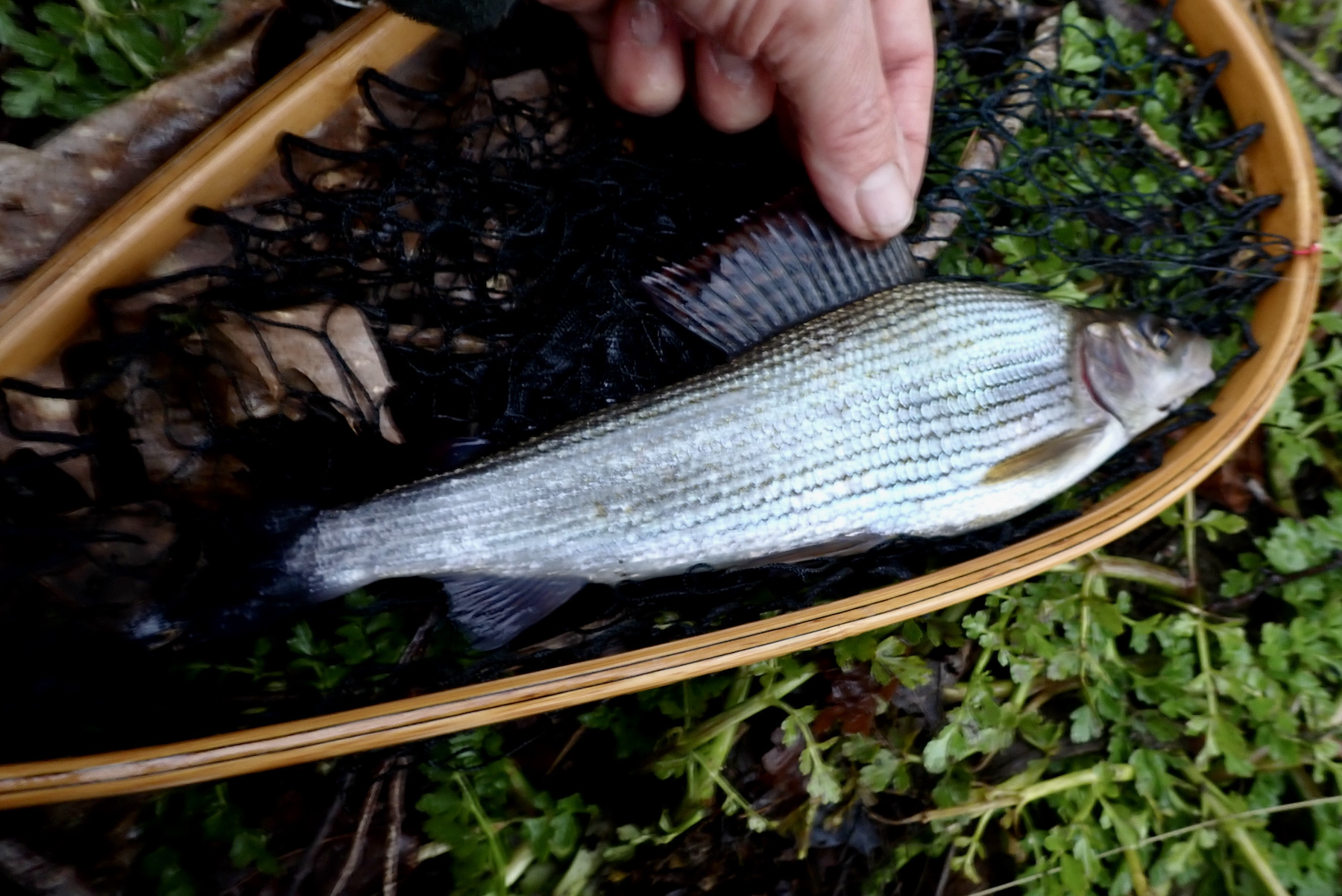
Before starting to work my way back down river I pause to savour the scene. Country cottages across the valley woodsmoke drifting into the still cool air. An ancient oak tree stands beside the river its immense worn and weathered trunk testament to its age. It is fascinating to ponder for a moment or two on the history of this tree and what has transpired through its long life. Generations of anglers have fished this stream. Children from the village have undoubtedly caught trout here in days gone by drifting worms perhaps ignored and tolerated by the river keeper of the day. Poachers would undoubtedly have taken salmon from these waters during the late autumn and winter. Both types of poacher are seldom seen these days for children sadly seem to have lost the freedom and inclination to connect with rivers whilst the salmon are no longer there to poach in any number.
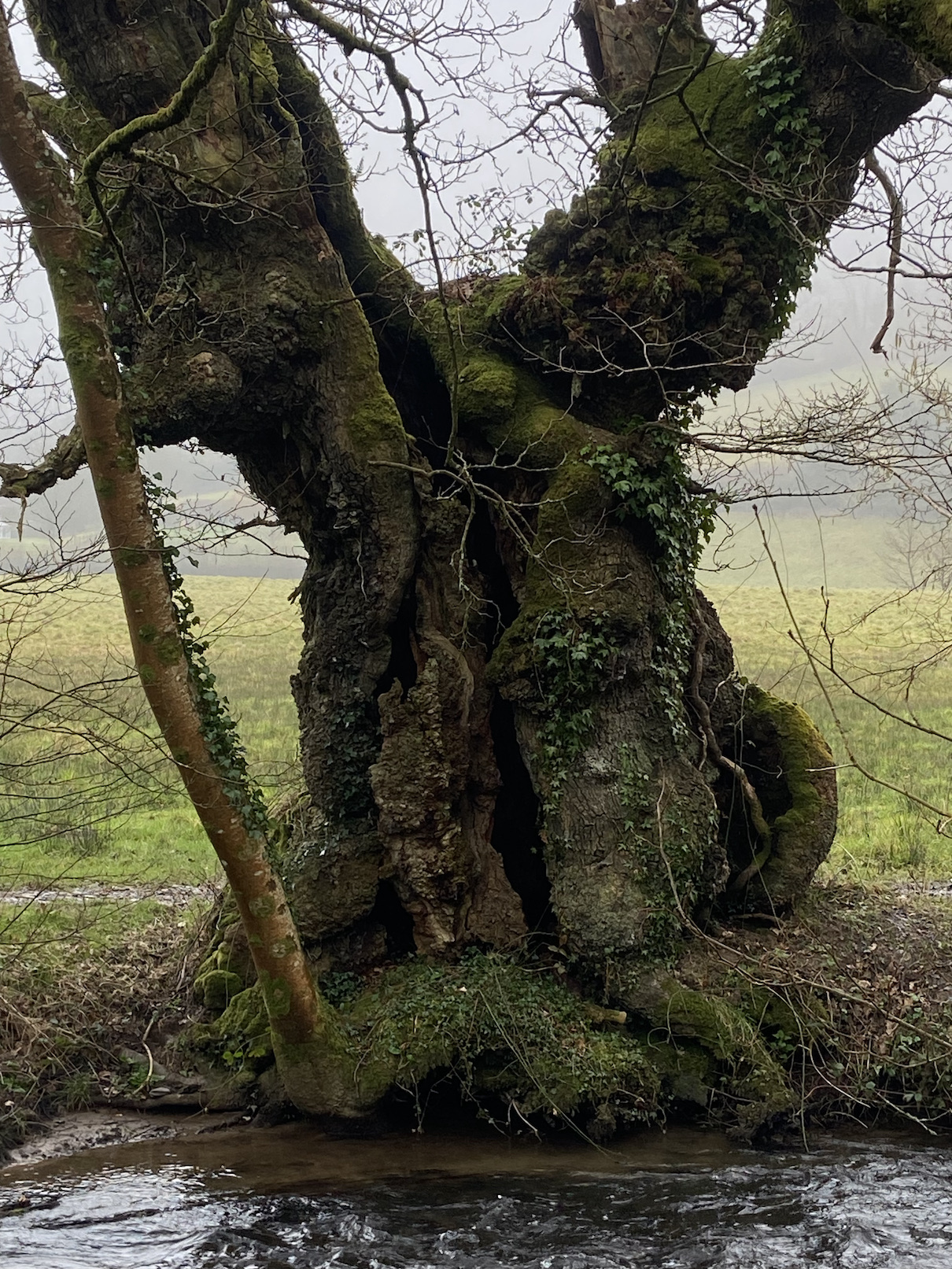
These observations only relate to the past fifty or so years. The old oak could be four hundred years or more old dating from before the Industrial revolution and witness to the many wars and tribulations of mankind. I guess the reassuring ever rolling stream and majestic oak bring a certain grounding to ones soul as we fish these pleasing rivers of life. In his new book due to be released this spring Robert MacFarlane askes the question. “ Is a River alive?” .
https://www.sevenfables.co.uk/product-page/book-is-a-river-alive-robert-macfarlane-1
Standing within these cool, enchanting waters the answer is surely yes and that its life is long, unlike our own lives in the words of the rock group Jethro Tull,
“Life’s a long songBut the tune ends too soon for us all”.
I retrace my steps back down river as the afternoon light begins to slowly fade. Ancient trees towering in the misty landscape. I look forward to returning in a month or so when those crimson spotted brown trout will rise, spring flowers will decorate the river bank and birdsong will reverberate through this peaceful timeless valley.
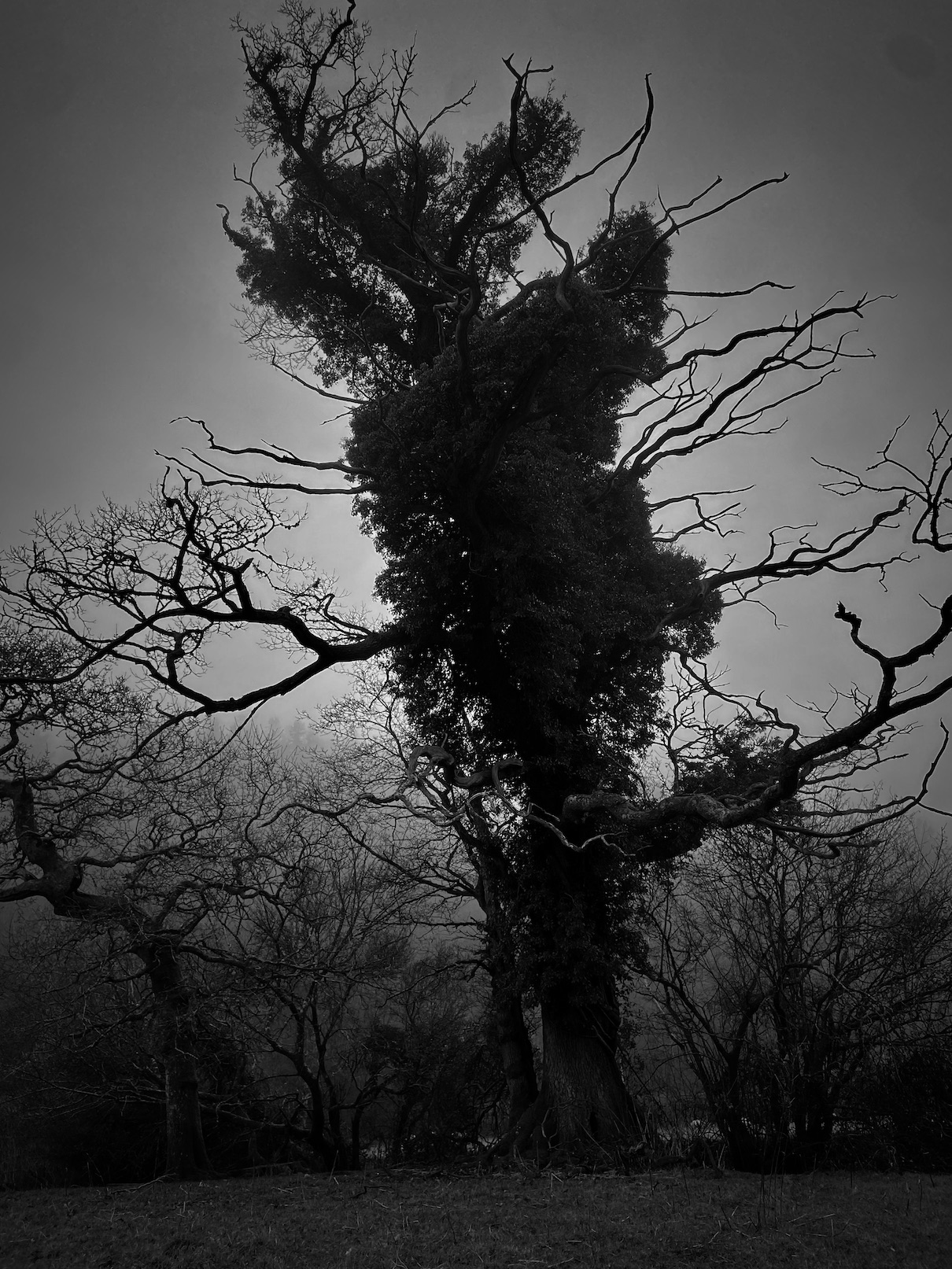
The Angling Trust and the Environment Agency are working with local angling clubs to combat poaching and fish theft.
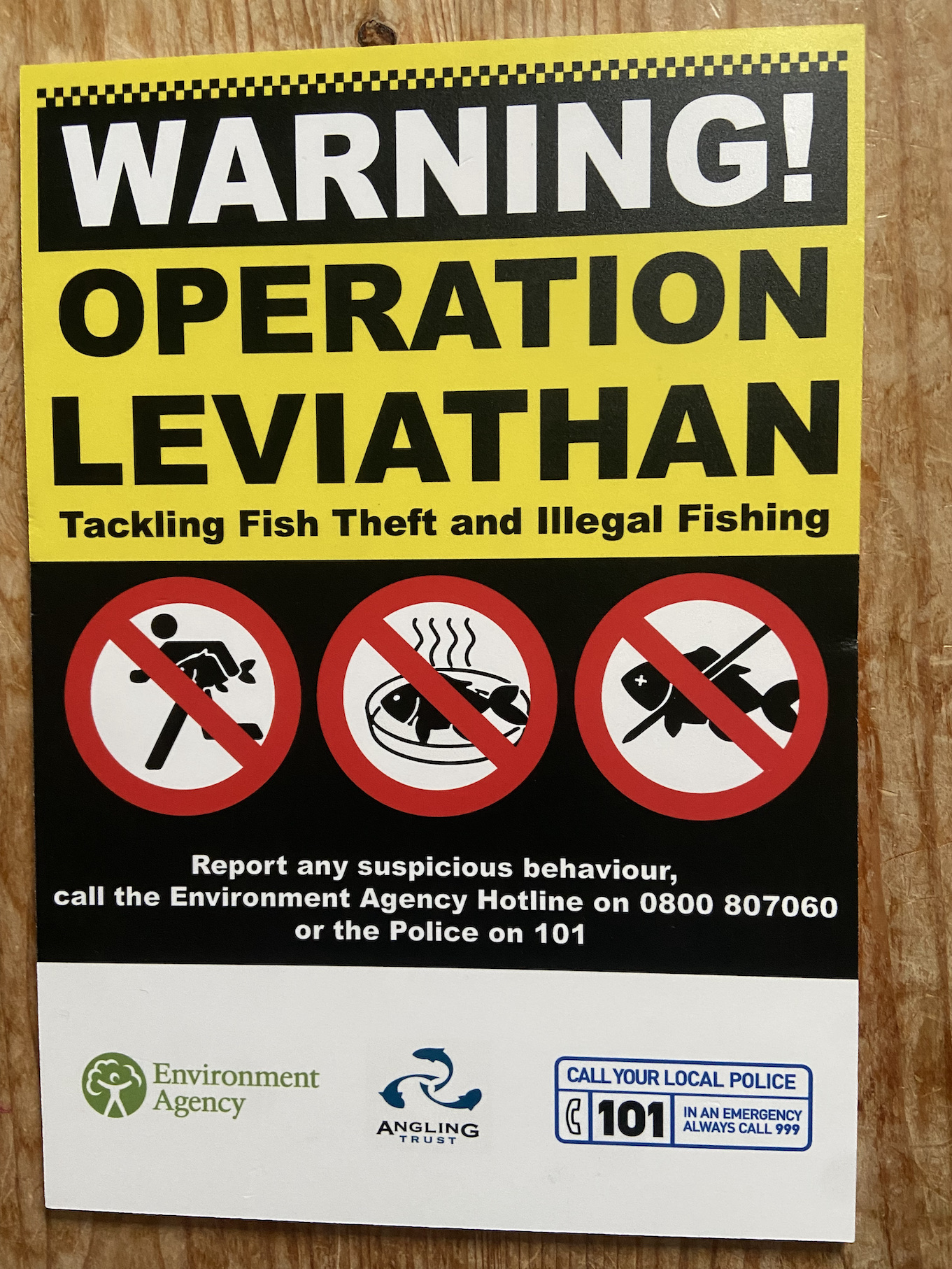
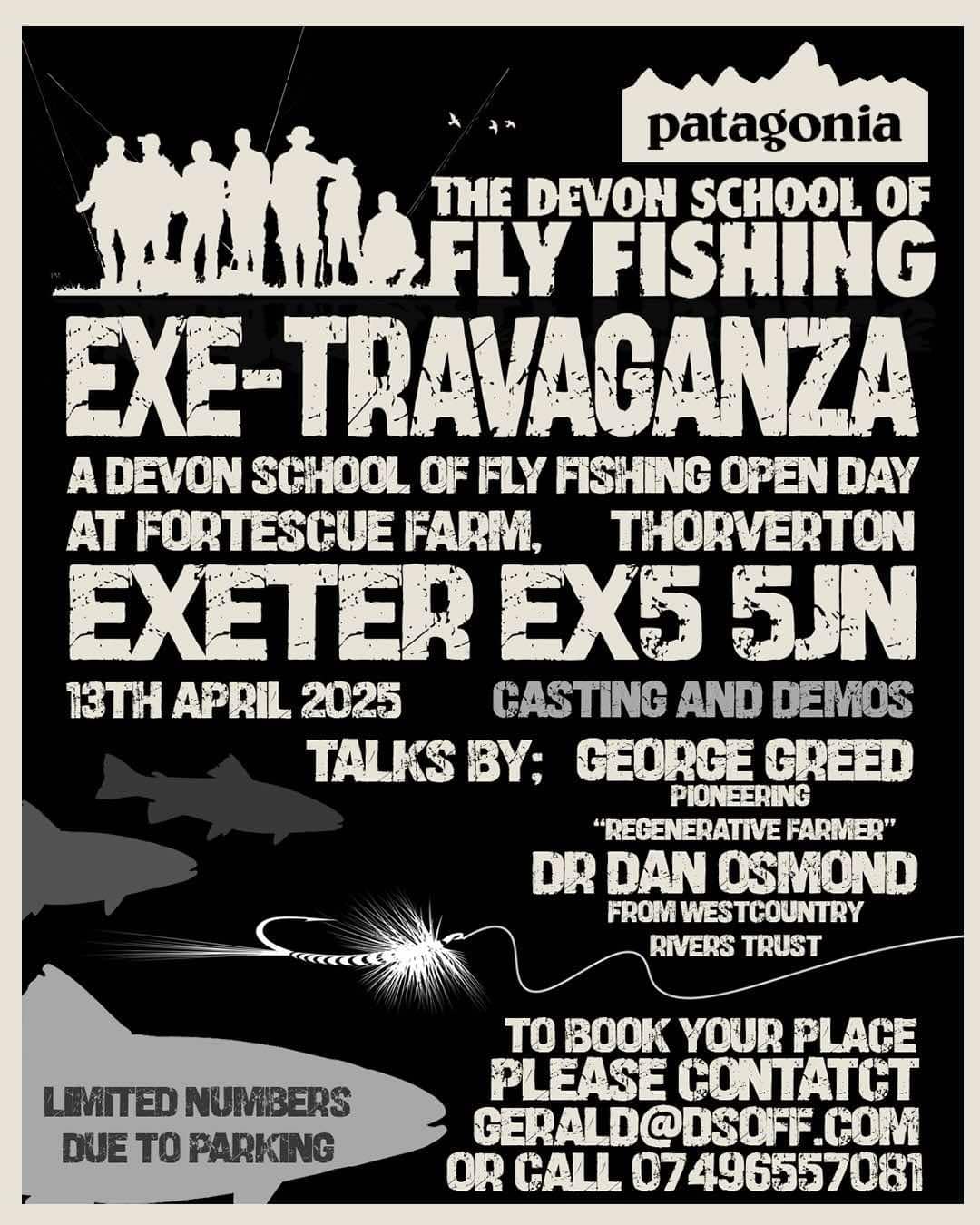
Over the past twelve months or so I have helped introduce the film Riverwoods to audiences across North Devon. The film highlights the vital link between tree’s and salmon within complex ecosystems. So when I learnt that West Country Rivers Trust were holding a tree planting day beside the River Barle close to the iconic Landacre Bridge I felt that I should attend and join this effort to improve this environment for the salmon.


Those who follow my posts on North Devon Angling News will know of my dismay at the dramatic decline in salmon populations across the UK and beyond. I have been visiting the River Barle since I was a child when I would play in the cool clear waters fascinated by the minnows and trout that darted to and fro. Later I fished for Salmon inspired by the writings of previous generations who enjoyed an abundance hard to imagine today. Thirty years ago I walked the bank in late Autumn to glimpse salmon huddled in deep pools prior to spawning.
It is poignant to reflect upon the plight of Exmoor’s salmon an iconic symbol of the Rivers health and the wider indicator of our planets health. The river is in trouble these flowing waters that teamed with life are dying and it is up to us to reverse this trend.


Our son James works with the National Trust’s wetlands team across North Devon and joined me as a volunteer. We took photo’s as we planted tree’s that will hopefully be there in twenty years or so when our granddaughter can perhaps visit to see where her grandad looked to the future. It is my hope that salmon will still be migrating to the Barle then as they have done for thousands of years.



There’s an old cliché that, ‘salmon live in trees’ but there is a deep and intertwined relationship between these fish and the vegetation that symbiotically supports both, not just the salmon. For trees, salmon bring rich nutrients from the sea up with their migrations to their spawning grounds. Numbers vary by ecosystem and health of salmon populations, but in some areas it has been observed that up to 70% of all nitrogen in trees comes from these migratory fish. This is reciprocated and for salmon, trees provide richer feeding opportunities through falling terrestrial insects and bolstering aquatic ecosystems with leaf and coarse materials for aquatic insects. Not only this, but trees provide resilience against climate change, through evapotranspiration and shading, vital in Southern England as climate threatens the already endangered Atlantic salmon. The benefits continue, as when trees succumb to the wind or are dragged in by beavers, the woody material aids natural processes in forming river stability and forming scours and complex habitat, all of which provides refuge for all different life stages of fish.
The view of the Barle valley from Landacre bridge is a treasured site for many local to or fond of Exmoor. This area is a site of Special Scientific Interest, both for the species-rich mire found within the floodplain but also for our friend the Atlantic salmon. The Barle is an area still supporting high numbers of spawning fish within the Exe despite declines across the catchment and has some of our highest annual electrofishing results for juvenile salmon each year. Despite the picturesque scene, this area is vulnerable, with high browsing from red deer and cattle leaving the banks bare of vegetation, and now showing signs of erosion that left unchecked would leave this very valuable area degrading further.
It was with this concern that we decided to step in with our ‘Trees for Salmon’ planting at Landacre Bridge. Supported by advice from Exmoor National Park Authority (ENPA), we set about a strategy of ‘applied nucleation’, whereby small clusters of trees are planted to act as a dense source of future tree recolonisation. This has the added benefit of small enclosures deterring deer from munching vulnerable young trees, the leading cause of the lack of vegetation in these parts. The work was funded through Natural England’s Species Recovery project and site visits and collaboration with their team allowed us to target our planting exclosures in areas that would not negatively impact the mire habitat but bring about an overall improvement in the long-term hydrology and habitat function at this location. Being such boggy ground doesn’t make the job easy however, with the team from Three Atop Woodland Services manually installing the tree protection exclosures, even through the worst of this winter’s blizzards. All of this was wonderfully supported by the enthusiastic permission and help of the landowner Jo, who has been watching and caring for the salmon in these headwaters for many decades.

With all that goes on behind the scenes, it was with relief that we were able to bring 1,500 young trees and a cheerful group of volunteers to Landacre Bridge on Sunday the 9th of February – the sun was even shining! After some words about the importance of the area and purpose of the day from local angler, Ueli Zellweger, and able demonstration from the WRT tree planting ninjas, Jay and Rob; the group of 25 dispersed across the valley to put trees in the ground at the exclosures. A mixture of native broadleaf trees were planted in, with sessile oak, alder, rowan, blackthorn and hawthorn forming this future riparian woodland community. So able and enthusiastic were our volunteers that by lunchtime, hot leek and potato soup in-tow, all of the trees had already been planted! After some warm bowlfuls and more fishy conversation, folks made their way back on home and the truck was loaded to return to the yard, 1,500 trees lighter. Though the effects of the hard work will take time to see, I look forward to returning to seeing these same plants in a couple of decades and the opportunities that they provide for the river ecosystem. Against the ongoing declines in biodiversity, most evident in freshwater migratory fish of all vertebrate groups; the day offered a positive opportunity to put boots on the ground, get mud under the fingernails and do something about it. We hope for many more opportunities to do the same again and scale up these restoration activities to support our wonderful rivers.
Dr. Dan Osmond
Senior Fisheries Scientist
Westcountry Rivers Trust










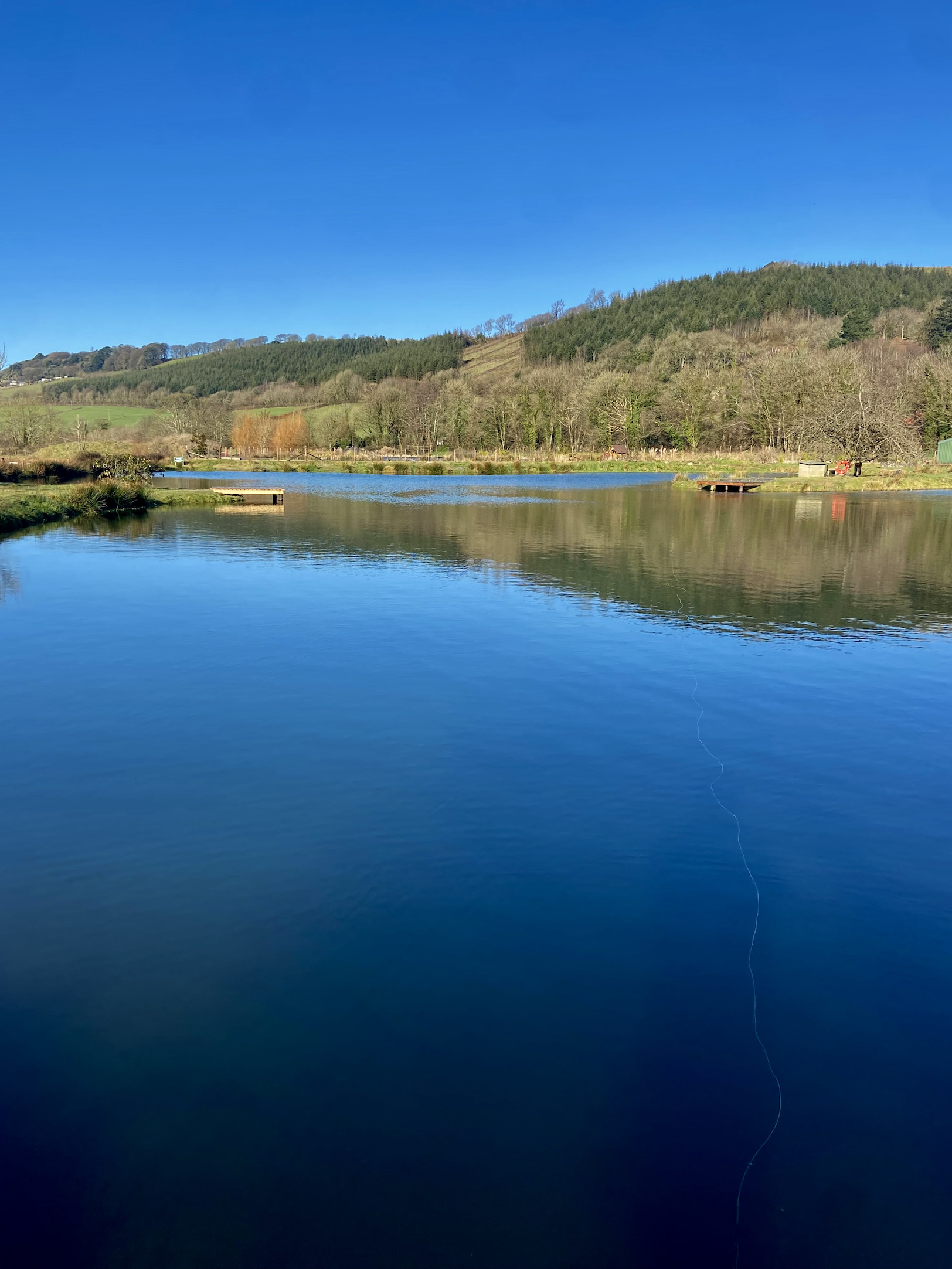
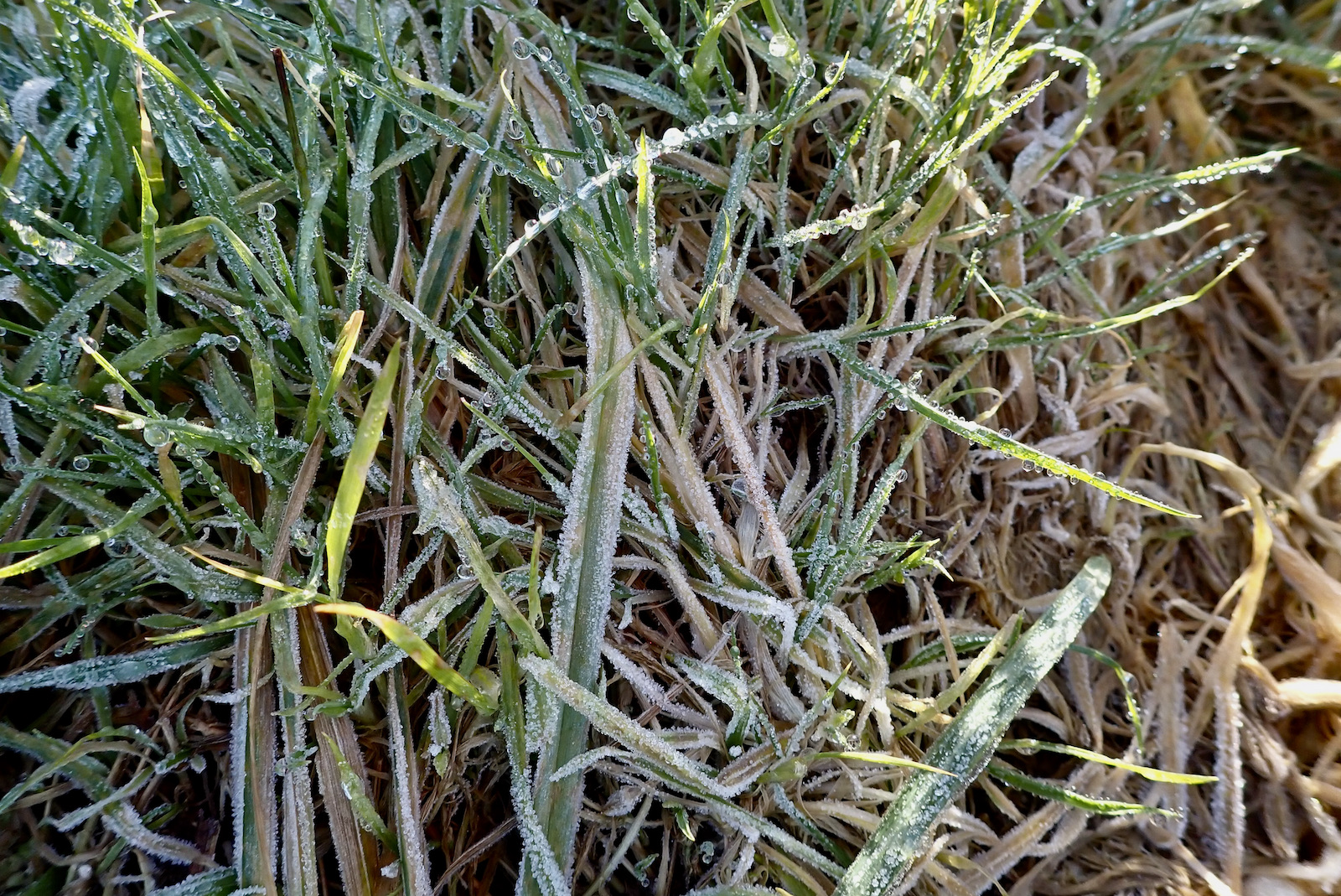
A cloudless blue sky, bright sunshine a cold east wind and frosty margins; conditions that are generally not good for fishing with one exception perhaps? Winter trout fishing in small still-waters is often at its best during the winter months and when few other fish are prepared to feed the inhabitants of these calm waters can provide exciting sport if you get the tactics right.
I arrived at Bulldog Trout fishery for a leisurely start at around 9:30am and after chatting with fishery owners Nigel and Tom Early I grabbed my already set up gear. My standard set up for Stillwater trout consisting of a 10’ 7-weight , Snowbee Diamond 2 Fly Rod, Spectre Reel, XS- plus Spectre Floating Fly Line an 8lb b.s Fluorocarbon leader and an Olive damsel nymph.
A pure white egret glided close by alighting upon the bare branch of a riverside tree. Buzzards were gliding high above the valley in the vivid blue sky rekindling memories of the osprey I had seen at the fishery last Spring.
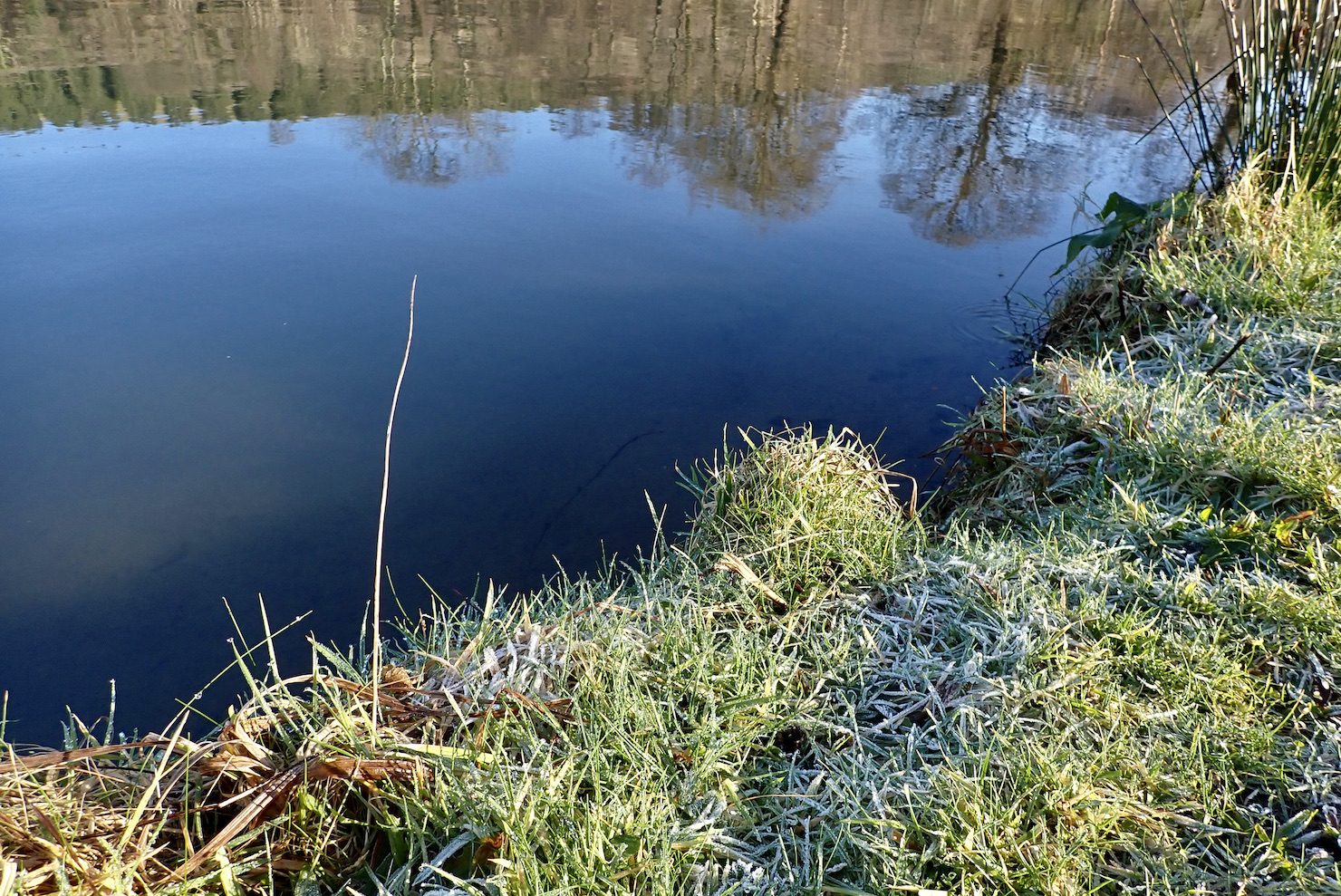
I walked the bank peering into the crystal clear water hoping to spot a trout in the margins. I chose a platform that allowed me to put a line out onto water without casting my shadow. I expected a take at any moment but the trout proved elusive as I explored various swims around the lake.
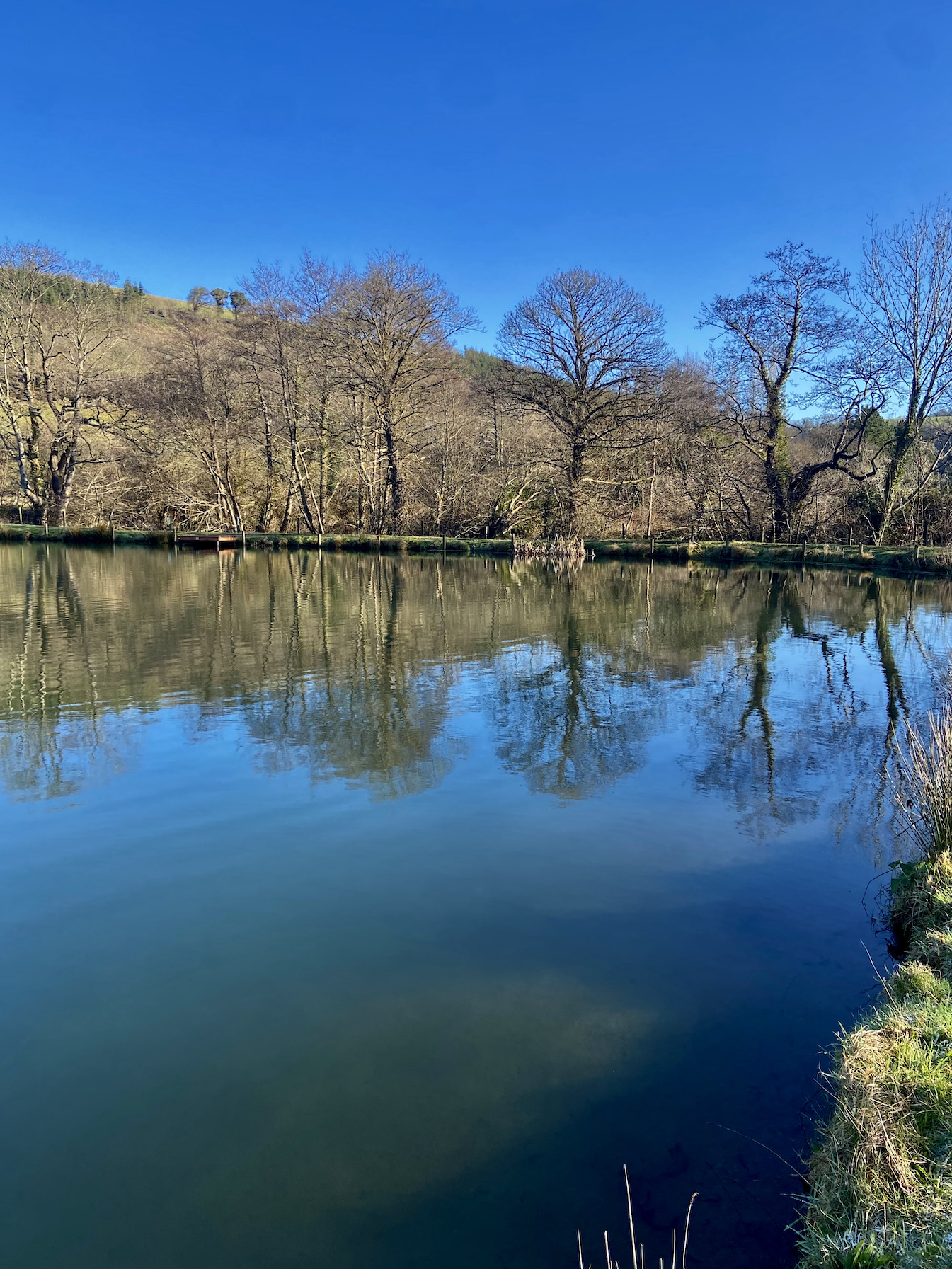
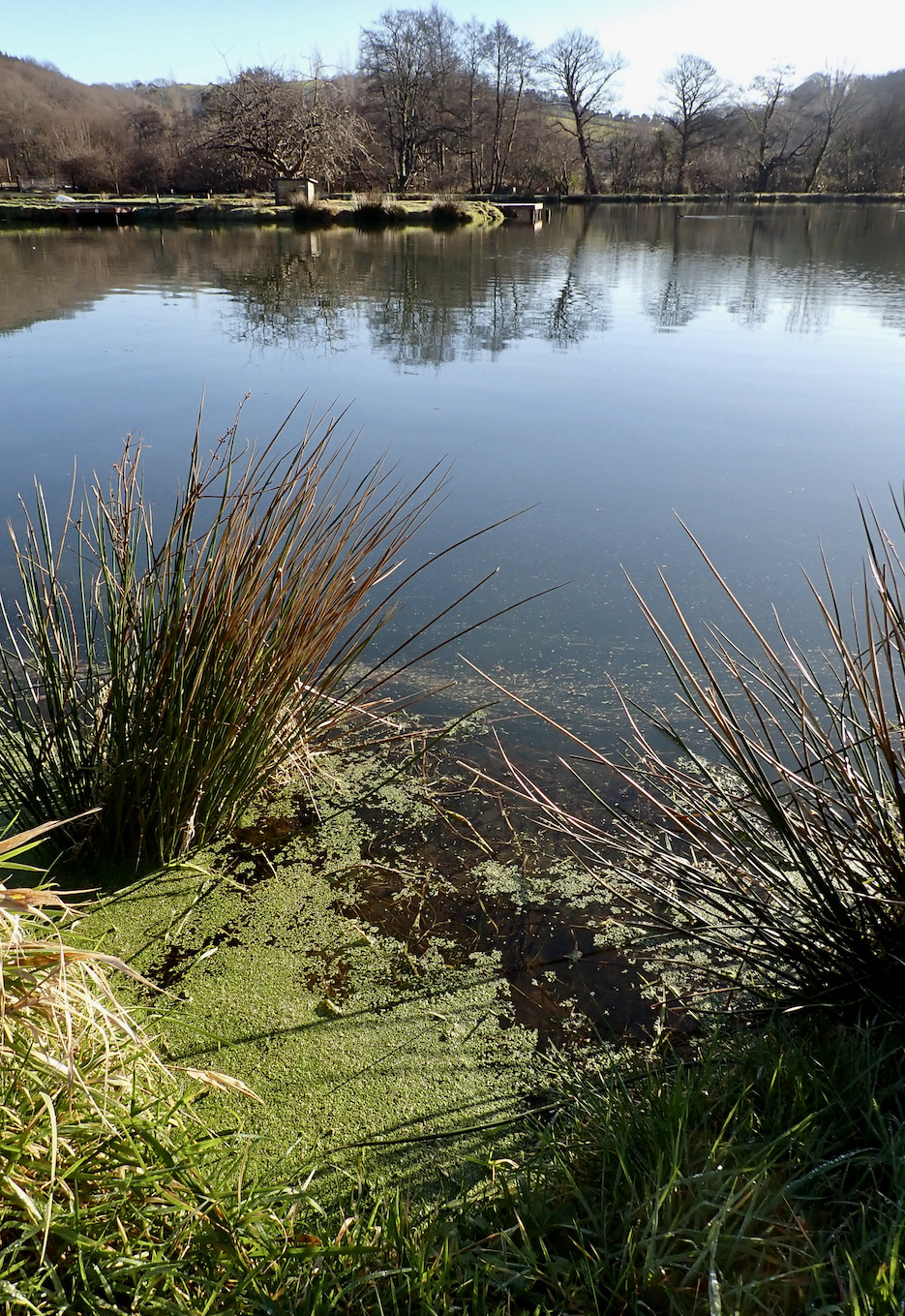
The electric blue flash of a kingfisher caught my eye as it darted across the lake, quickly followed by a second bird that I was able to focus on as it sped past.
I moved to the windward bank and tied on a bright yellow damsel Nymph/lure. Casting out I allowed the gold headed fly to sink before beginning an erratic retrieve. The line zipped delightfully tight, the rod hooped over and a chunky rainbow of around 5lb tested the tackle. It’s always good to get that first fish in the bag avoiding the blank.
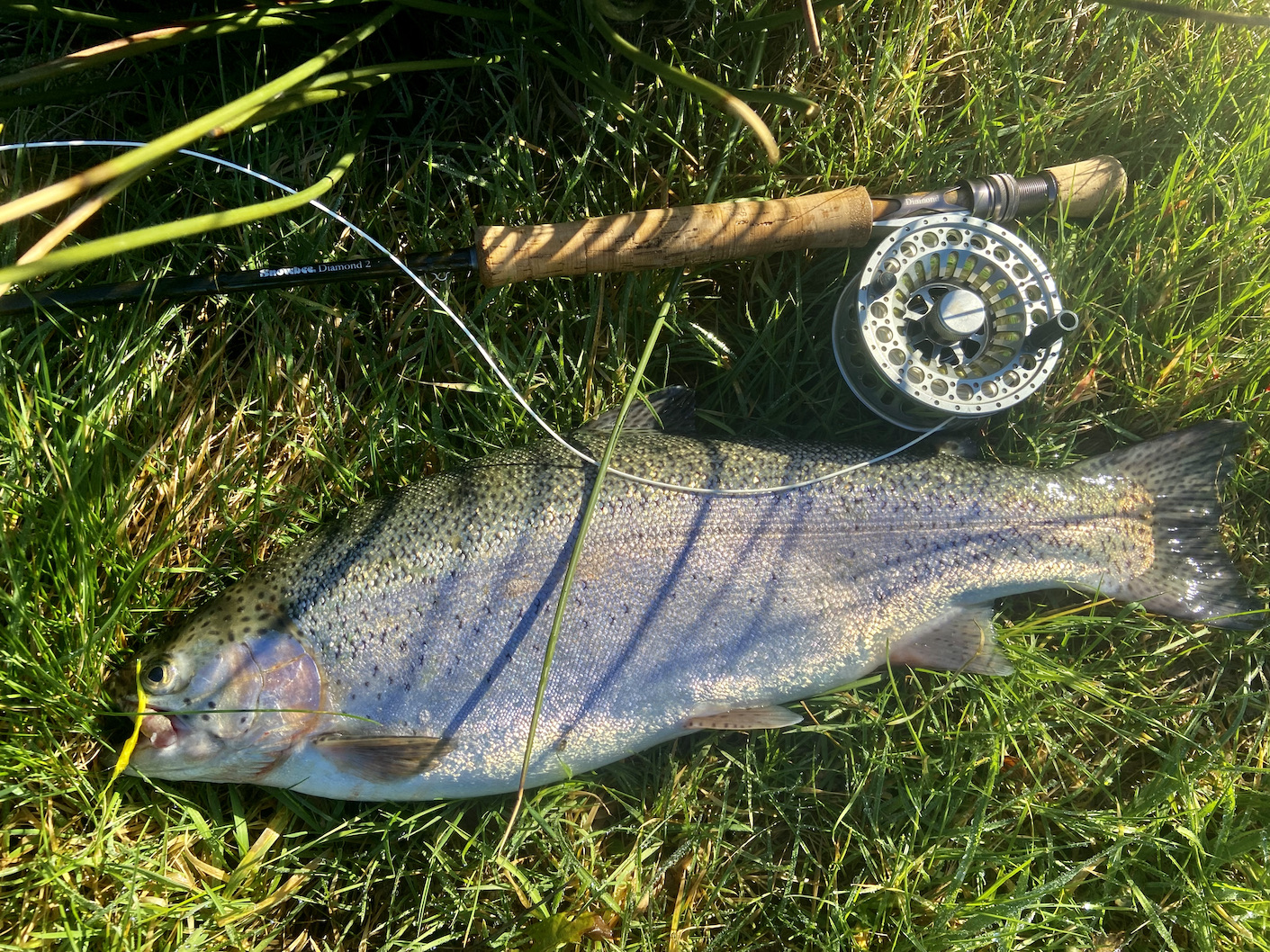
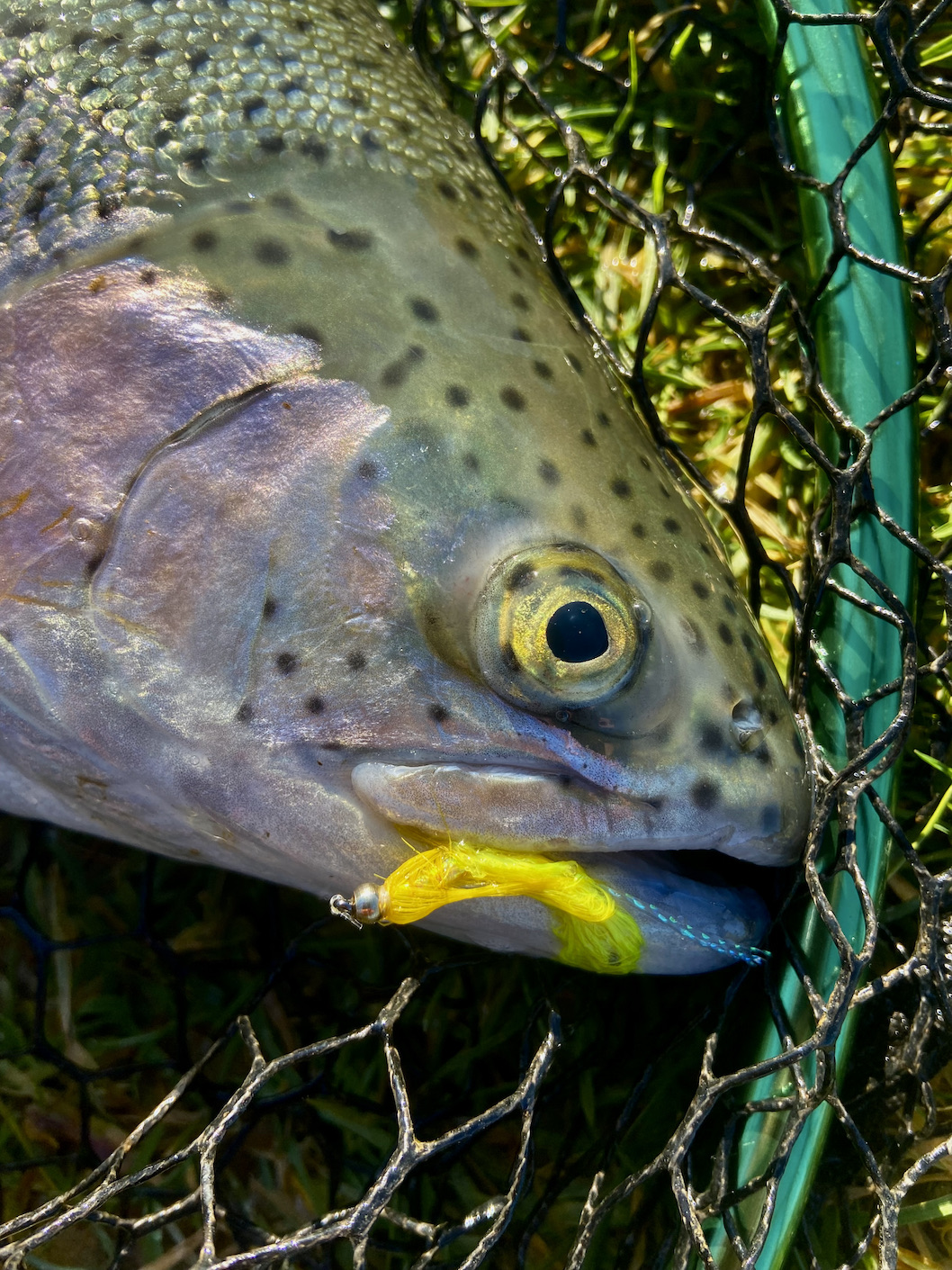
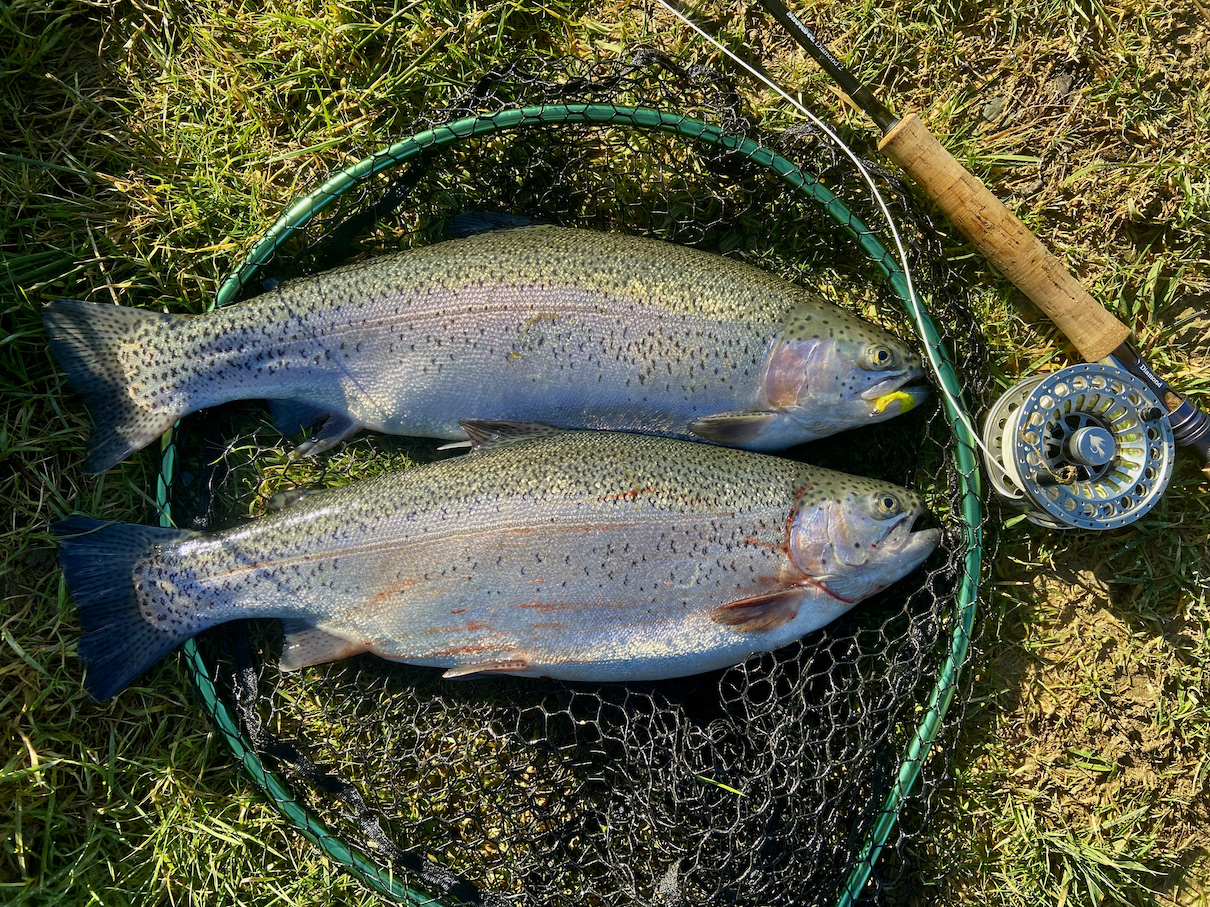
It did not take too long to get the second fish another rainbow that was almost a twin of the first. Confidence in the lure now cemented I fished on and soon added a third rainbow of a couple of pounds.
It seemed to go a bit quiet and my luck took a turn for the worse as over the next hour I hooked into three hard fighting trout that all shed the hook after prolonged and spirited tussles. I checked the hook that appeared to be razor sharp and in good order. Feeling that I needed a change I swapped to a green, yellow and black damsel. After five minutes working this lure deep and slow the line once again zipped tight as another good trout attempted to shed the hook. This one was fighting deeper and shaking its head vigorously and I was delighted to eventually slide a fine tiger trout over the rim of the waiting net.
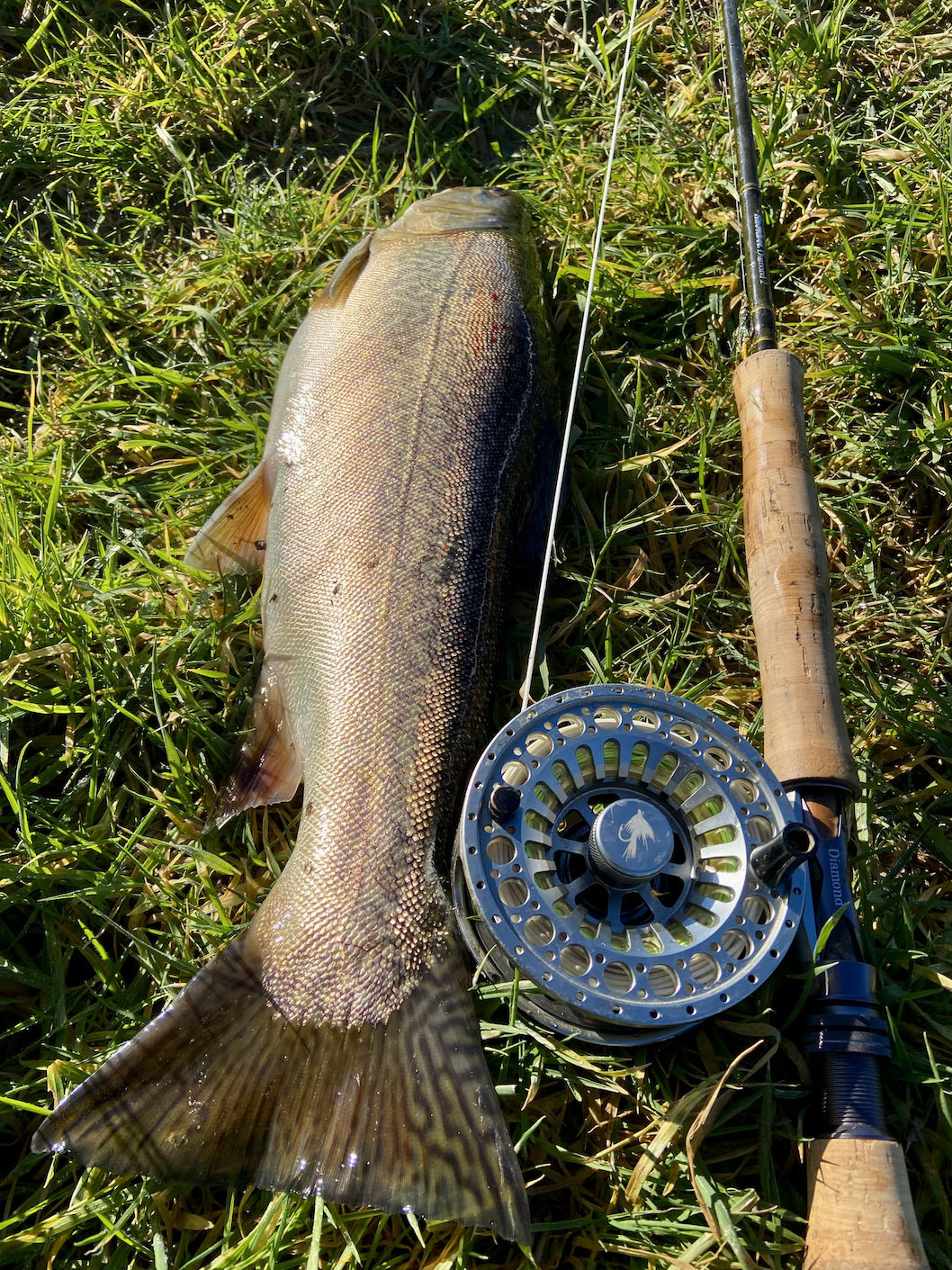
With four trout in the bag I was content with my days sport but as always there is that desire to complete a limit bag. It was now mid-afternoon and as is often the case the trout appeared to have switched off.
It was perhaps a good time to have a walk around the lake trying different areas. There were two other anglers on the lake and they had both caught rainbows in the 3lb to 4lb size range but like me were not finding the fish easy to tempt.
A walk around the lake failed to inspire as I had a feeling that most of the trout were lurking in the windward side of the lake. So I headed back to the area from which I had enjoyed success earlier in the day. Much of my fishing is determined upon a hunch and a feel for where the fish will be. The occasional fish was also rising in this area prompting me to try a short time with a slow sinking daddy longlegs a pattern that often tempts a trout at Bulldog.
After a couple of chances a rainbow of perhaps 2lb 8oz took my PTN fished on a dropper bringing my total to five fish. Deciding that with the sun sinking below the tree line it was a good time to pack up and gut the trout. A welcome facility at Bulldog is a fish preparation area where you can gut and fillet the catch removing the need to do so at home.
As I returned to the car Brian Sedgebeer was playing a good trout that had succumbed in the fading light of the day.
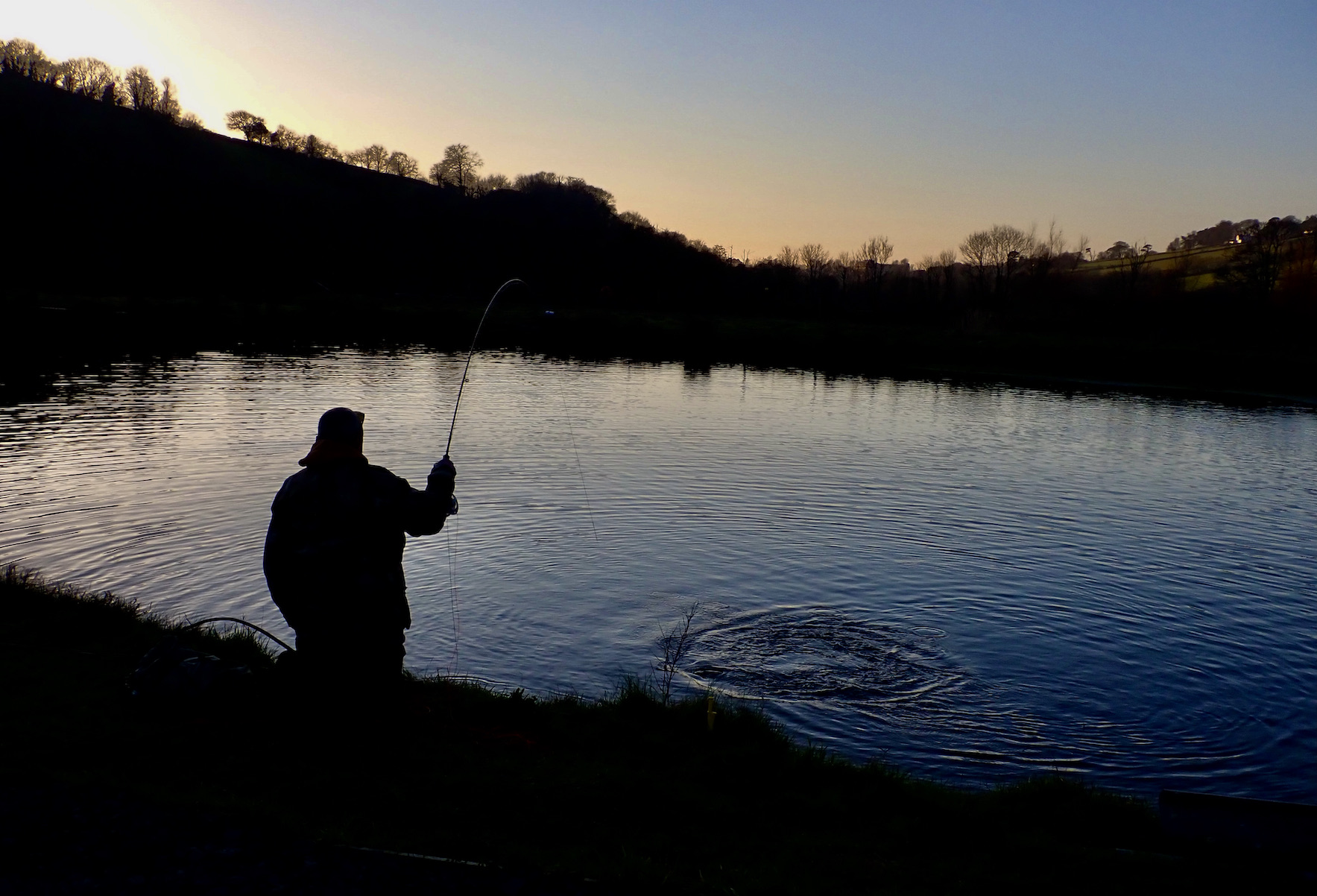
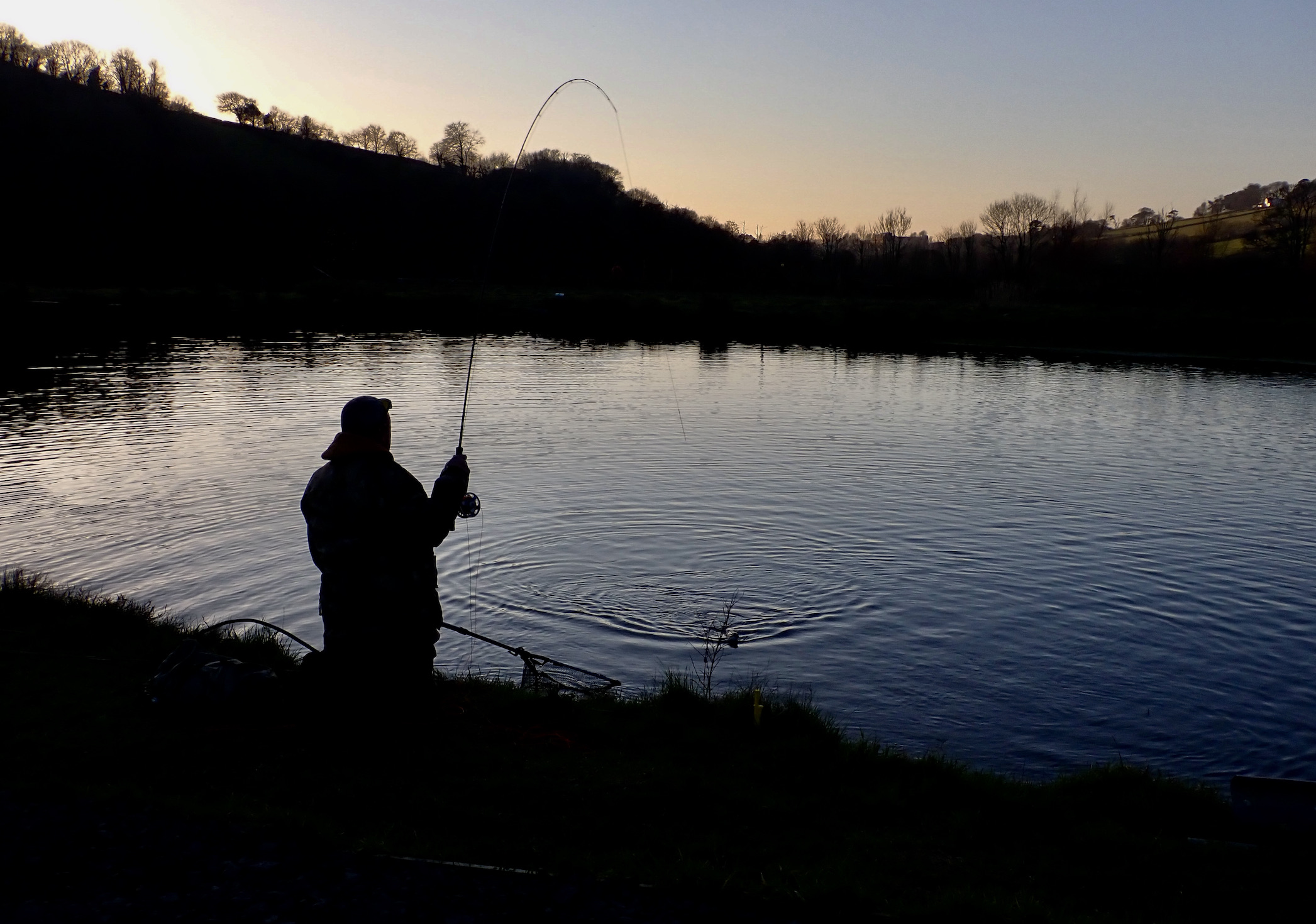
Bulldog Fishery is now a premium trout water that offers superb sport with a very good average size of stocked fish. I have found that the Bulldog trout seem to respond well to larger lures with small imitative tactics less successful. This may of course change during the warmer months when fish become more active feeding closer to the surface. A floating line with a long leader or an intermediate line will generally cover all days at Bulldog as the fish are seldom lurking close to the lake bed.
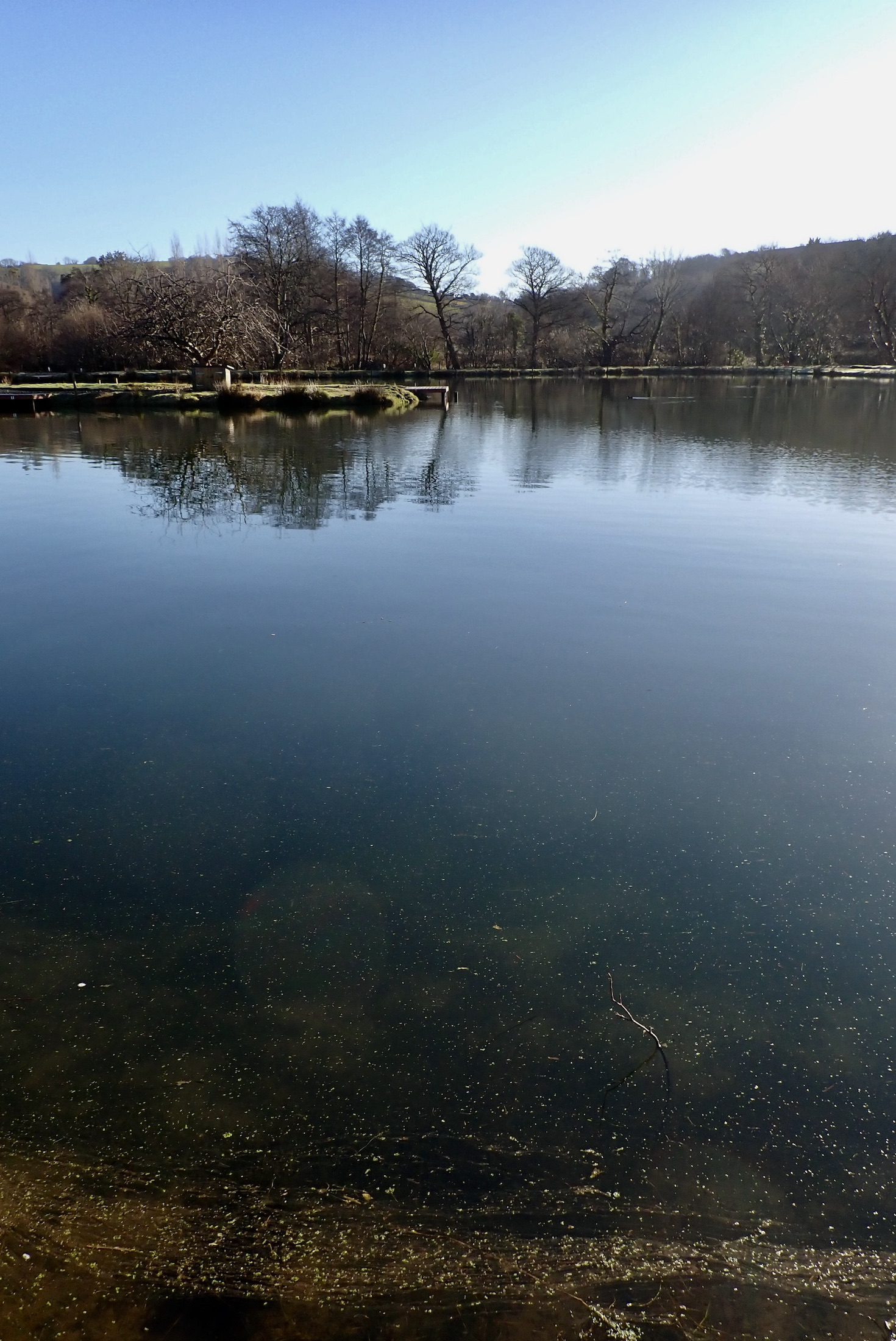
The South West Fly Fair makes a welcome return to Roadford Lake on Sunday 23 February. The fair is sponsored by Turrall amongst others, and is always a highlight in the region’s angling calendar.
The day will include:
Bring the family along too – plenty of activities for all ages. Bring your bikes and wellies to explore the lake.
Entry is £7 for adults online in advance (£10 on the door) and free for under 18s. Entry includes car parking and a raffle ticket.
Book in advance to avoid disappointment!
https://www.swlakestrust.org.uk/south-west-fly-fair-2025-trout
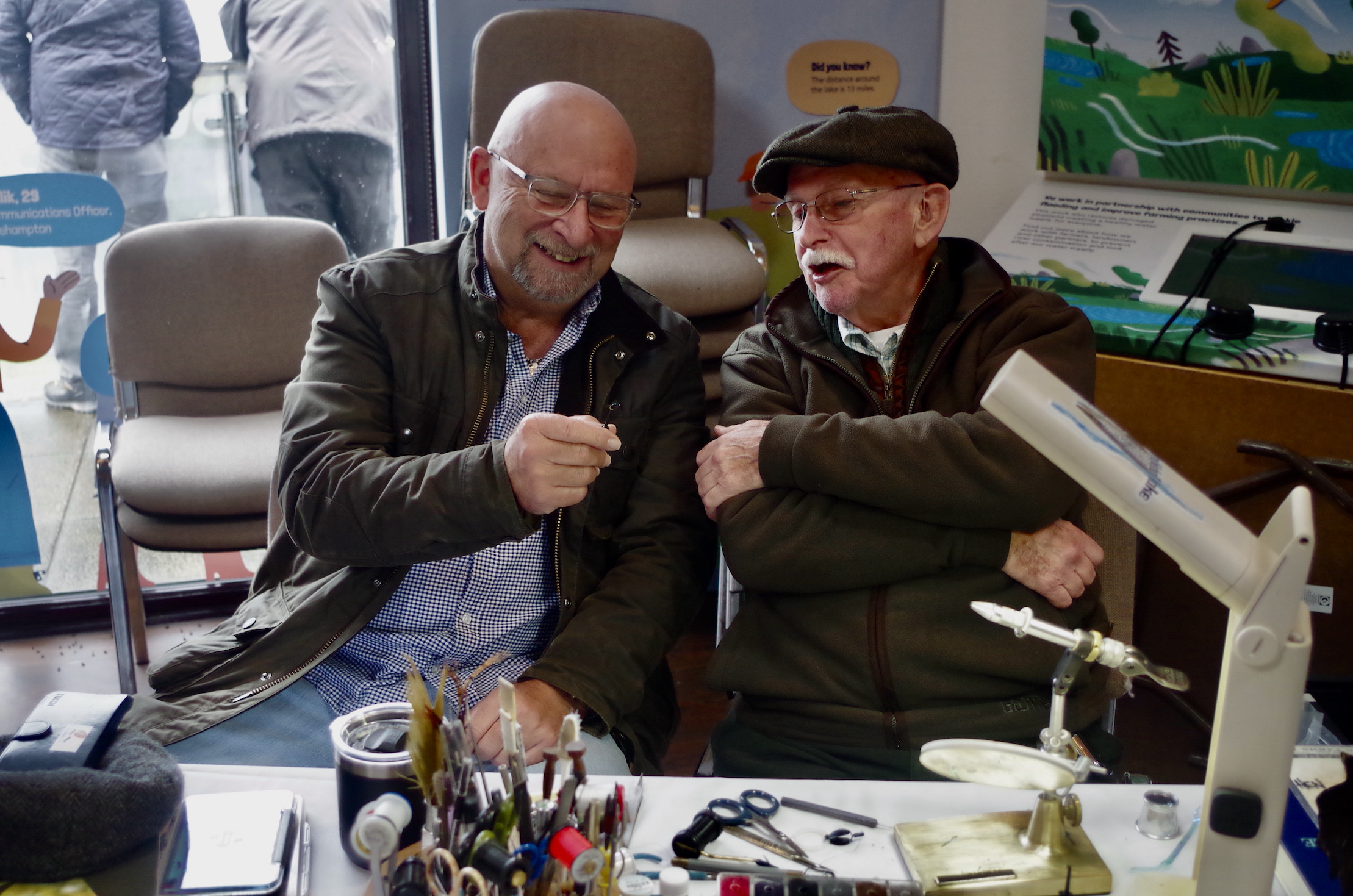
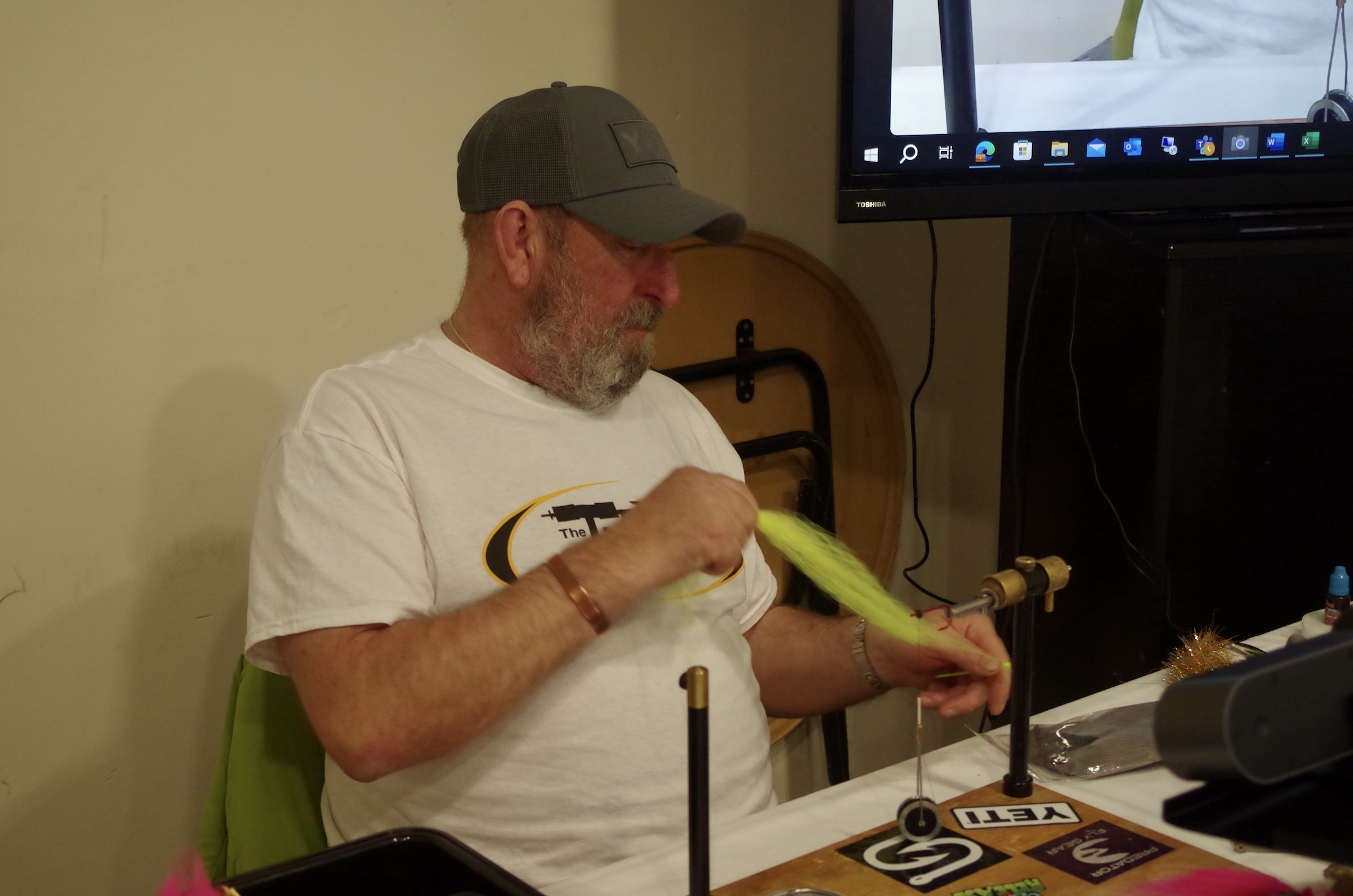
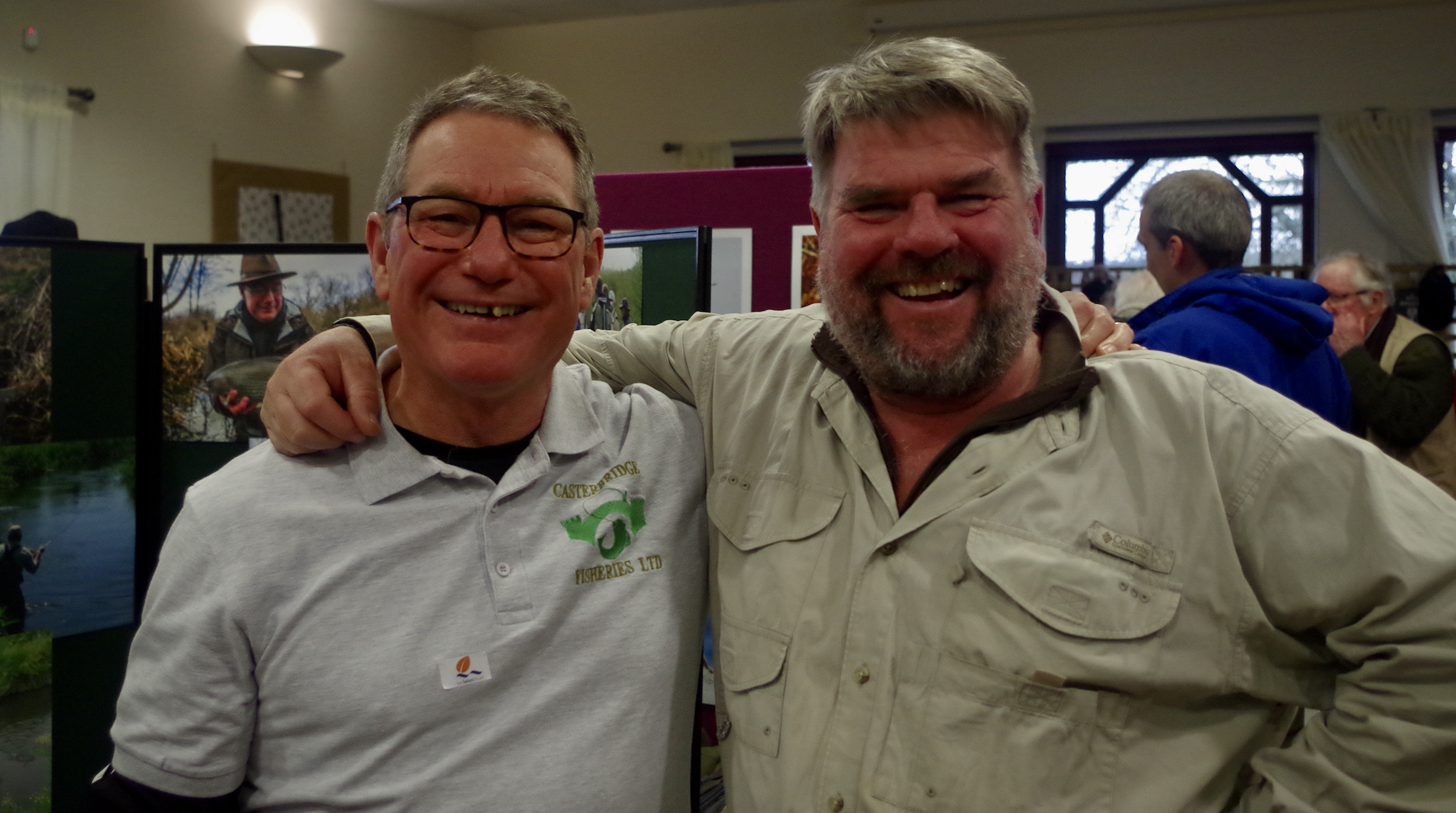
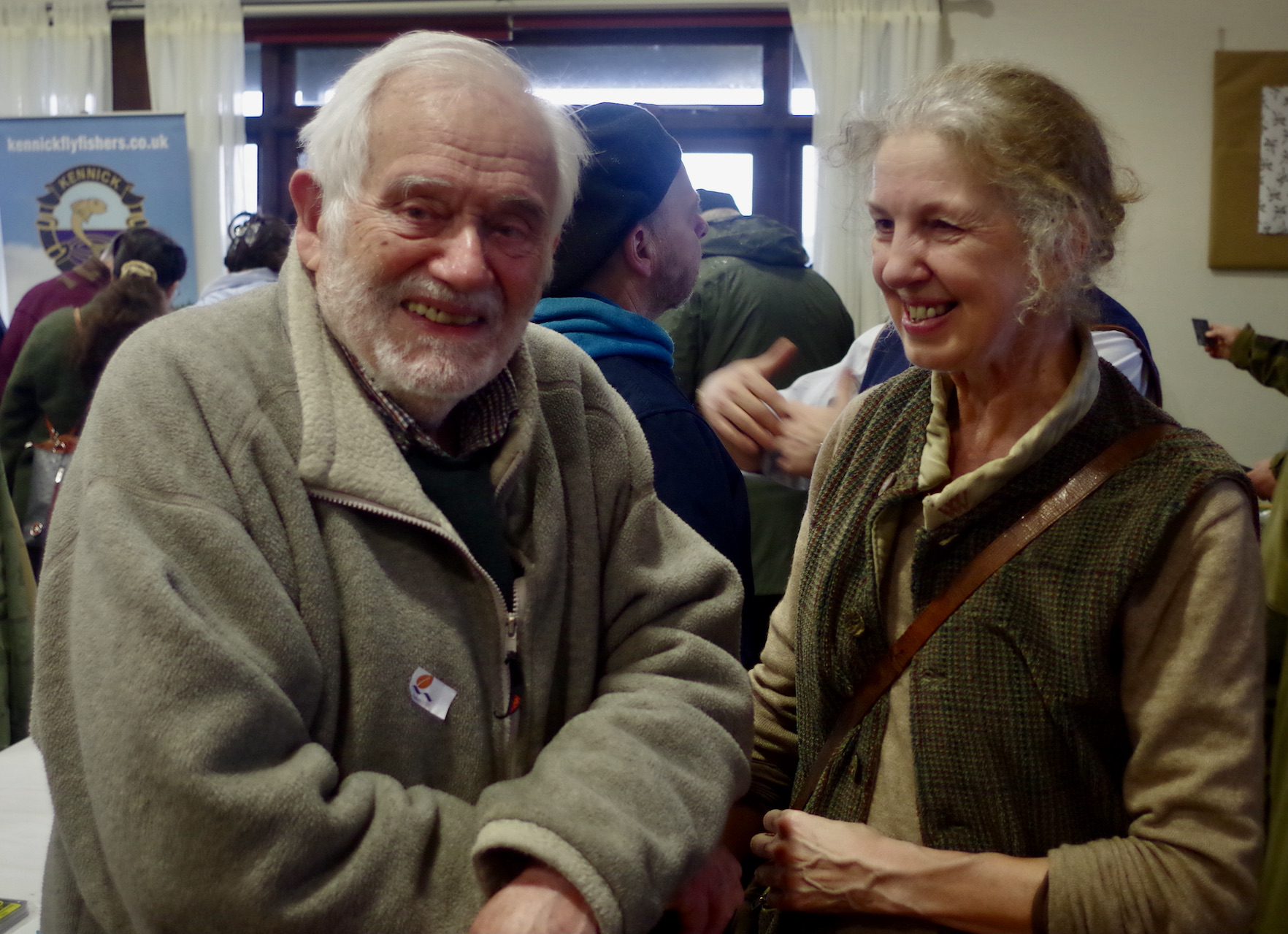
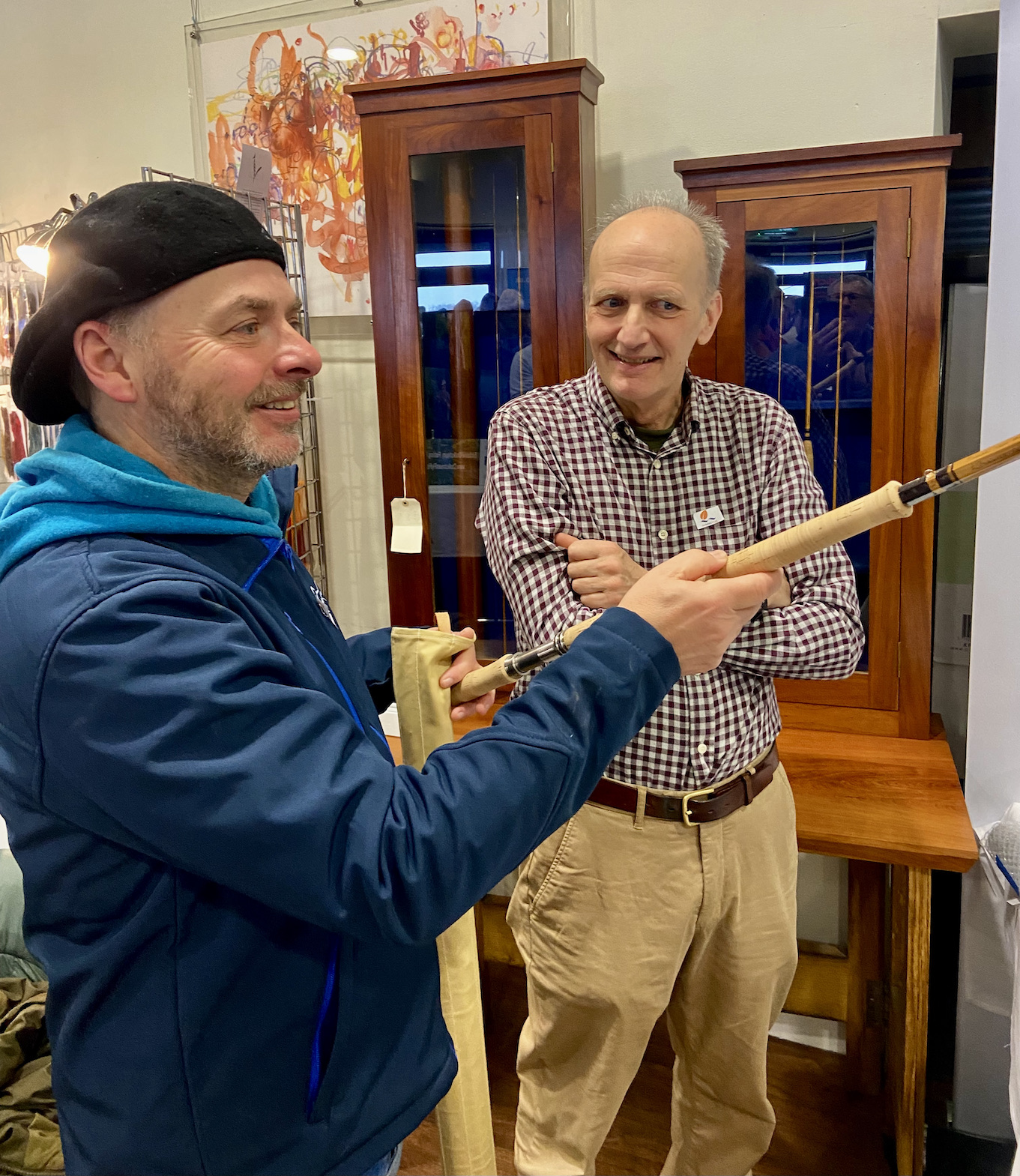
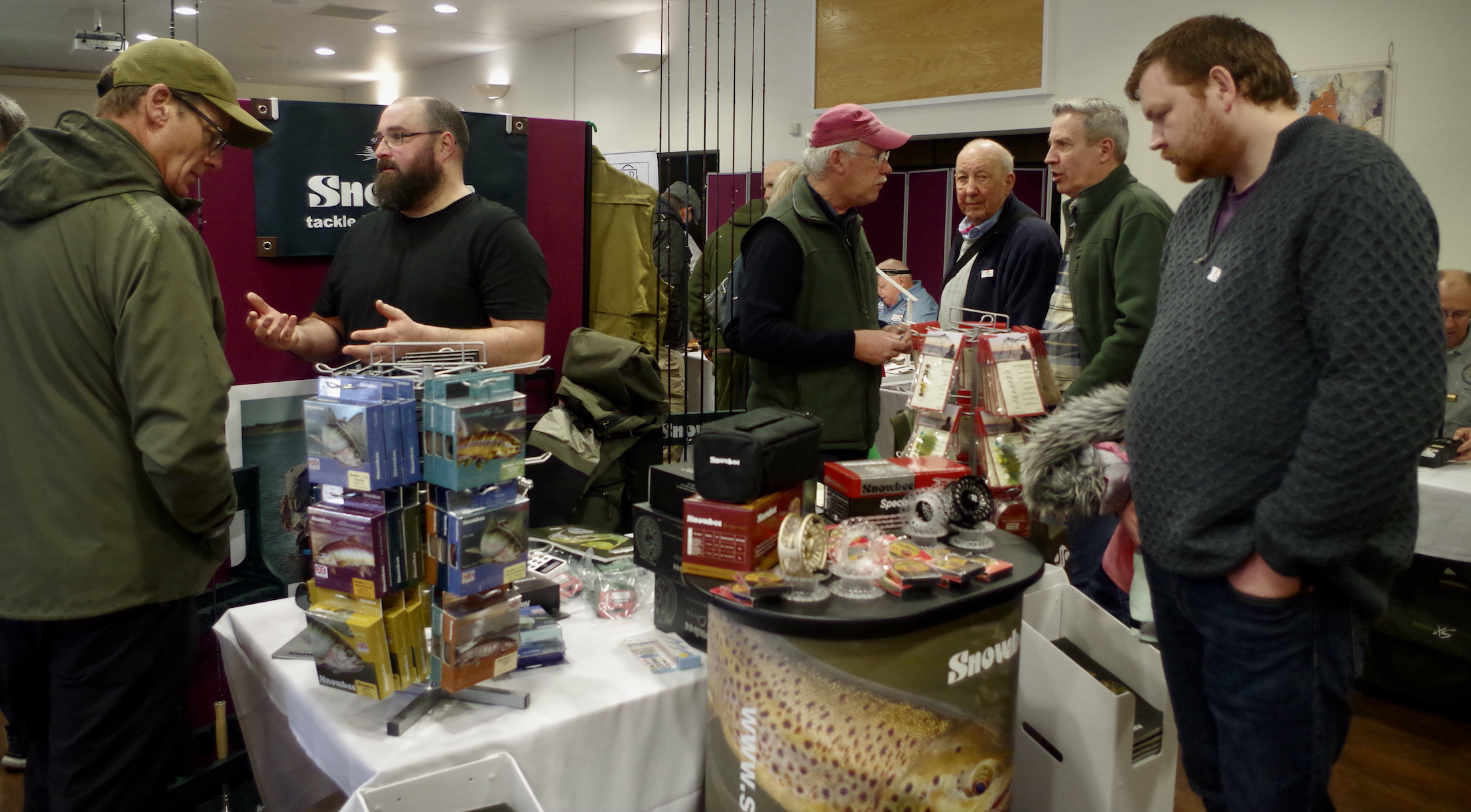
The winning fish an eel of 18lb 10oz was caught by Jonathon Stanway with his brother Ross Stanway securing runner up spot with an eel of 12lb 2oz. Third was Ollie Passmore with an eel of 11lb 15oz.
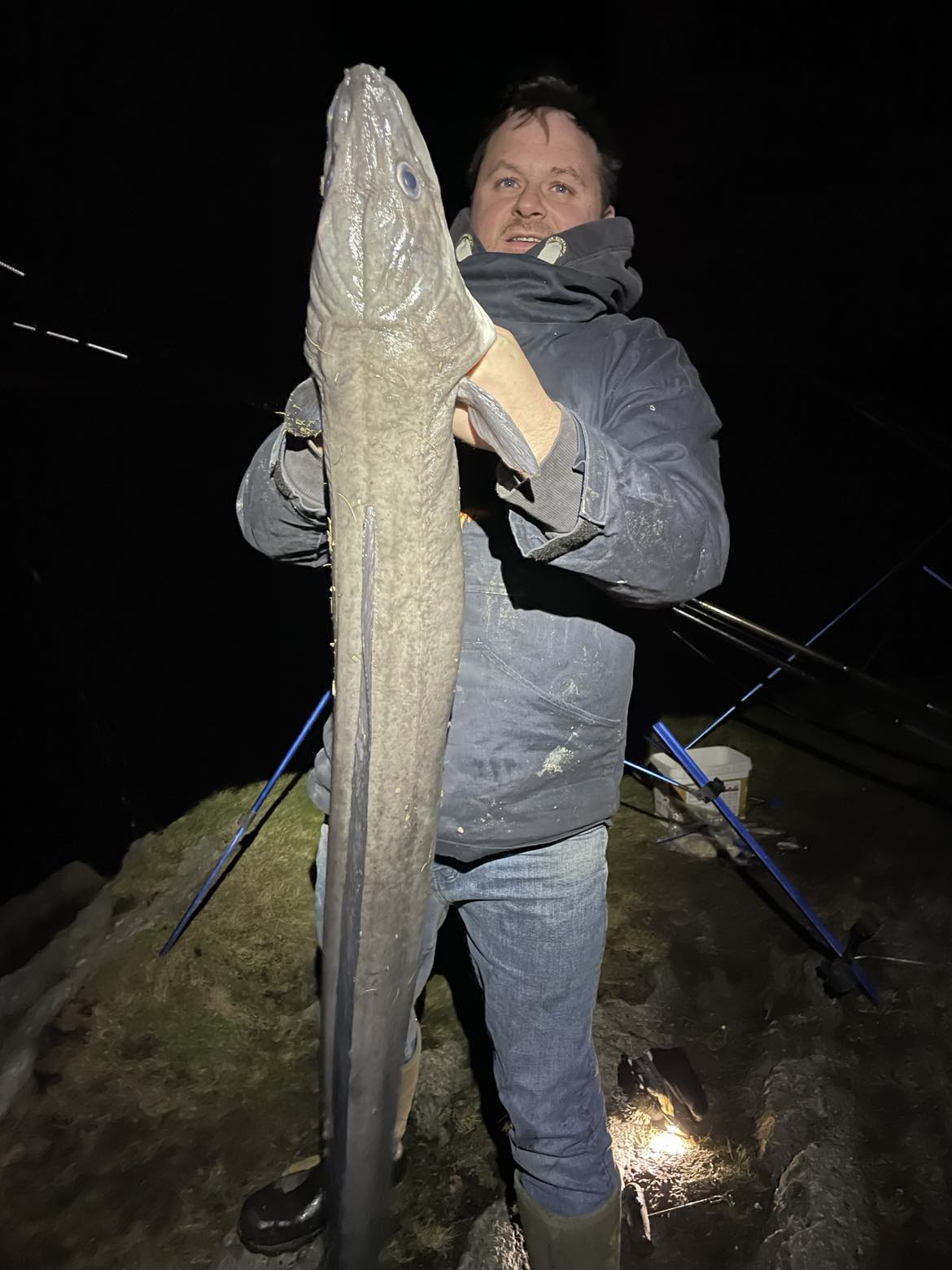
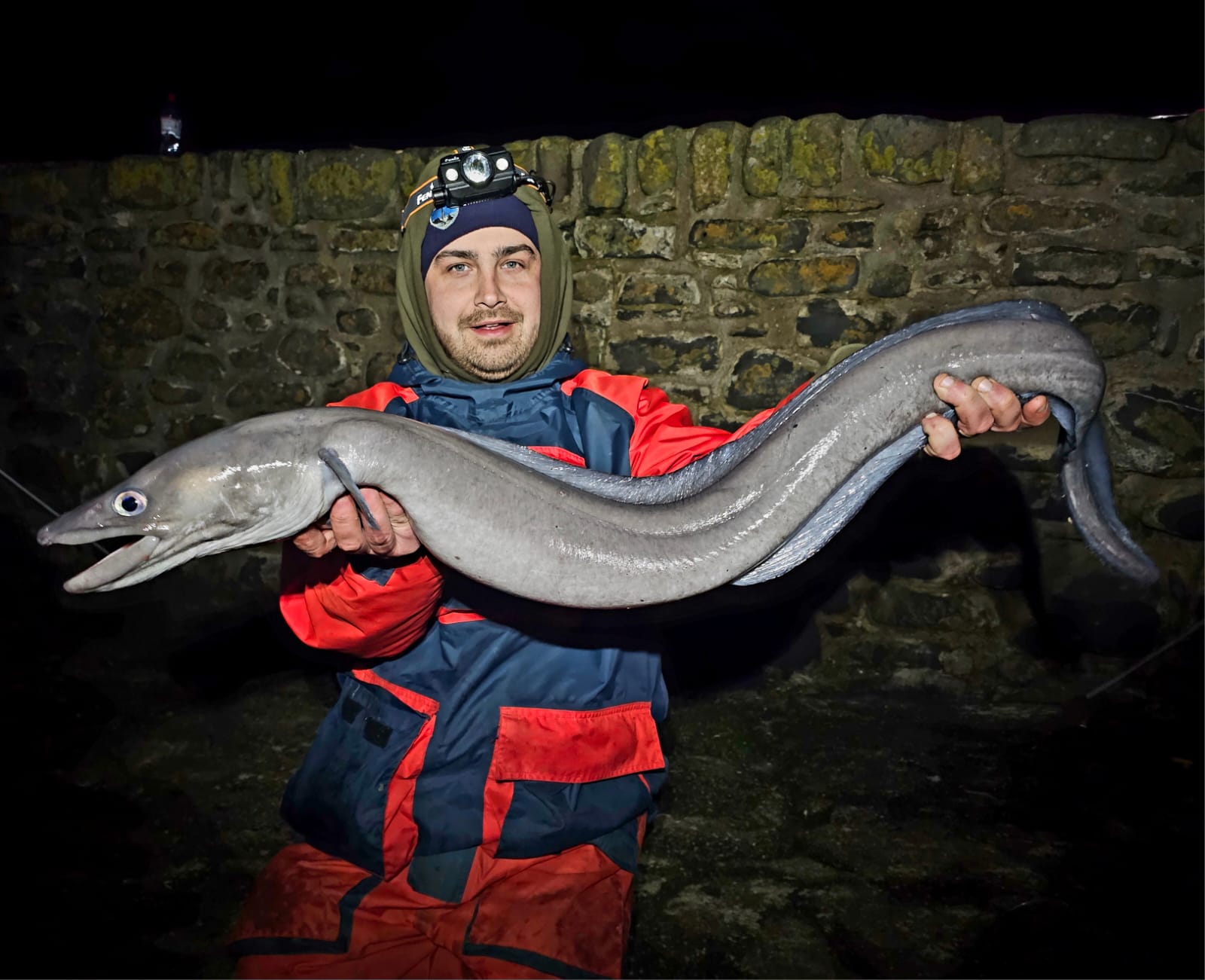

Conger dominated catches during this six hour evening competition with members fishing various marks on the North Devon Coast. The conger seemed to be on the feed in a big way. I fished with club secretary Nick Phillips and we landed close to twenty eels, sadly all were less than 10lb. I did hook what felt like a very big eel and was dismayed when the 7/0 hook I was using snapped an event that has never happened to me in over fifty years of fishing.
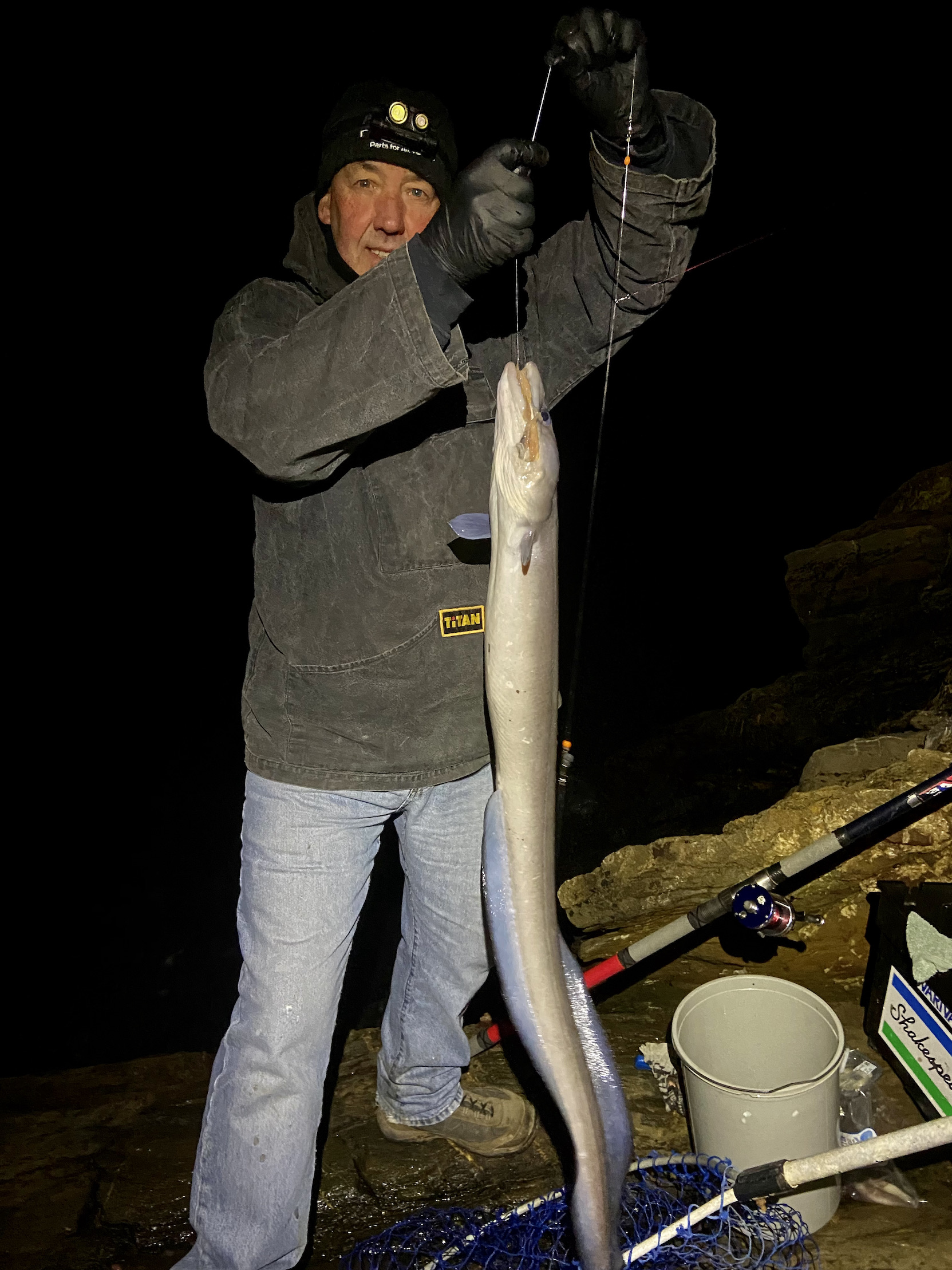
Chairmans report
An interesting year with potential areas for the club to grow. The fun and species league based around Ilfracombe has generated an influx of new members and as a club we need to ensure this initial enthiusasm doesn’t dwindle away. How we do that is of course up to the members?
The core of the club is still specimen based but there has been a change in the way we fish with less social interaction and a more insular approach. Reduced access to the coastline is an issue as an increasing population leads to ever more restrictions on parking and access.
The challenges we face as a club are common to most clubs and we need to address areas where we can perhaps offer more to the membership. Though all a club really provides is a place to come together and share a common love of angling. It is a concern that Nick and I have been at the helm of the club for forty years or more! If there is a future then at some point some young revolutionaries will have to kick us out.
Fish recorders report
38 species from Ilfracombe Pier and harbour area!
Toby Bassett caught – 34 of them!!!
Specimens fish – 51 over 100%. Kyle landed – 20 of these
(49 in 2023)
Gilthead bream seem to thriving in the estuary and I suspect there were more 100% smoothound caught than recorded? A big change in what is being caught in the estuary with smoothound and gilthead bream caught as far up as Fremington Quay.
The winter fishing on the Open coast has been difficult with small conger and dogfish dominating catches. Good to see a few big pouting caught but the numbers of pouting and whiting are a fraction of those in past decades.
The summer bass fishing was good in the estuary and for some periods on the open coast.
I am hoping to see a big increase in fish recorded from the boats this season now that we have a Charter boat skipper in our midst. I would like to recruit a few new members wanting regular boat trips. As members they will have secure access to regular trips and a reasonable rate.
As regards to fish entries they are a valuable source of historical data for the club so please send in your fish. Either via email, Watts App, Messenger or good old phone.
2024 Trophy Winners
Cod Trophy Kyle Bishop 18lb 5oz Shore
Bass Trophy Kyle Bishop 9lb 9oz Shore
Mullet Cup Graham Snow 5lb 3oz Thick lip – Shore
Conger Cup Kevin Legge 26lb 9oz Shore
Flatfish Cup Nick Phillips Flounder 1lb 4oz
Shore Shield Ollie Passmore – Gilthead bream – 6lb 10oz
Medway Cup Wayne Thomas – tope – 41lb
Ray Shield Shane Pavio Hookway – S/E Ray 11lb 4oz
Wrasse Trophy – Kyle Bishop – ballan wrasse 4lb 8oz
Predator Award – Kyle Bishop – spurdog 15lb 3oz – Shore
Burgess Trophy Zephyr Laramy- Gilthead bream – 5lb 2oz – Shore
Scouse Shield – Ross Stanway – 1lb 2oz
D Kyte Award – Dan Welch – 6 mullet – total – 593%
Out Of Limits – Skate 136lb
Merit Award – Kyle Bishop
Thornback Cup – Shane Pavio Hookway 9lb 6oz
Specimen League – Kyle Bishop
| cod | 18lb 5oz | 152.6 | S |
| spurdog | 15lb 3oz | 151.875 | S |
| tope | 43lb 10oz | 145.417 | S |
| conger | 26lb 1oz | 130.312 | S |
| bull huss | 15lb | 150 | S |
| Smoothound | 13lb 4oz | 132.5 | S |
| 862.704 |
Runner up
| Shane Pavio Hookway | ||||
| bull huss | 11lb 12oz | 117.5 | S | |
| small eyed ray | 11lb 4oz | 112.5 | S | |
| bass | 7lb 4oz | 90.625 | S | |
| conger | 20lb 5oz | 101.563 | S | |
| pouting | 1lb 6oz | 91.667 | S | |
| thornback ray | 10lb | 90.909 | S | |
| 141.667 | S | |||
| 746.431 | ||||
Fish of the season –
Winter – Kyle Bishop – cod – 18lb 5oz 152.6%
Spring – David Brooke – gilthead bream 4lb 1oz – 135.417%
Summer – Ollie Passmore – Gilthead Bream – 6lb 10oz – 220.833%
Autumn – Graham Snow – Thick Lipped – 5lb 3oz – 129.688%
I spent an hour or so working through the results of the 2024 Combe Martin SAC – Ilfracombe Harbour fun & Species Competition the results are below.
Well done to all who have taken part throughout the year. We had a very good uptake at the start of the year and special thanks go to Toby for his enthusiasm and efforts in recruiting new members. The number of species caught across the membership was amazing. The club sub group has added a different dimension the club and it is essential that this is continued. The club has its AGM on Friday 31st at the Mariners Arms, Braunton and it would be really good if as many as possible attend. This is your club and ideas are required.
I suggest we have a sub group coordinator or maybe a meeting at Ilfracombe for a chat and get together and maybe a combine with the first fish of the year.
To continue the club species total accumulator on both an annual and ongoing basis.
Arrange events throughout the season maybe Winter, Spring , Summer & Autumn. Plus at least one social meet at Ilfracombe in conjunction with one of these events?
Please Bring ideas to the AGM….
Total Number of species caught by club members – 38
1st – Toby Bassett – 34
2nd – Daniel Welch – 31
3rd – Ross Stanway – 30
4th – Nigel Oliver 24
5th – Gary Prout 21
6th– Lenny Lake – 19
7th Solly Welch – 18
7th – Ted Childs – 18
8th Paul Lorrimore – 13
9th – Charlie Stanway – 10
10th – Andrew Laramy -9
Zephyr Laramy – 9
Wayne Thomas – 9
11th – Jake Stanway – 7
12th – Matt Childs – 6
A sub group meeting is to held to look at how the league will proceed in 2025.
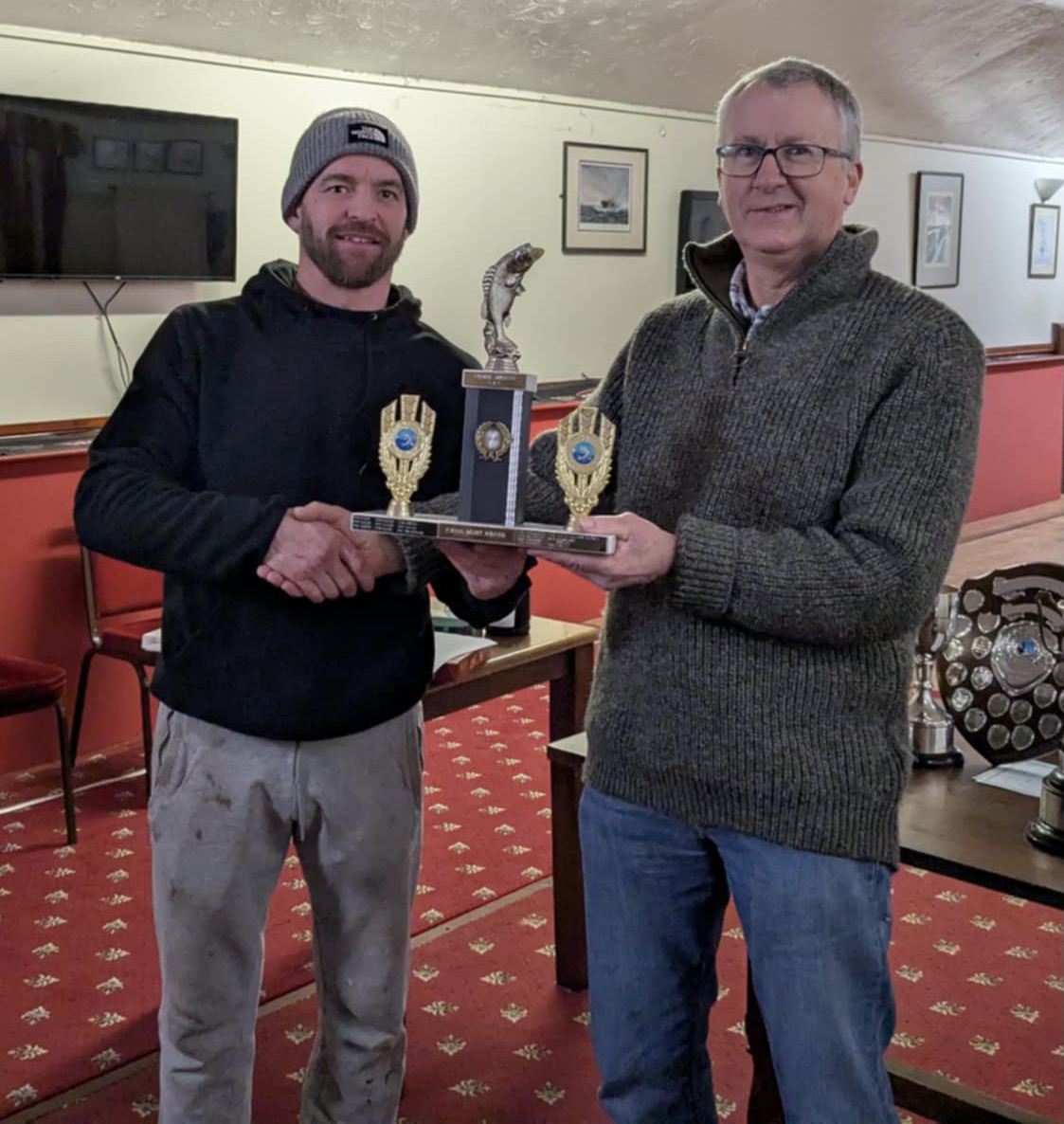
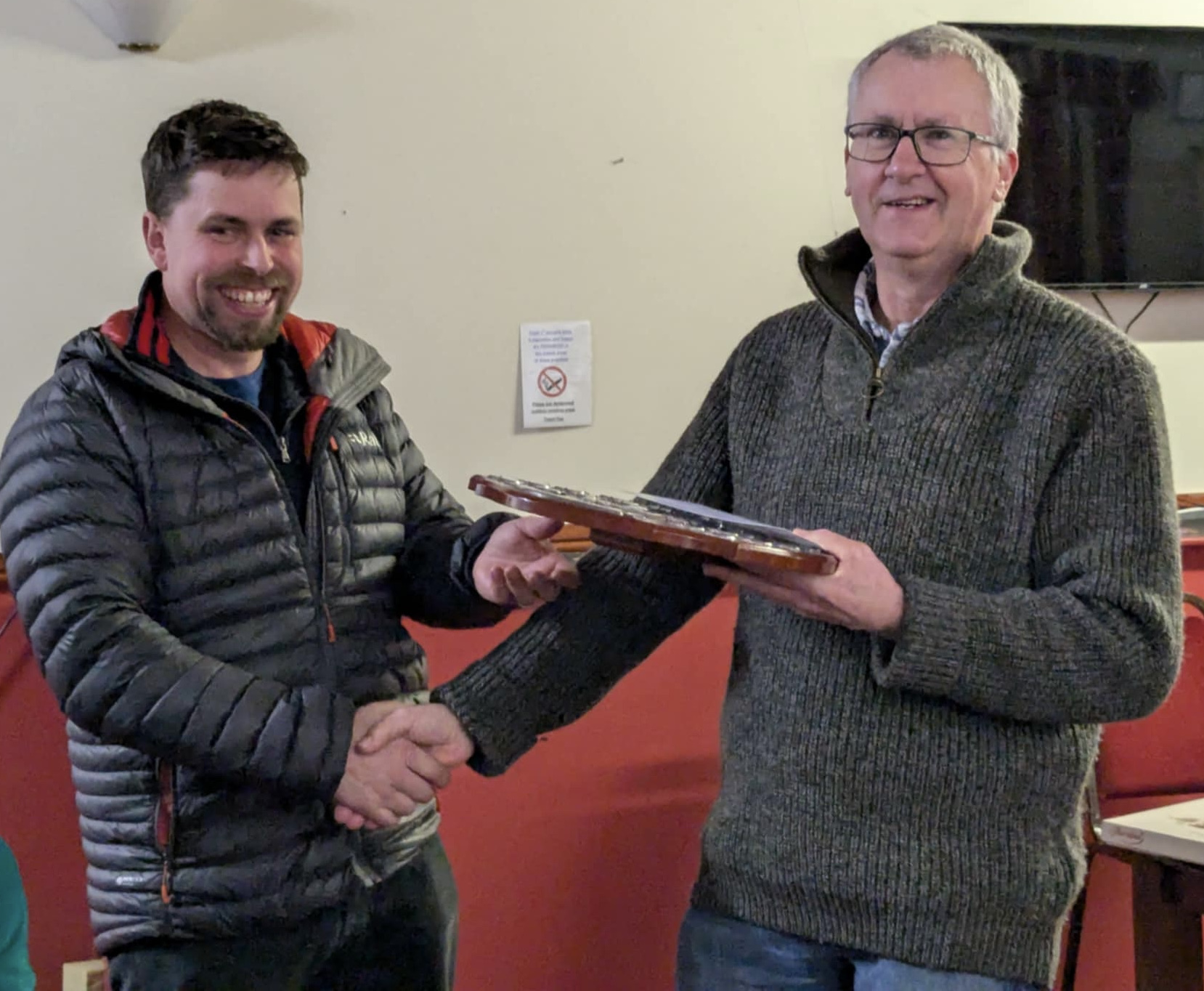

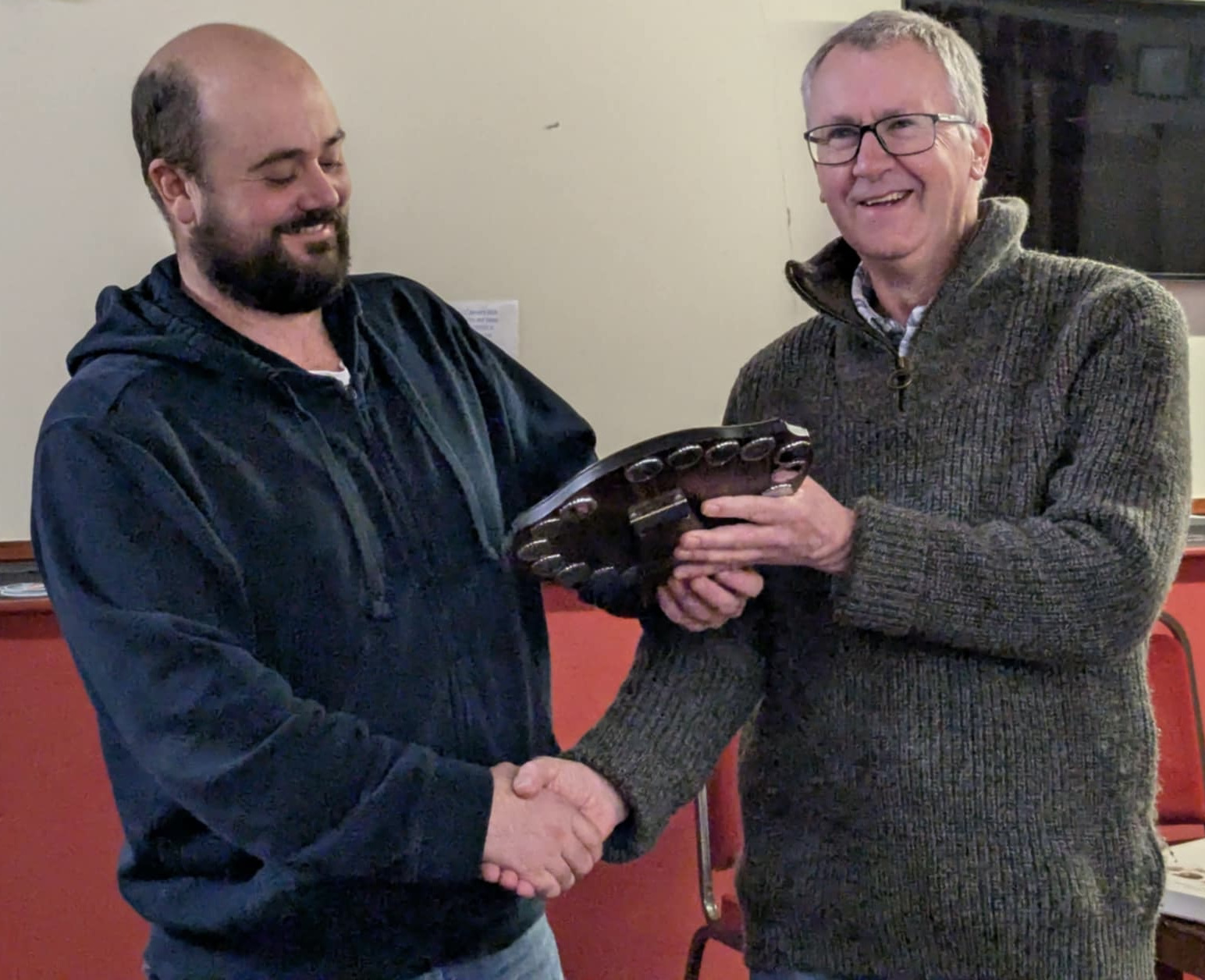
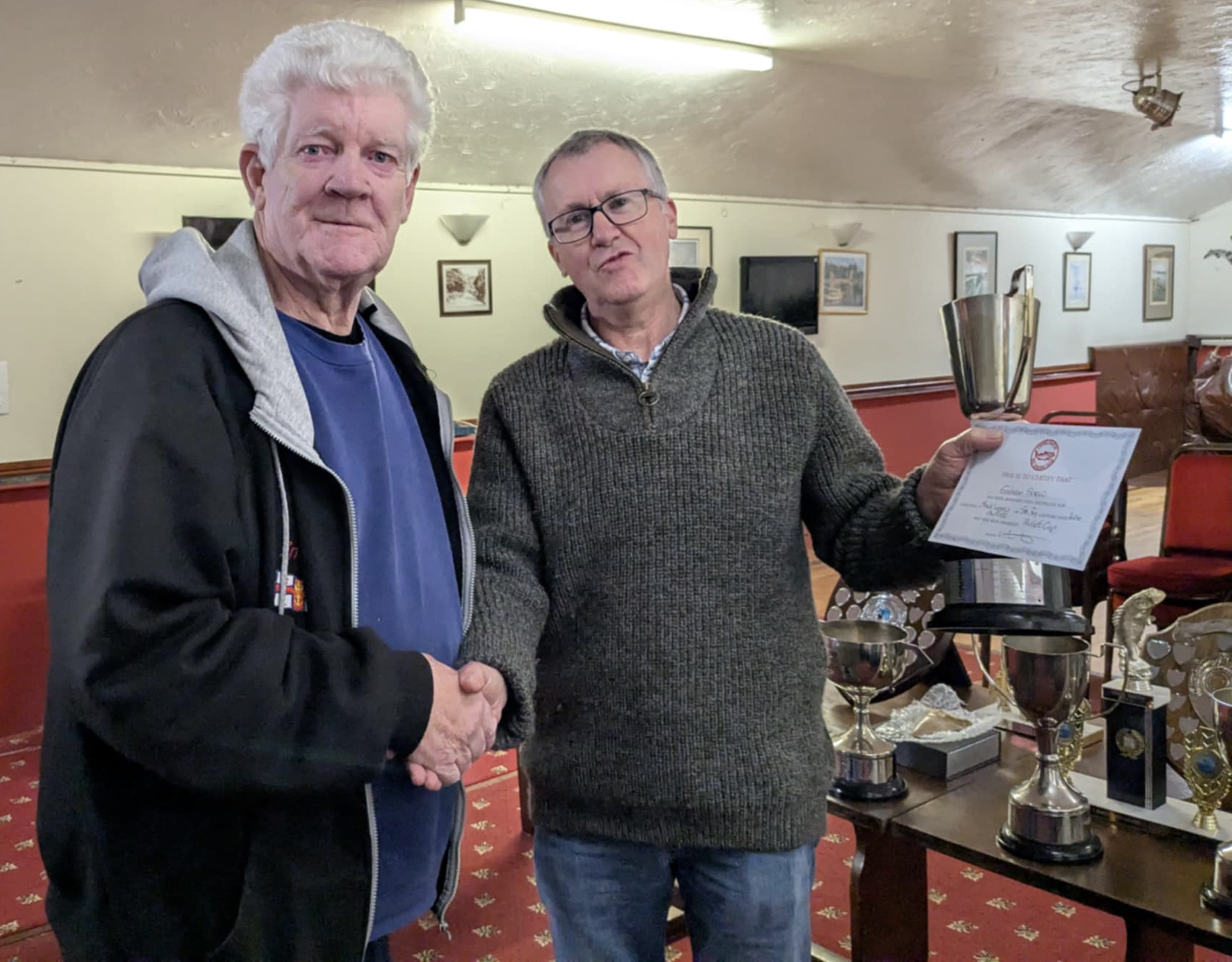
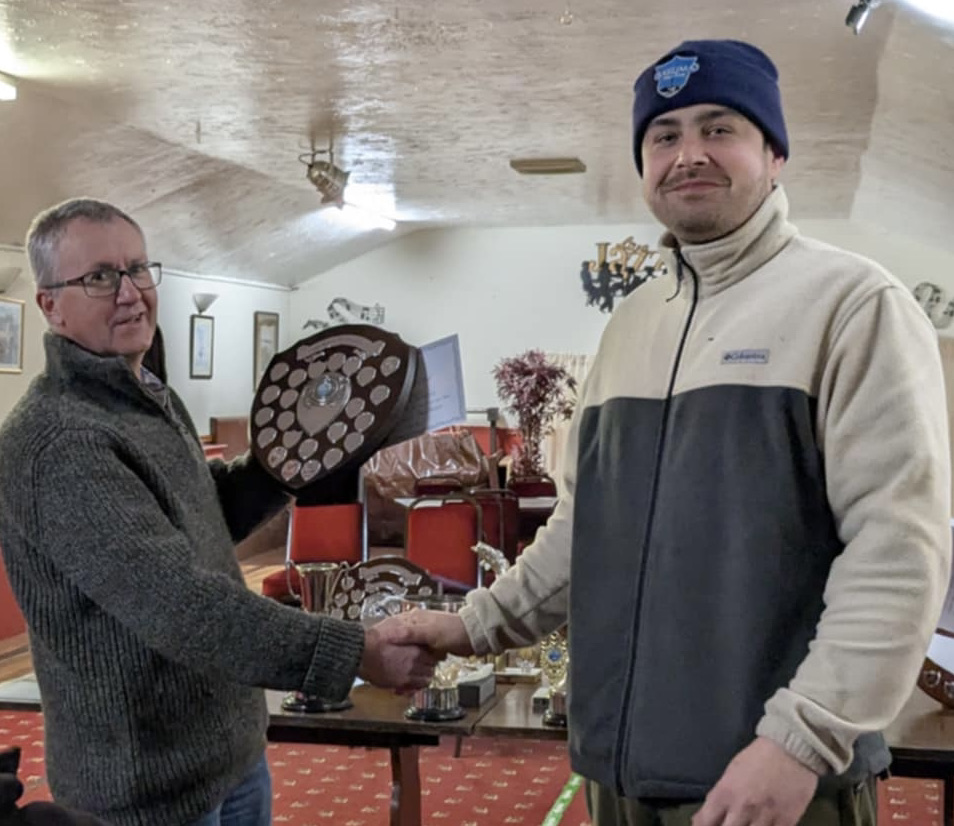
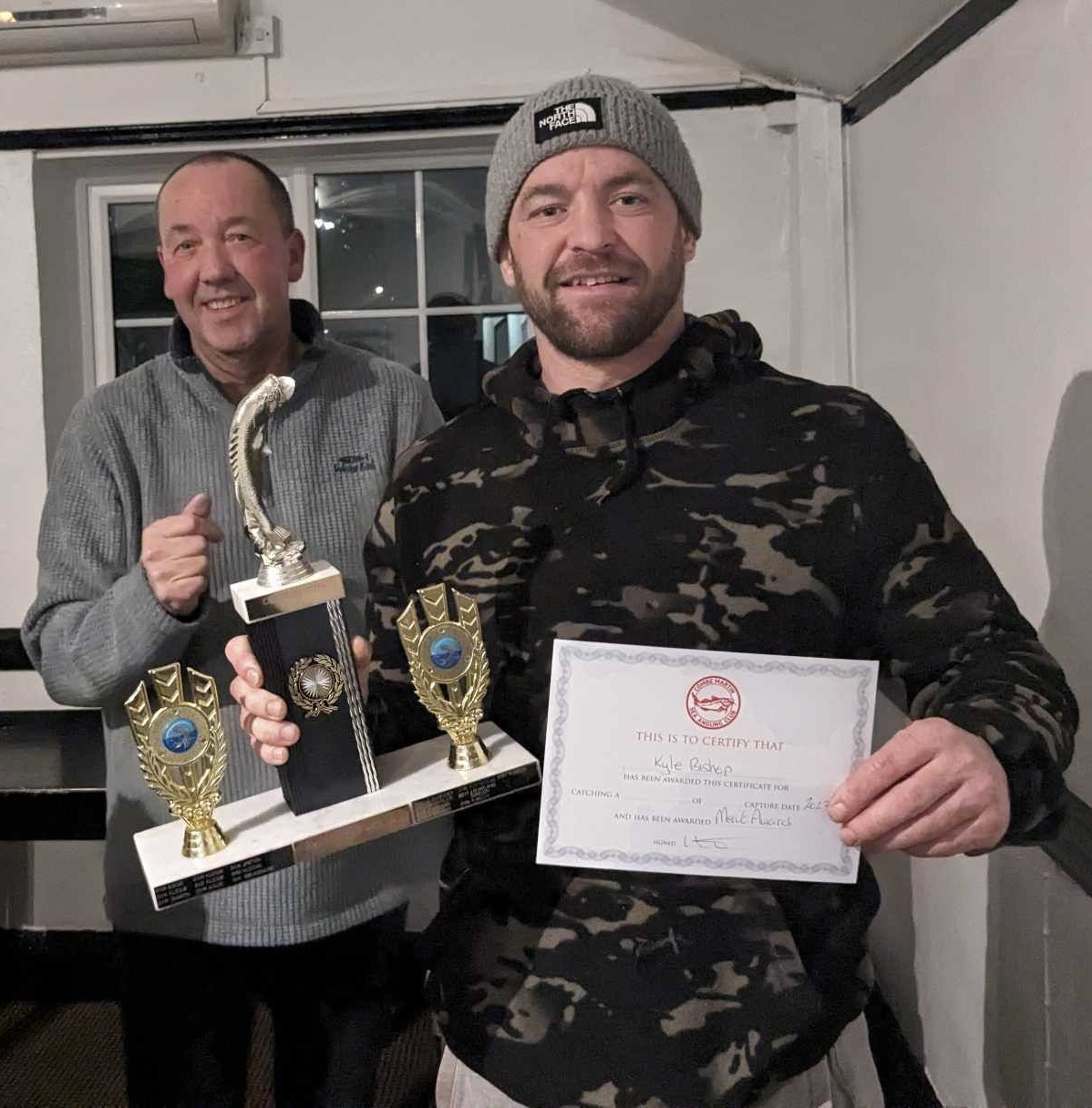

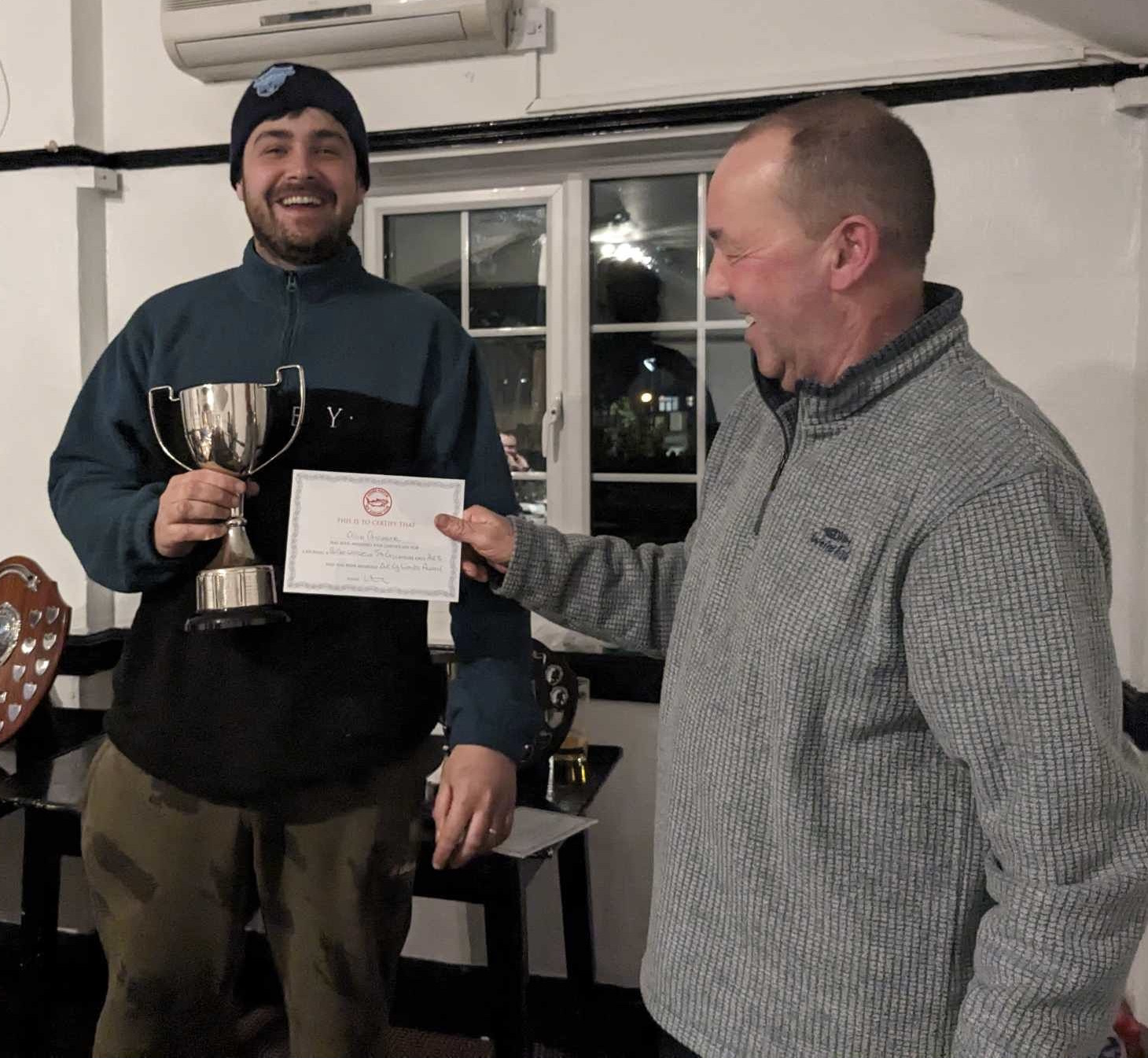
The AGM was attended by 19 club members. The only substantial change was that competition entry for standard competitions has risen to £10 reflecting changing times and relative value of money. A £5.00 entry fee had been in place for over twenty years. The increased entry fee makes the prize money more attractive.
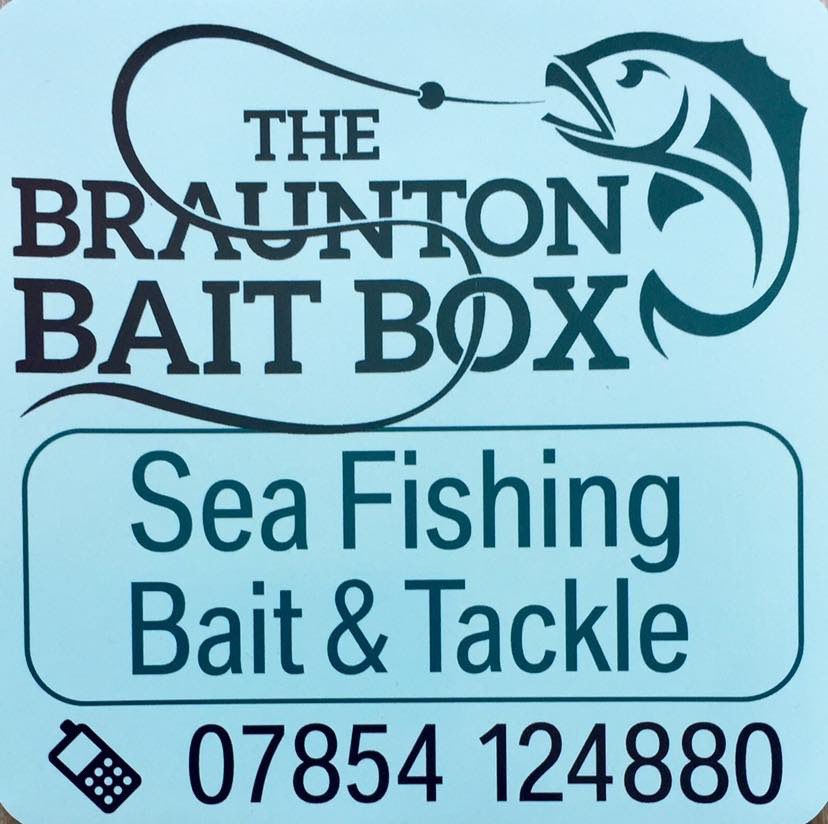

|
Open Day Venue |
|
Snowbee, Mercator House, 22 Brest Road, Derriford, Plymouth, Devon. PL6 5XP |

https://news.snowbee.co.uk/c/AQj02g4QlqN4GJiR4ZcBILCAshhyjTn_OS2q_PCLp0Ch0HXk8zo_wMqYKgv_F4O88WY0hw